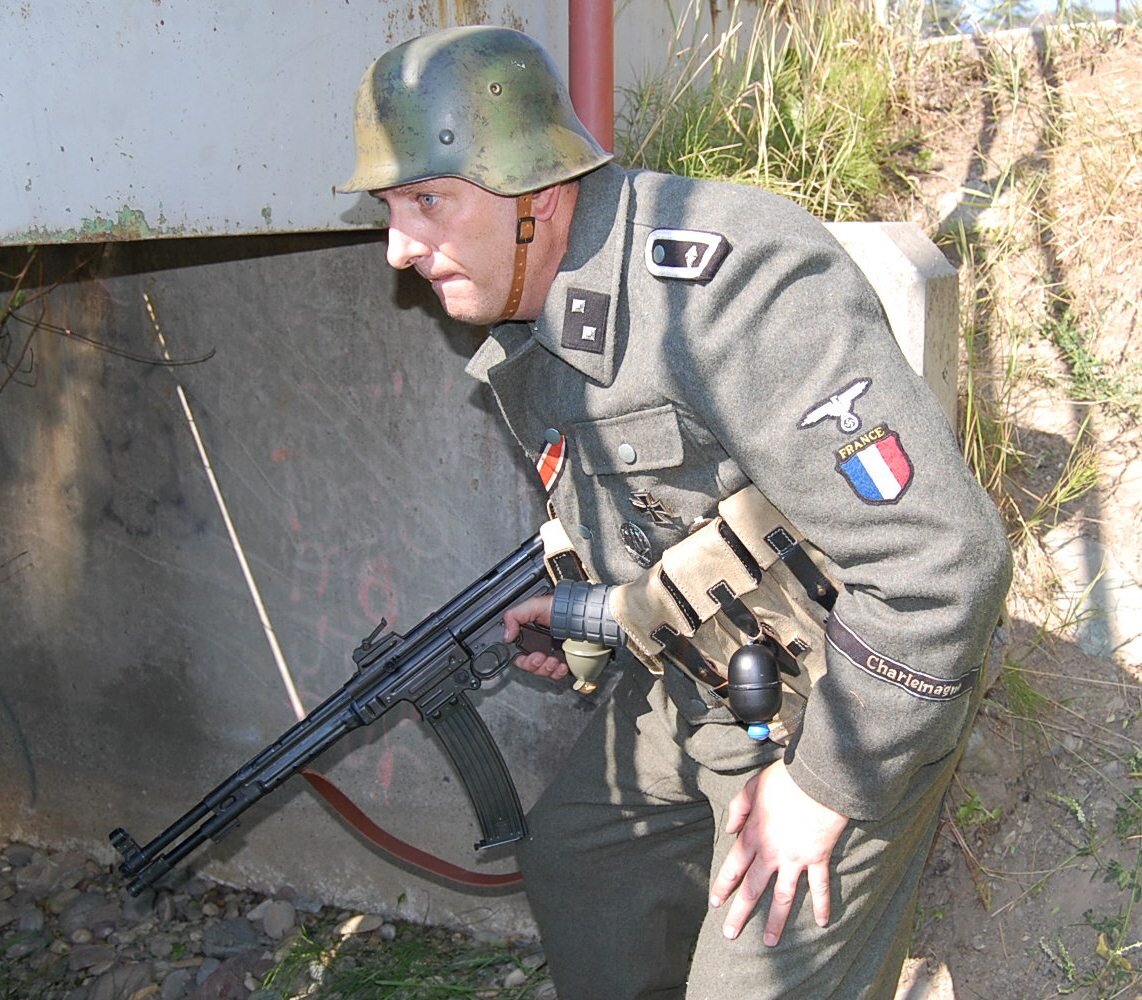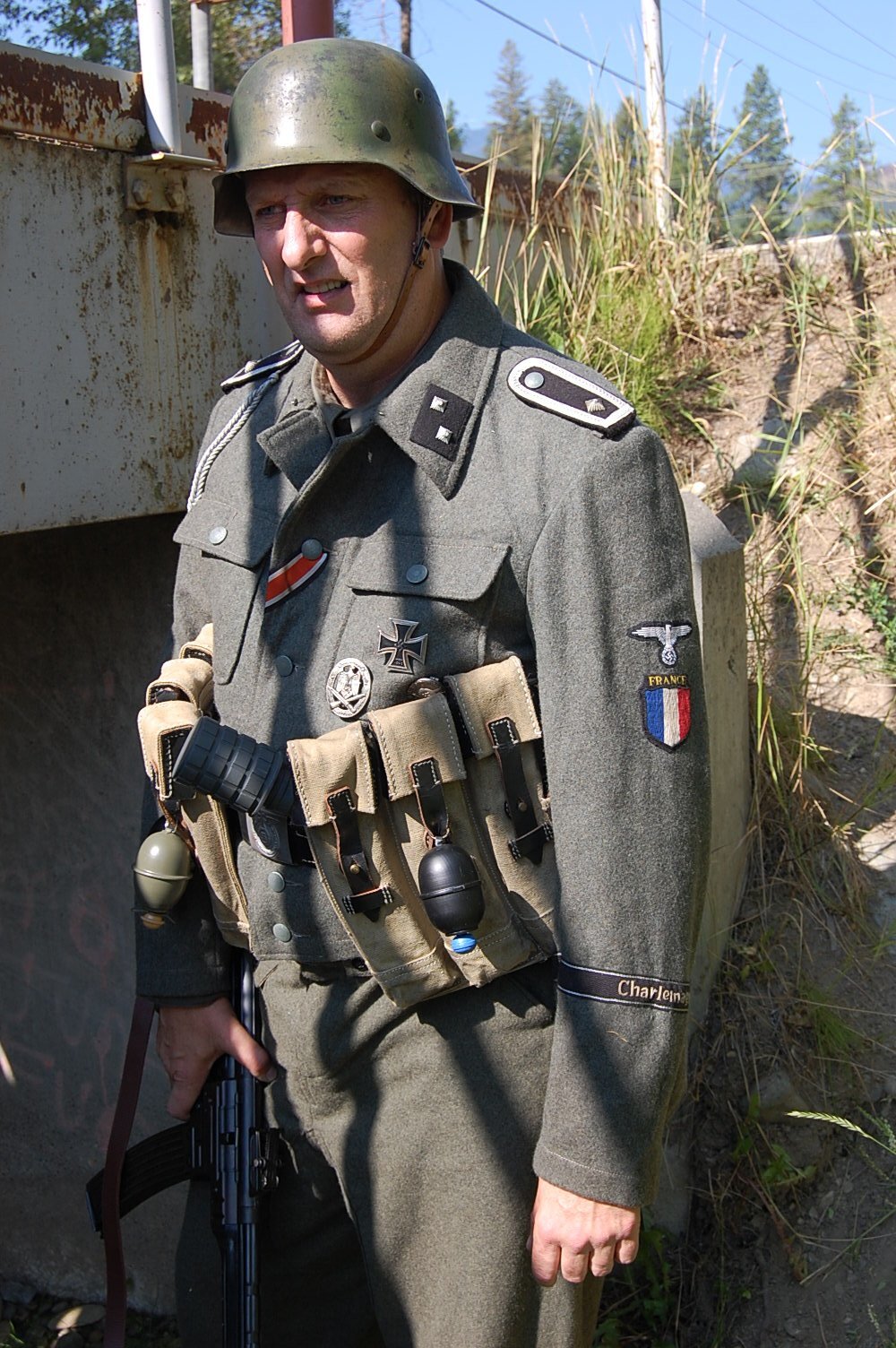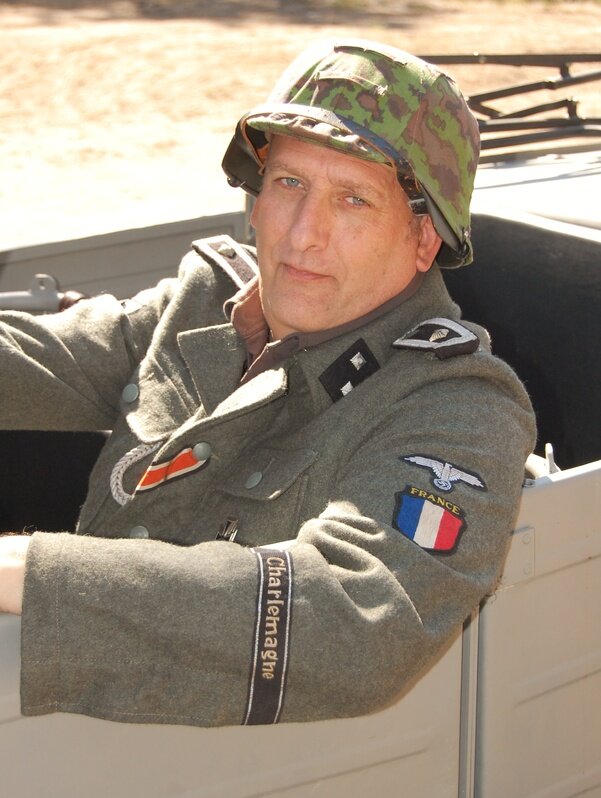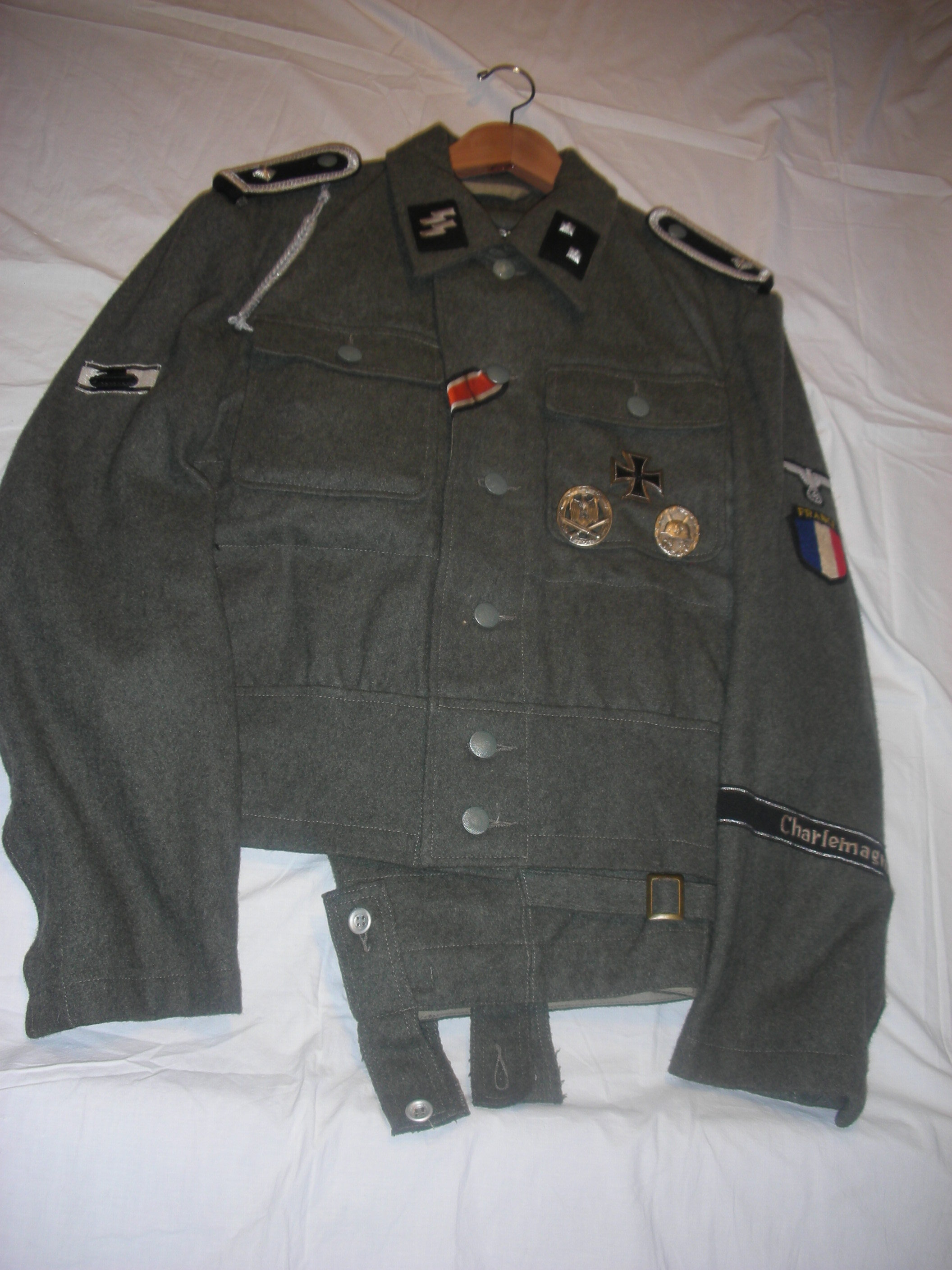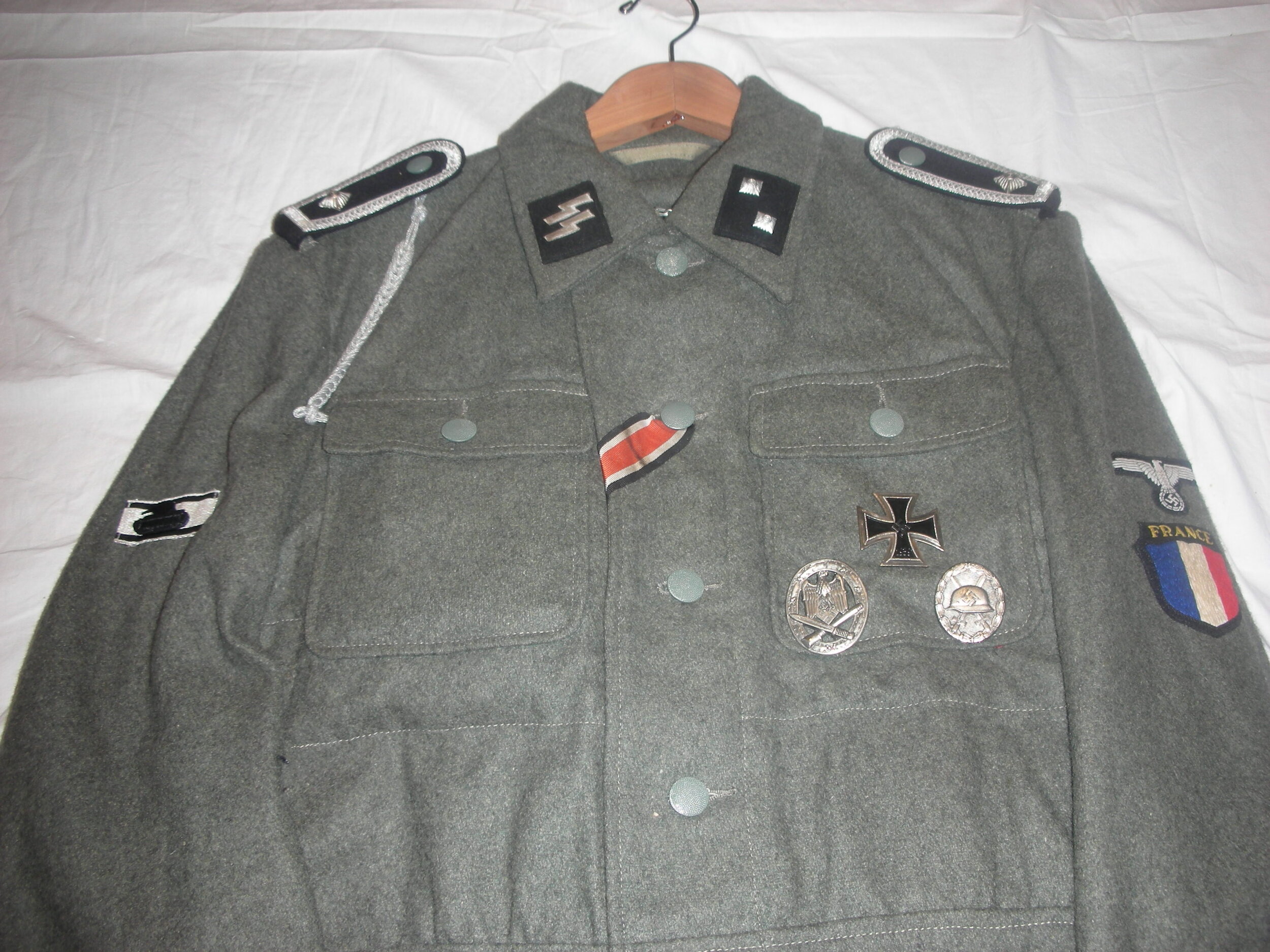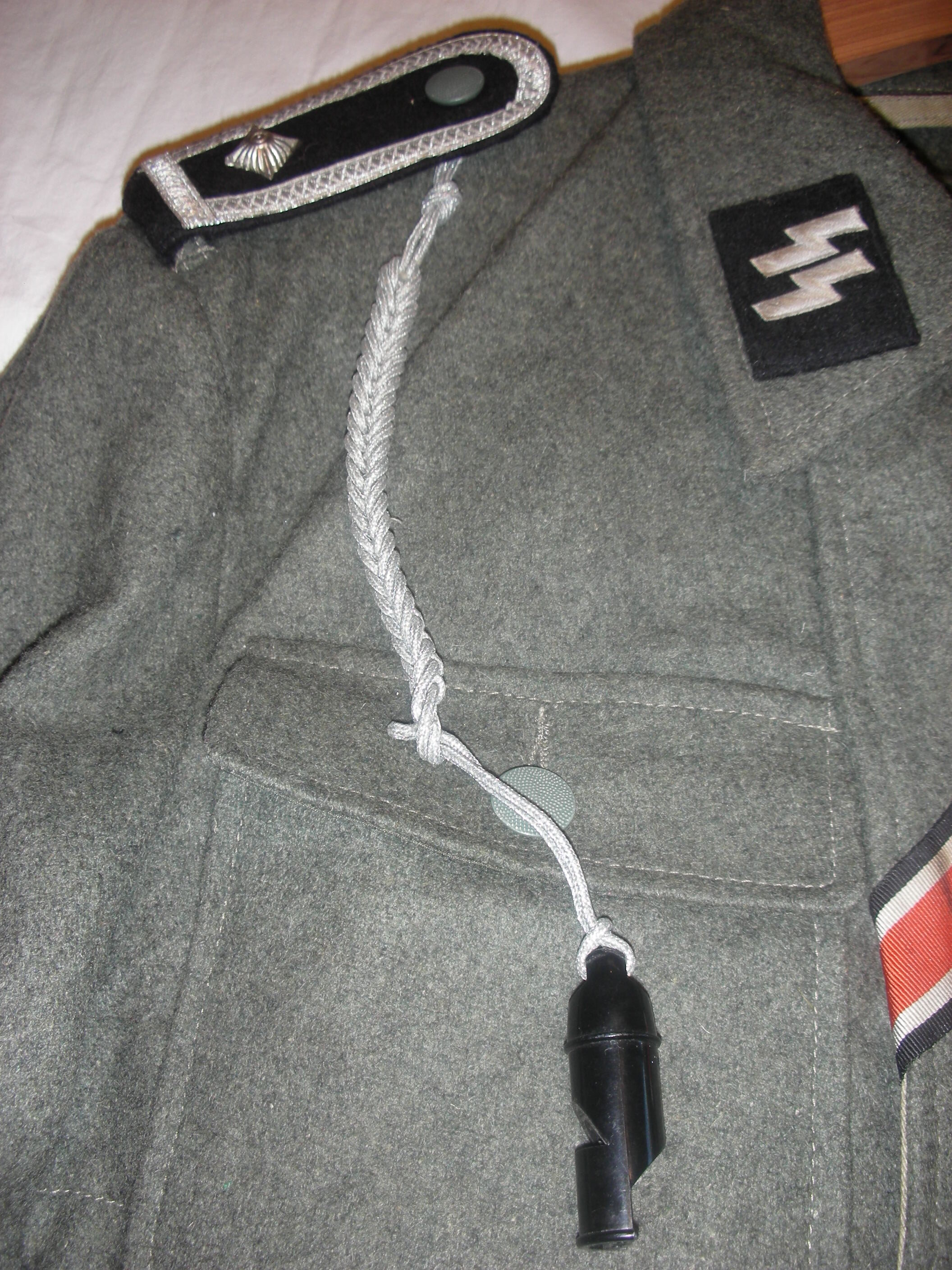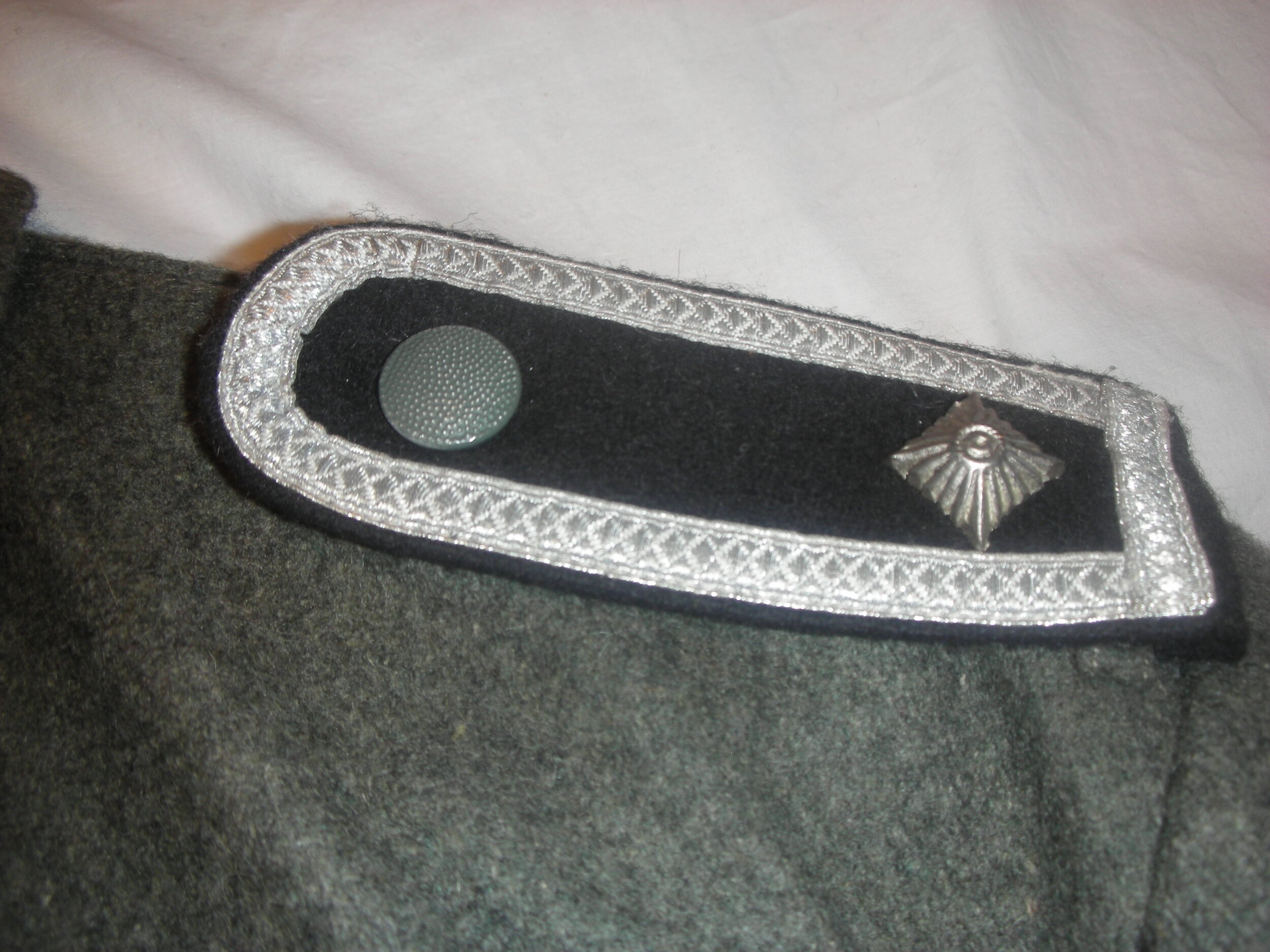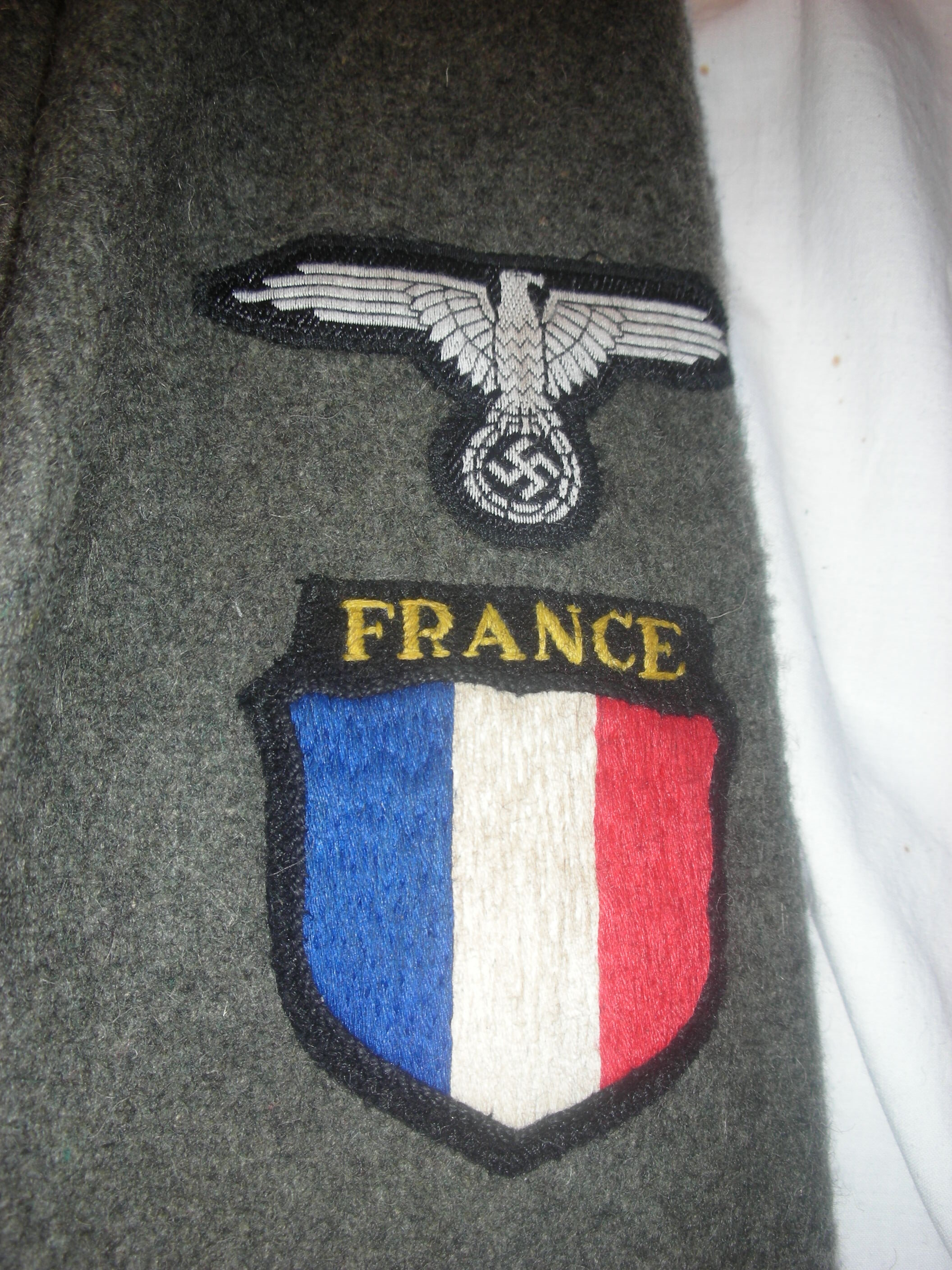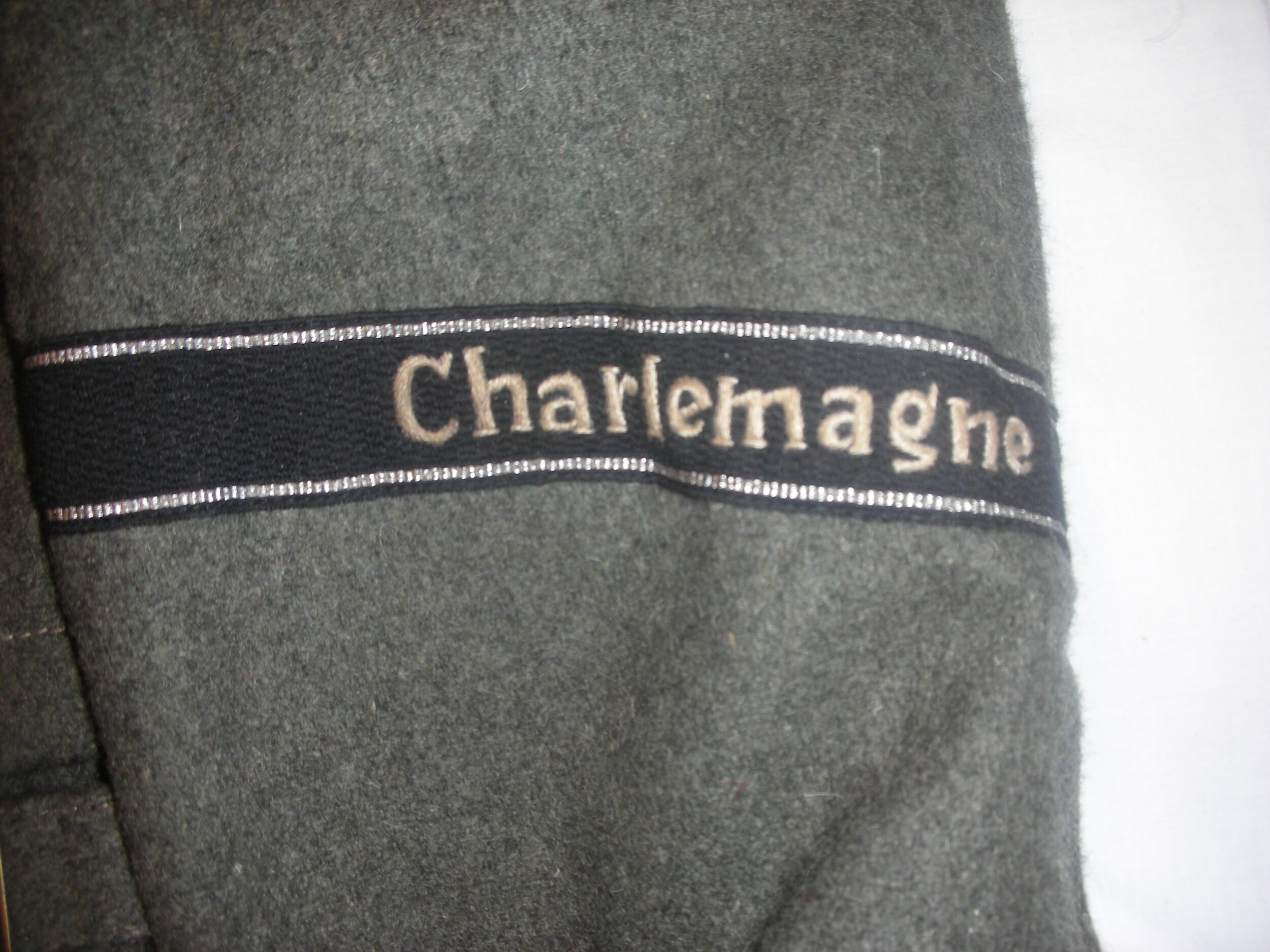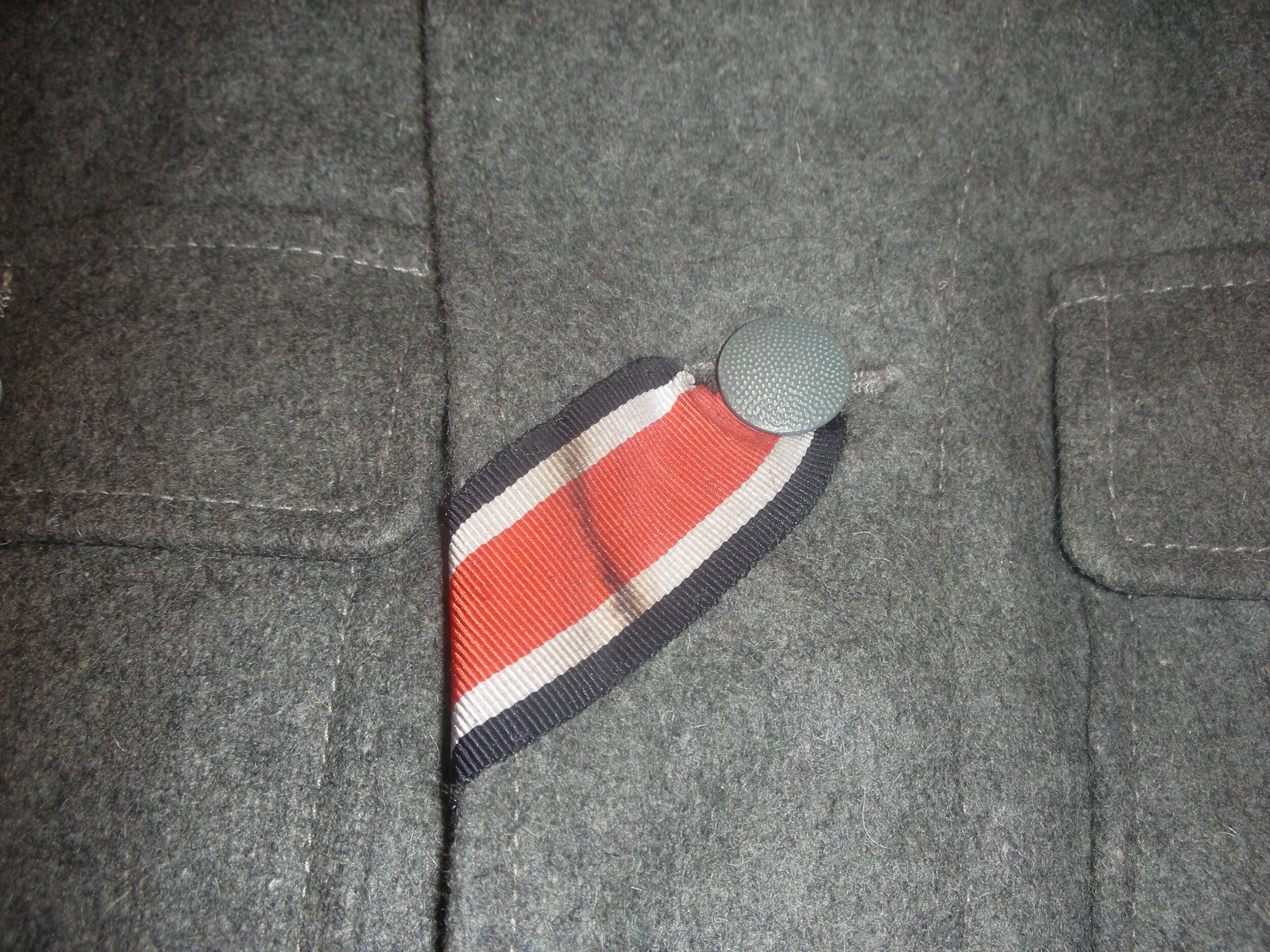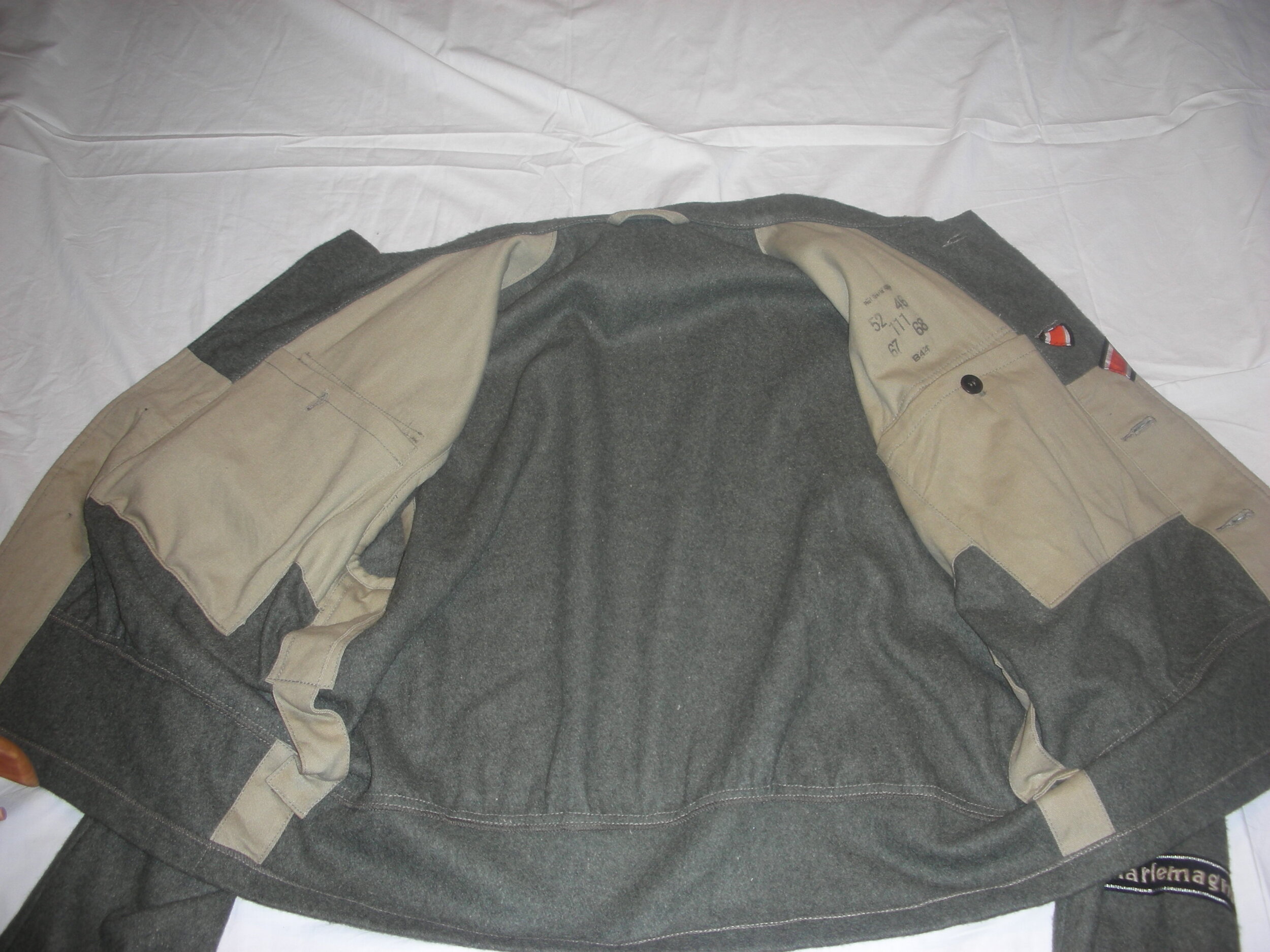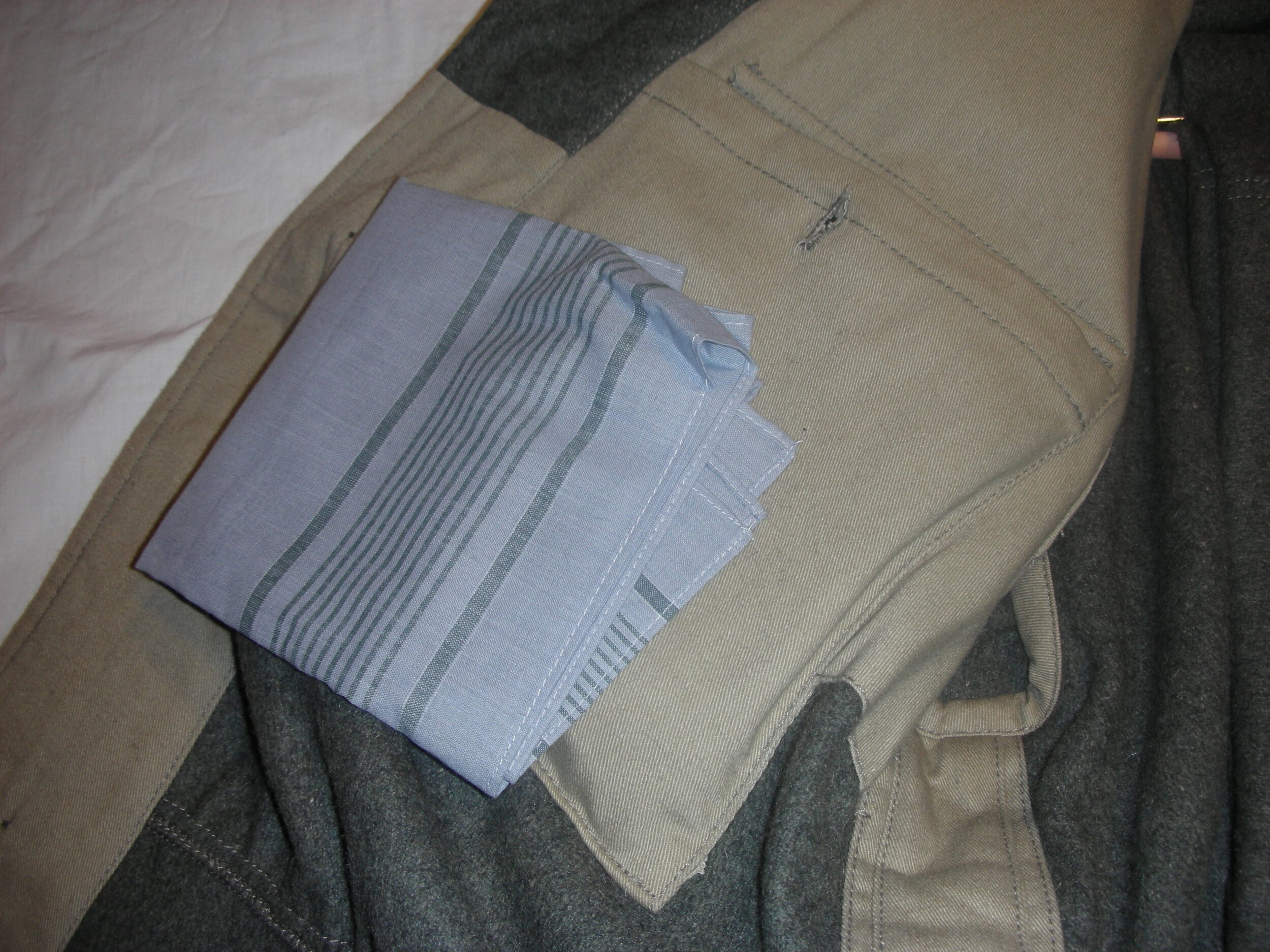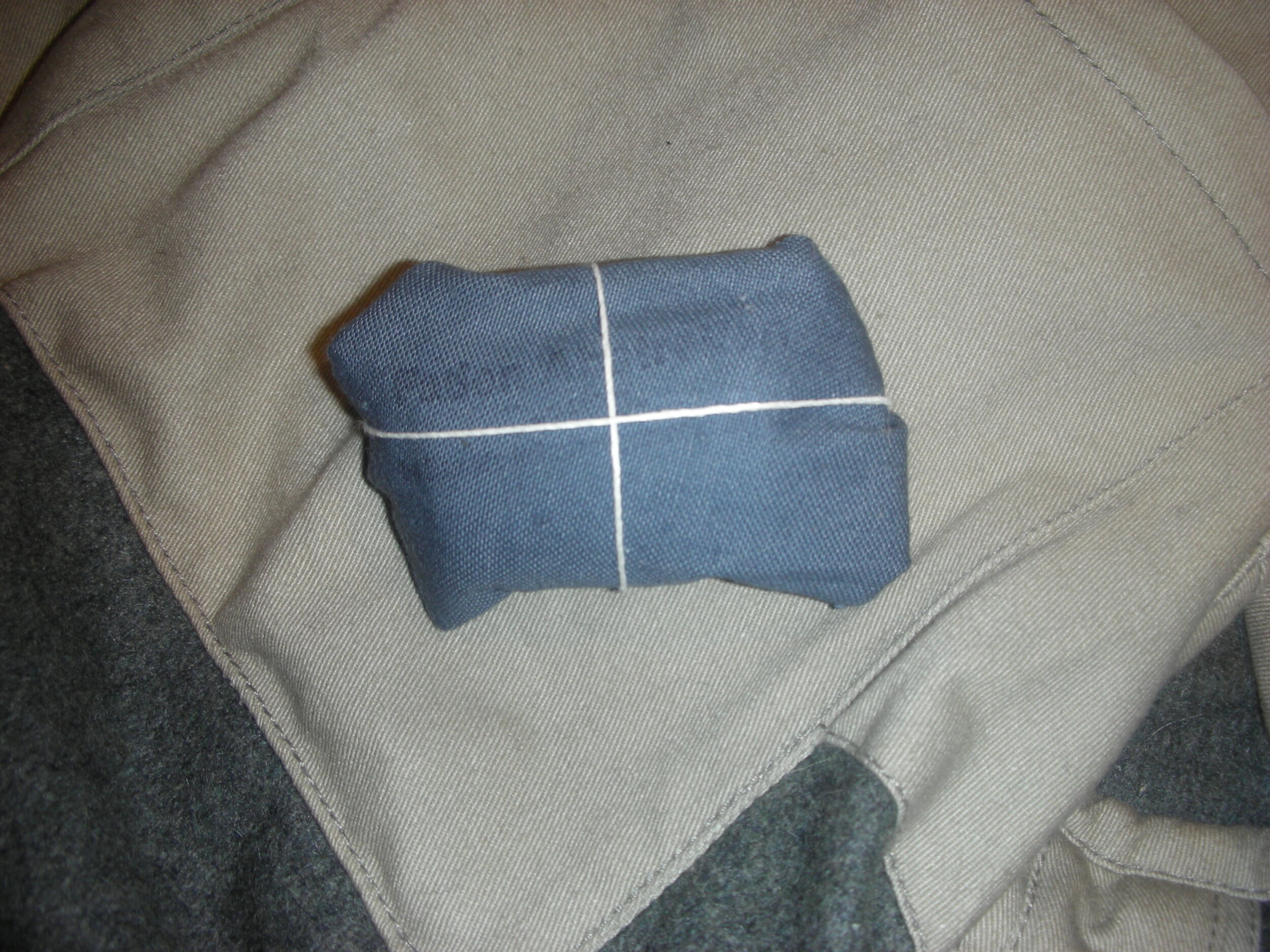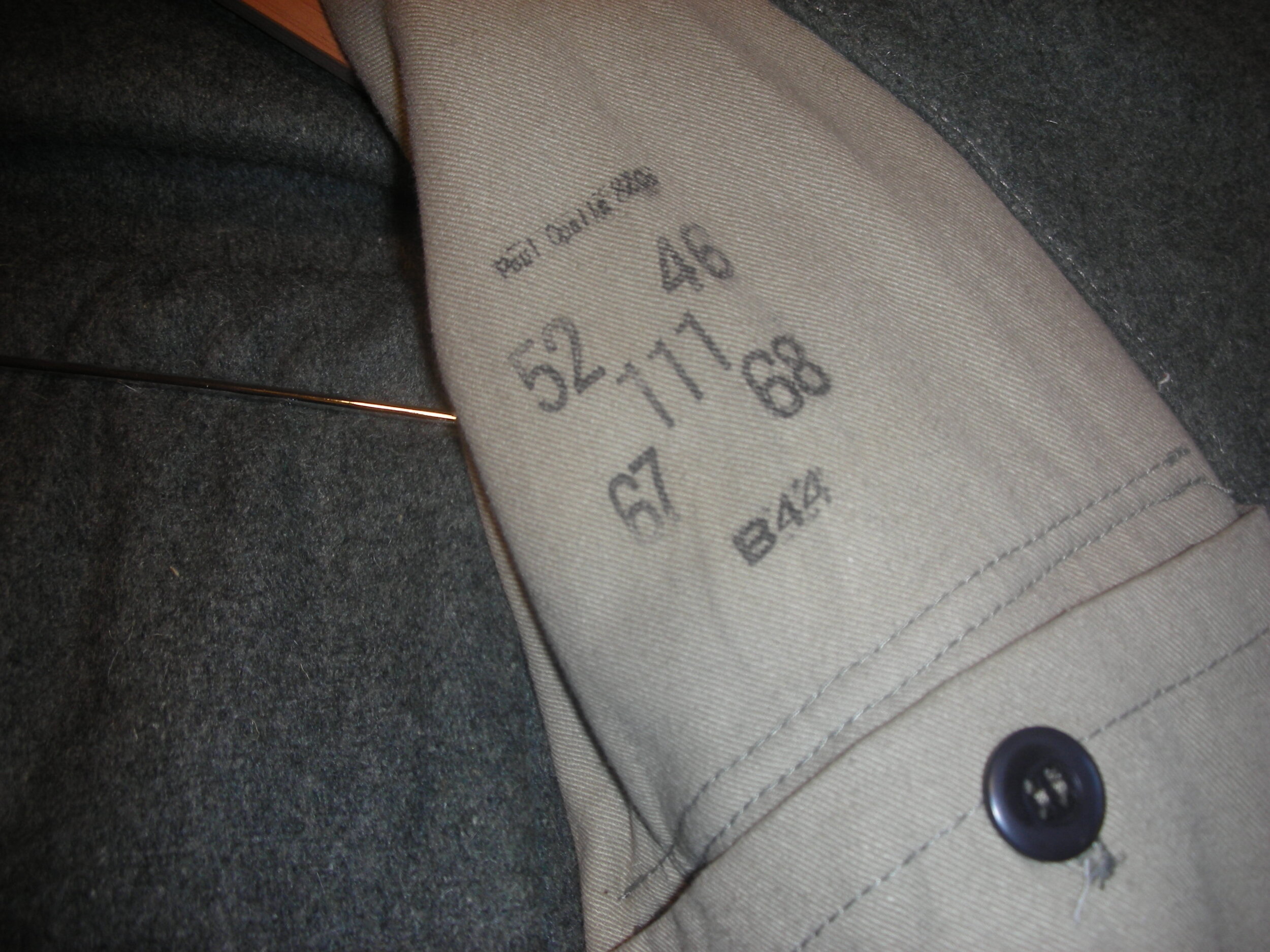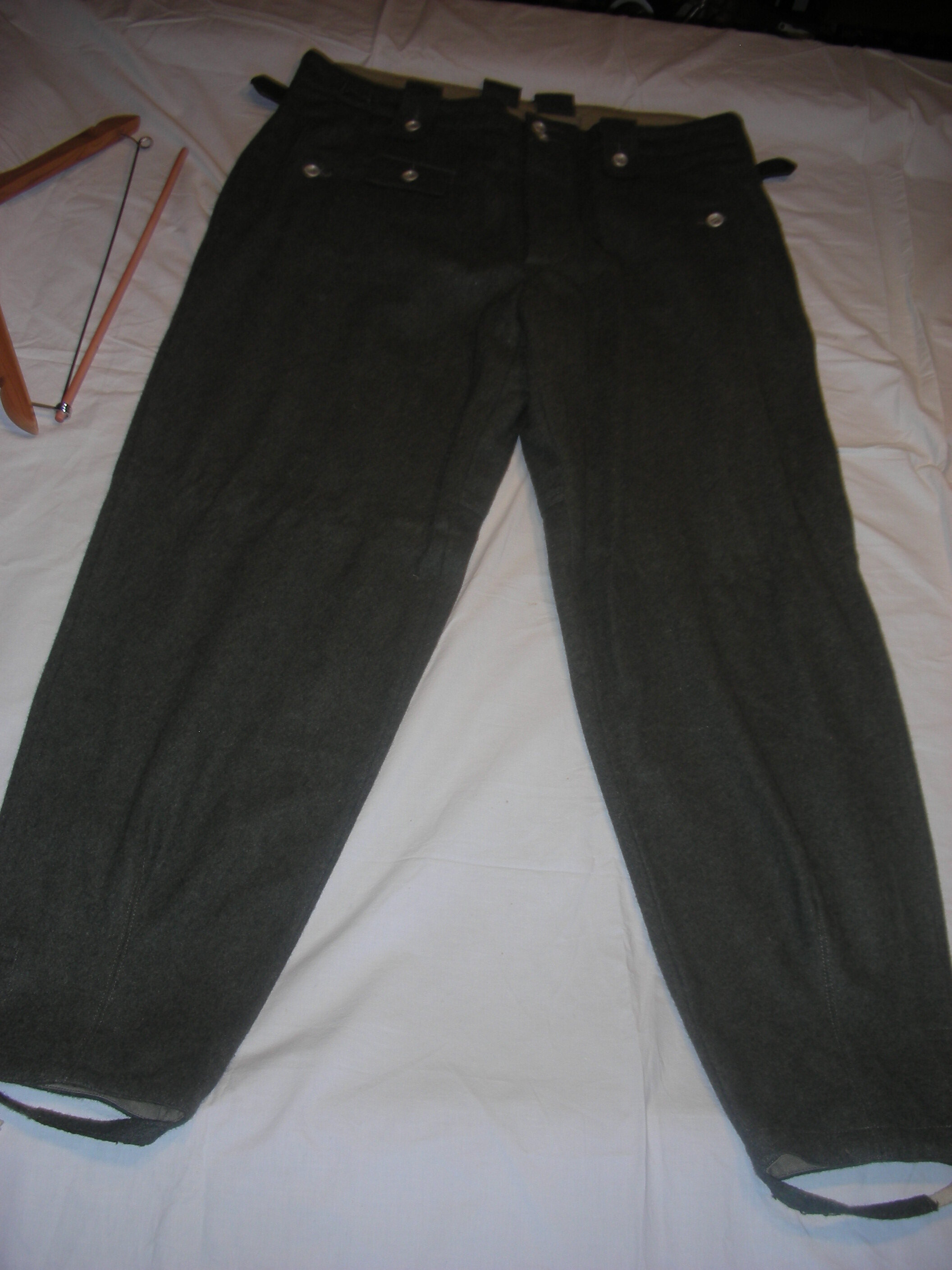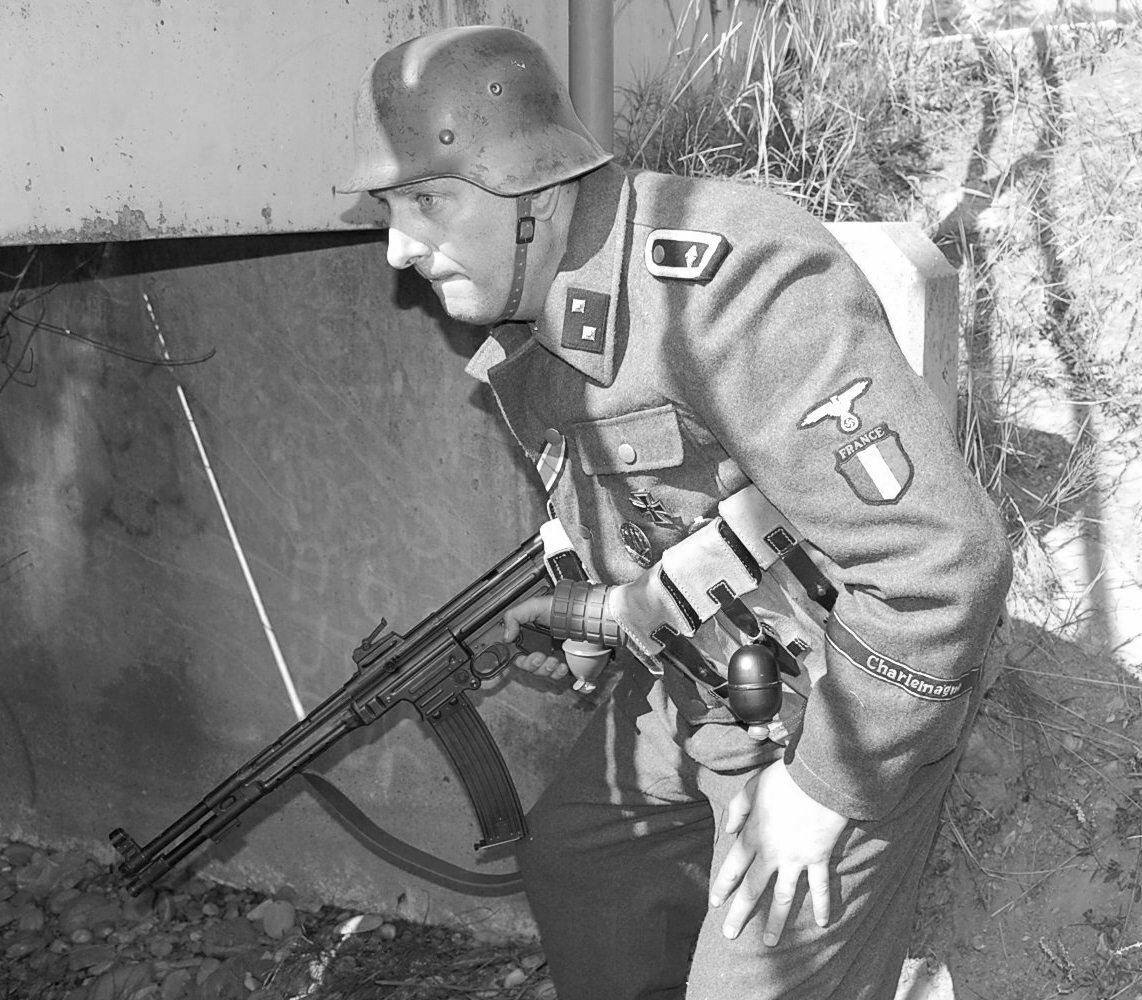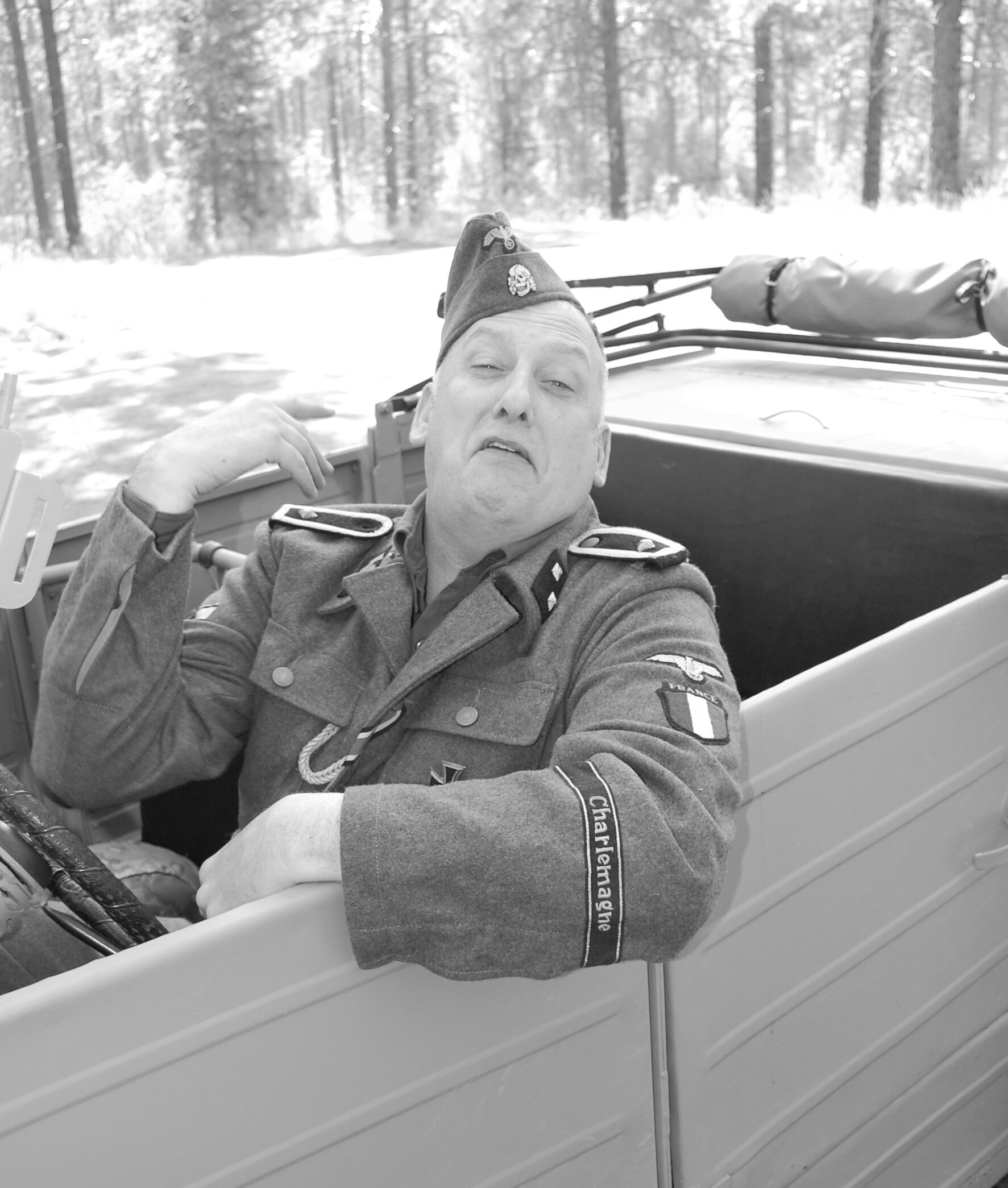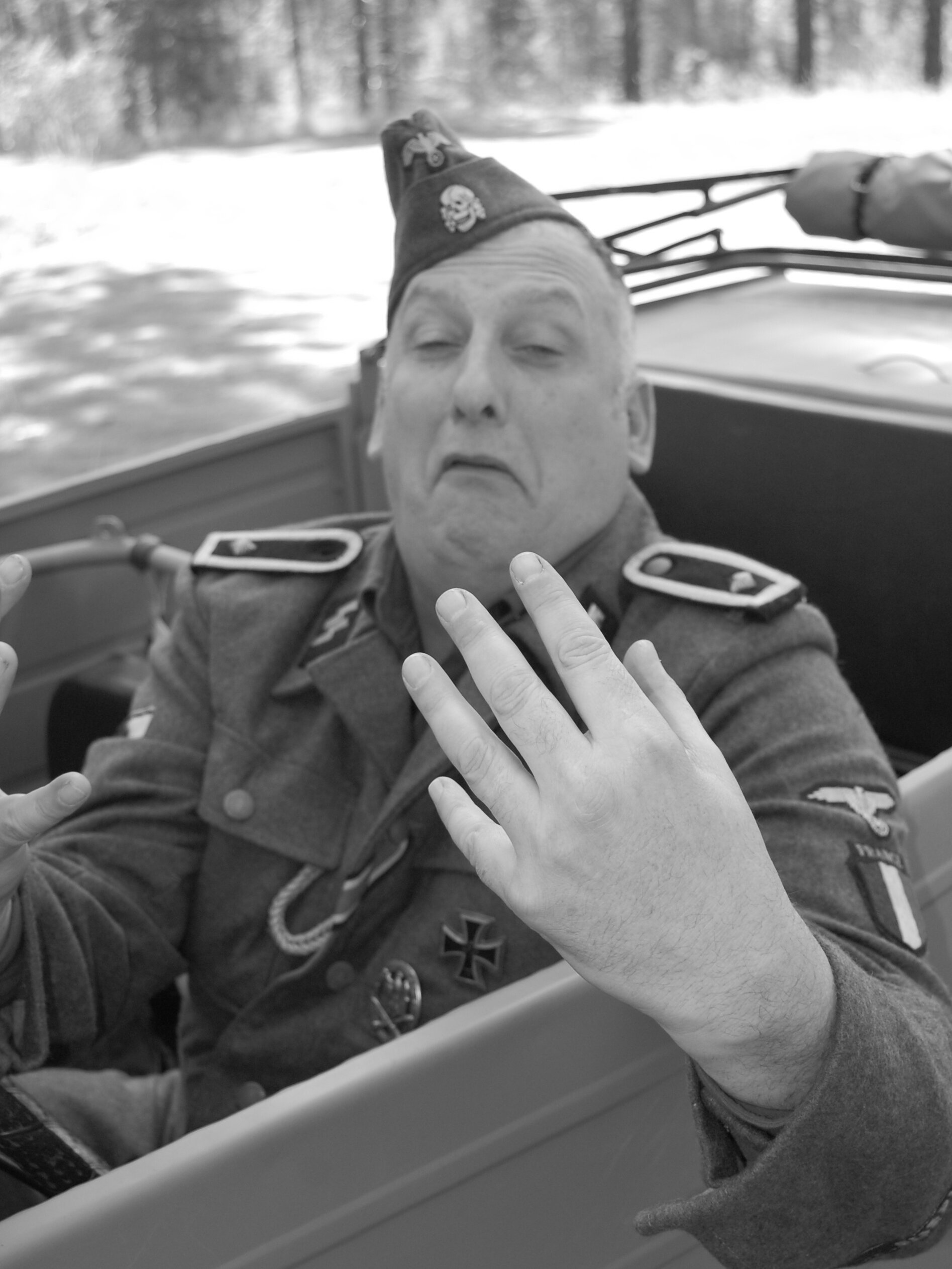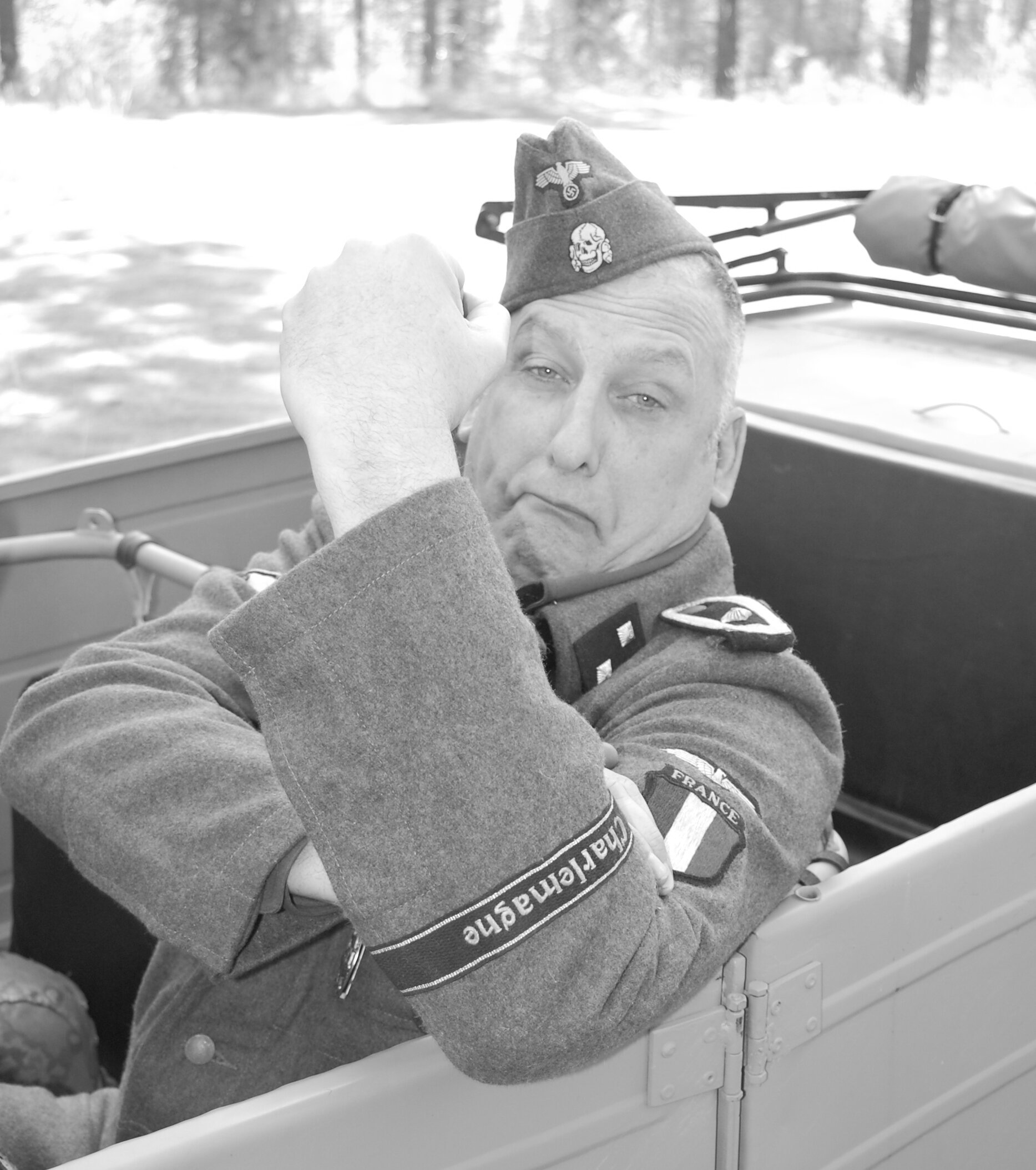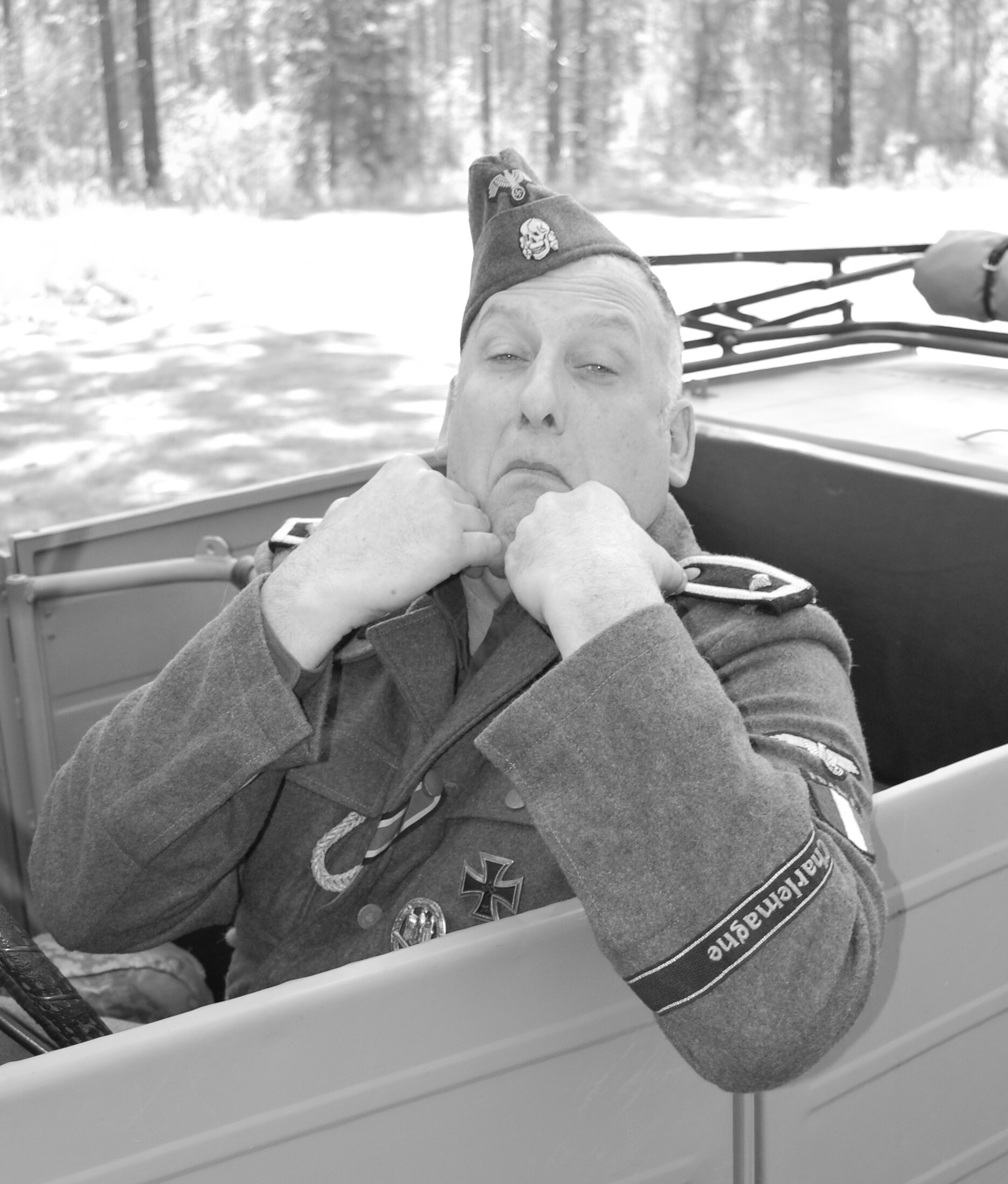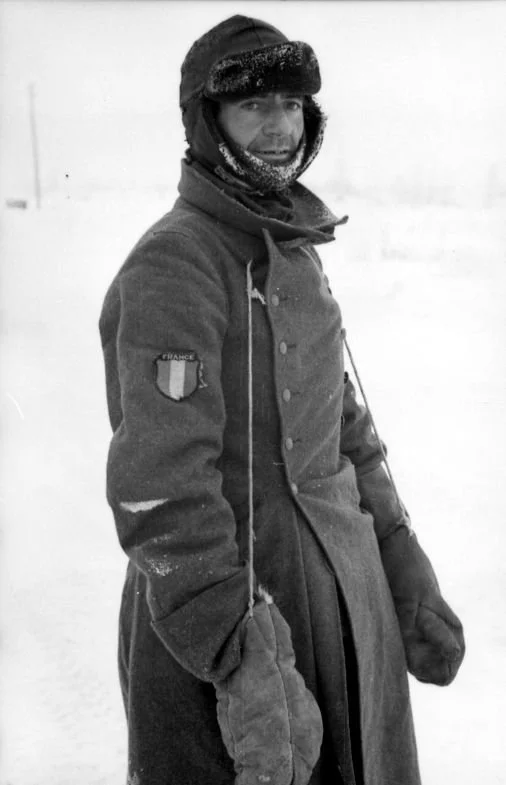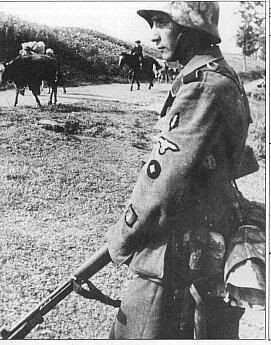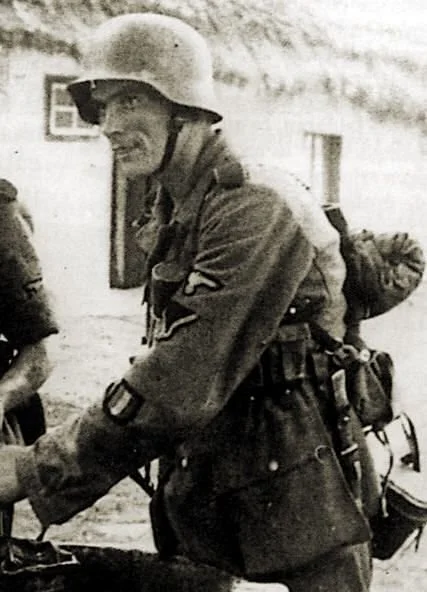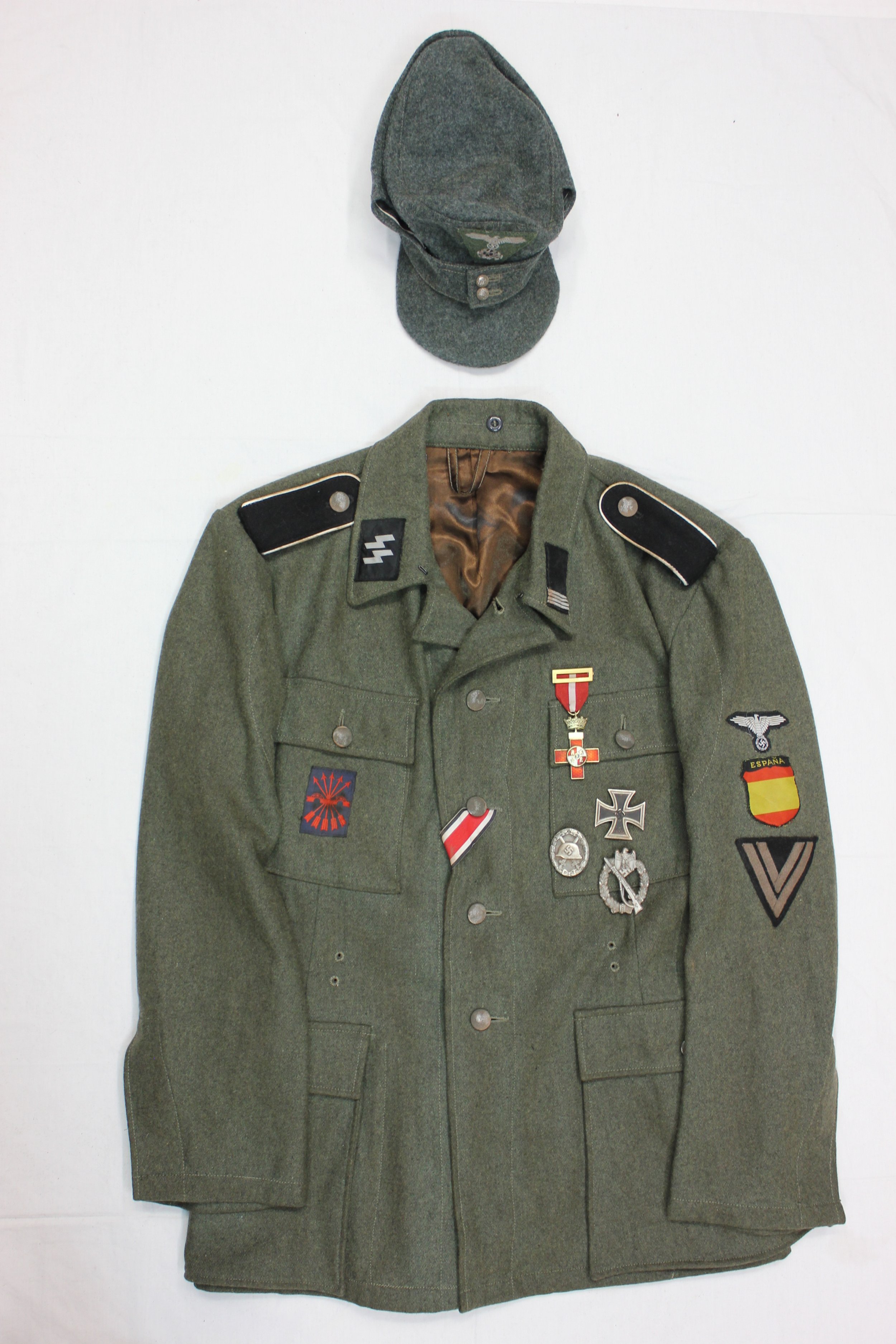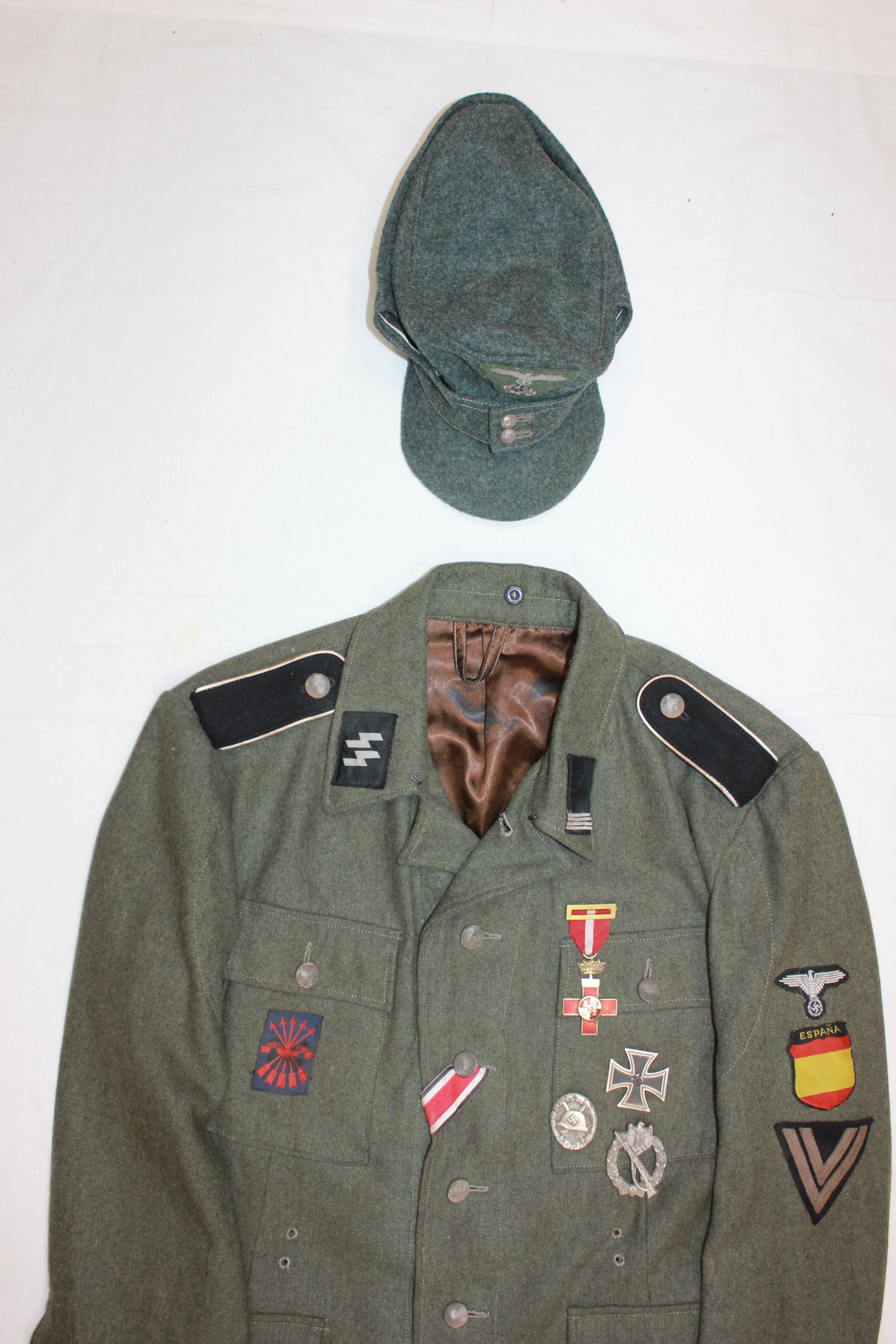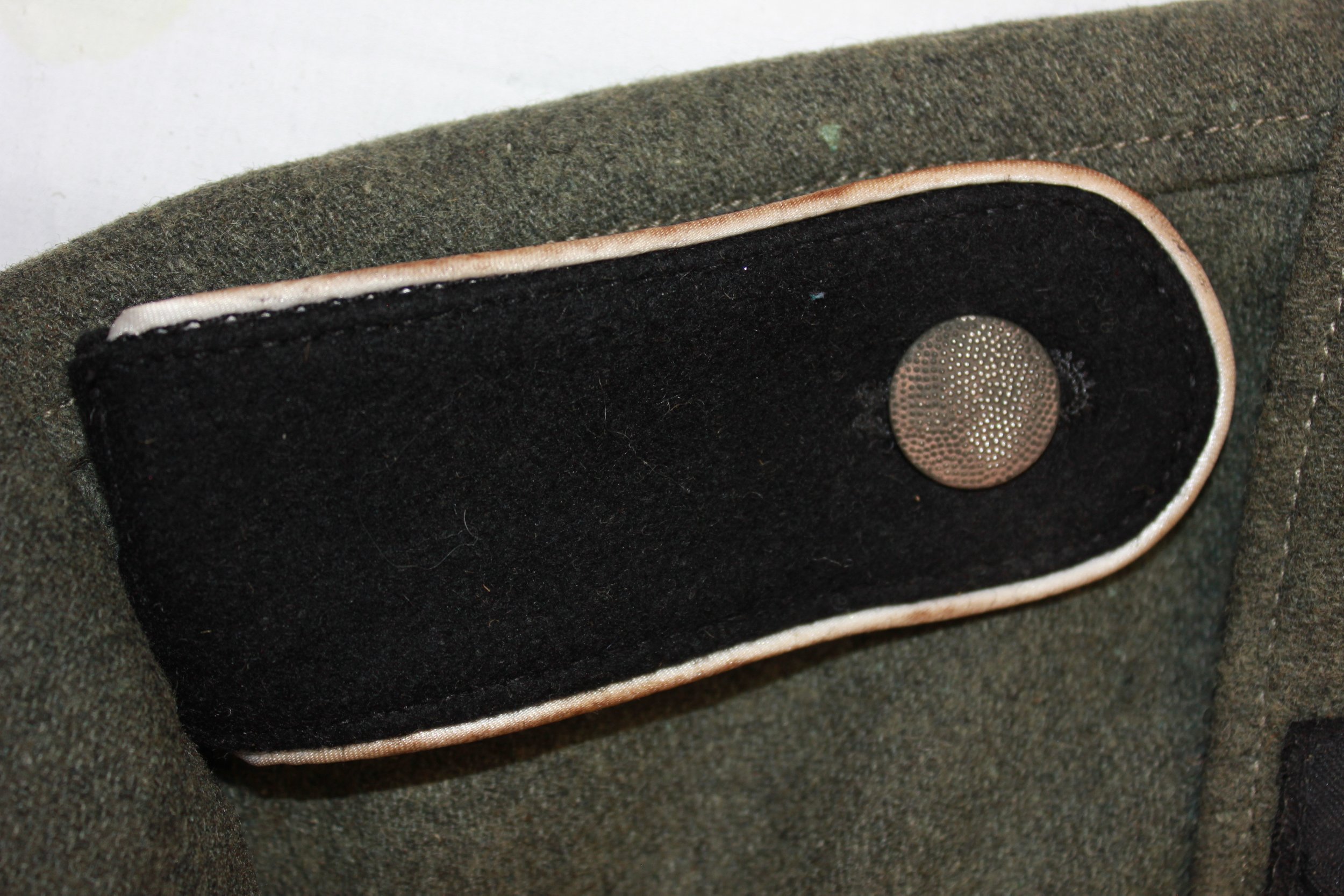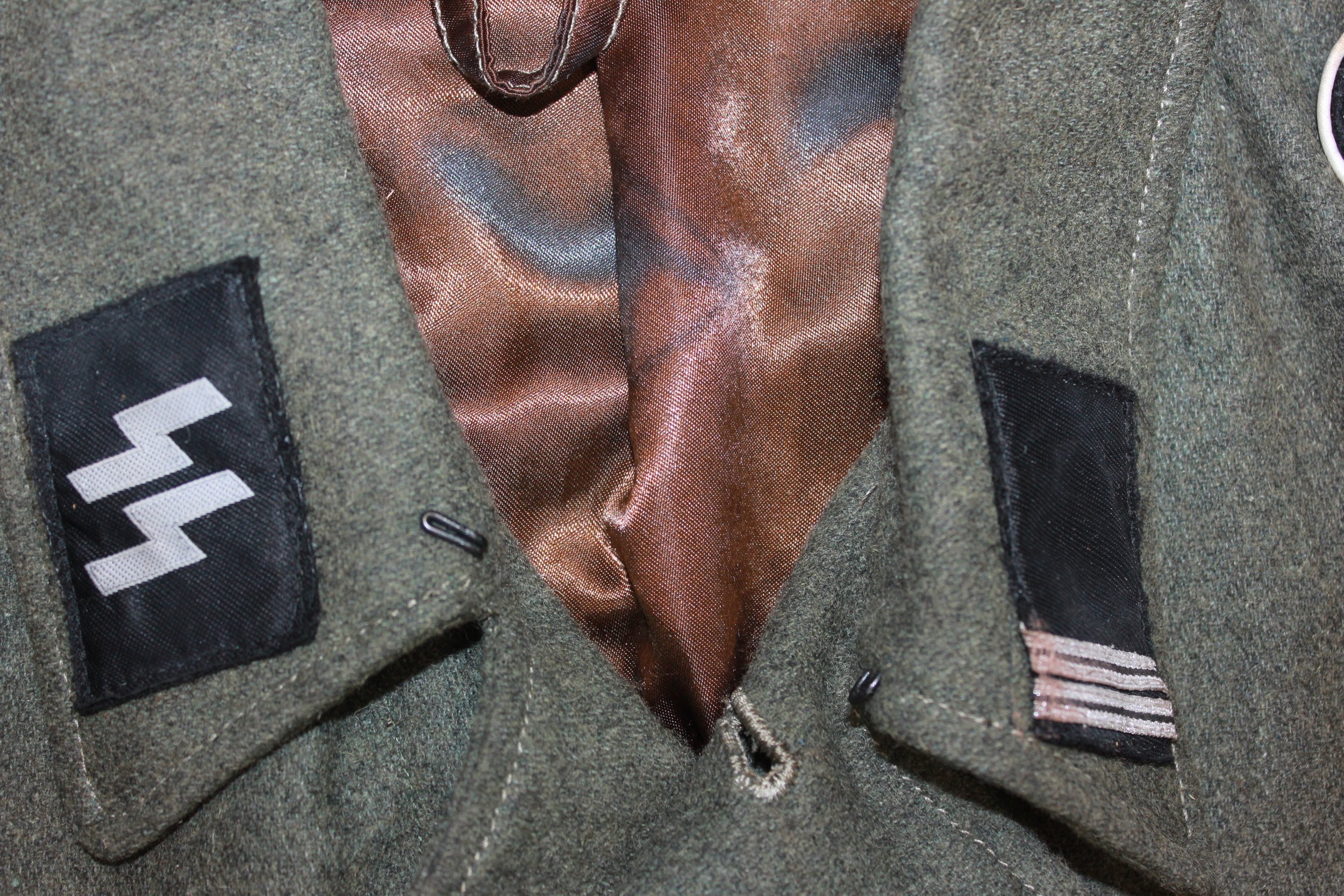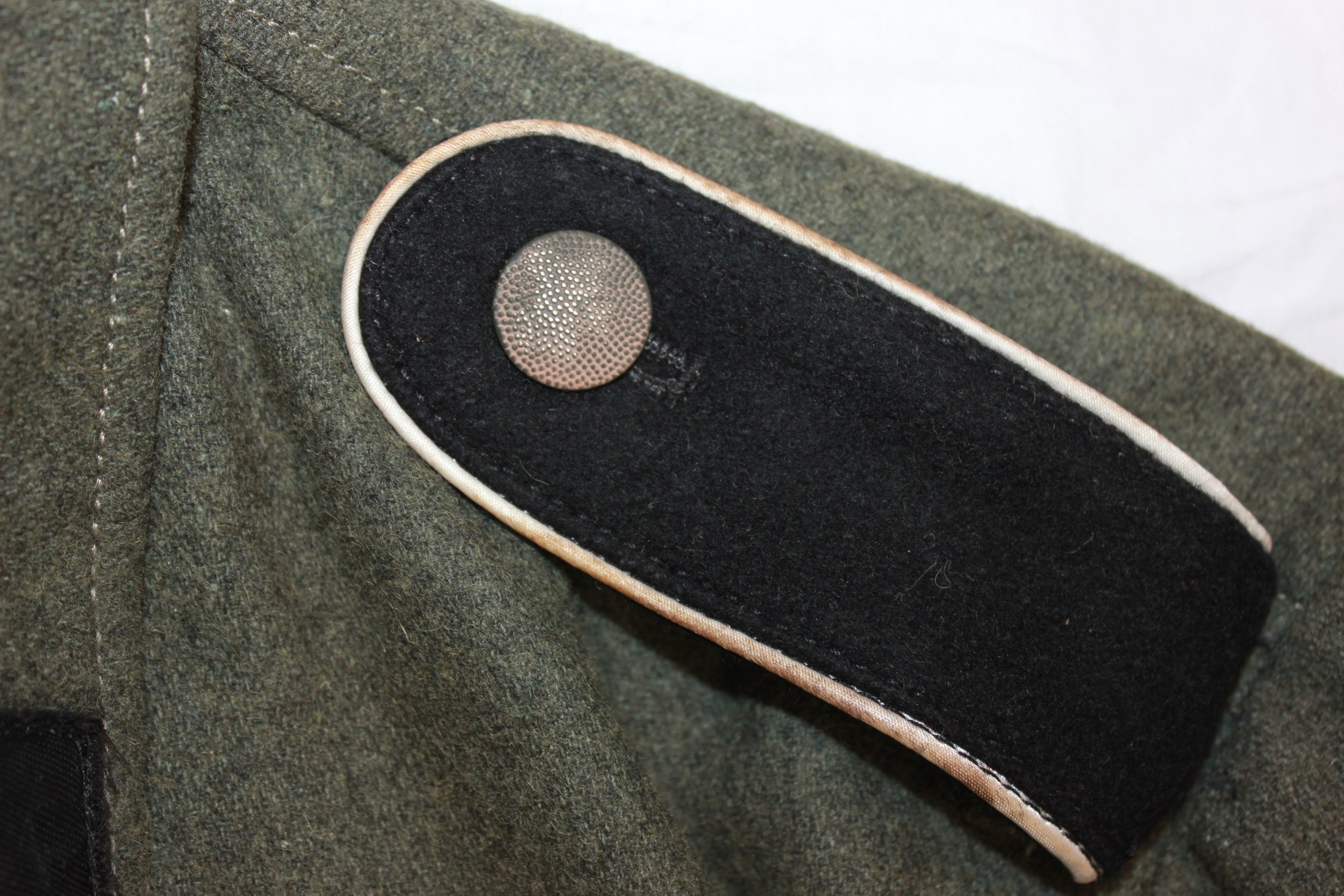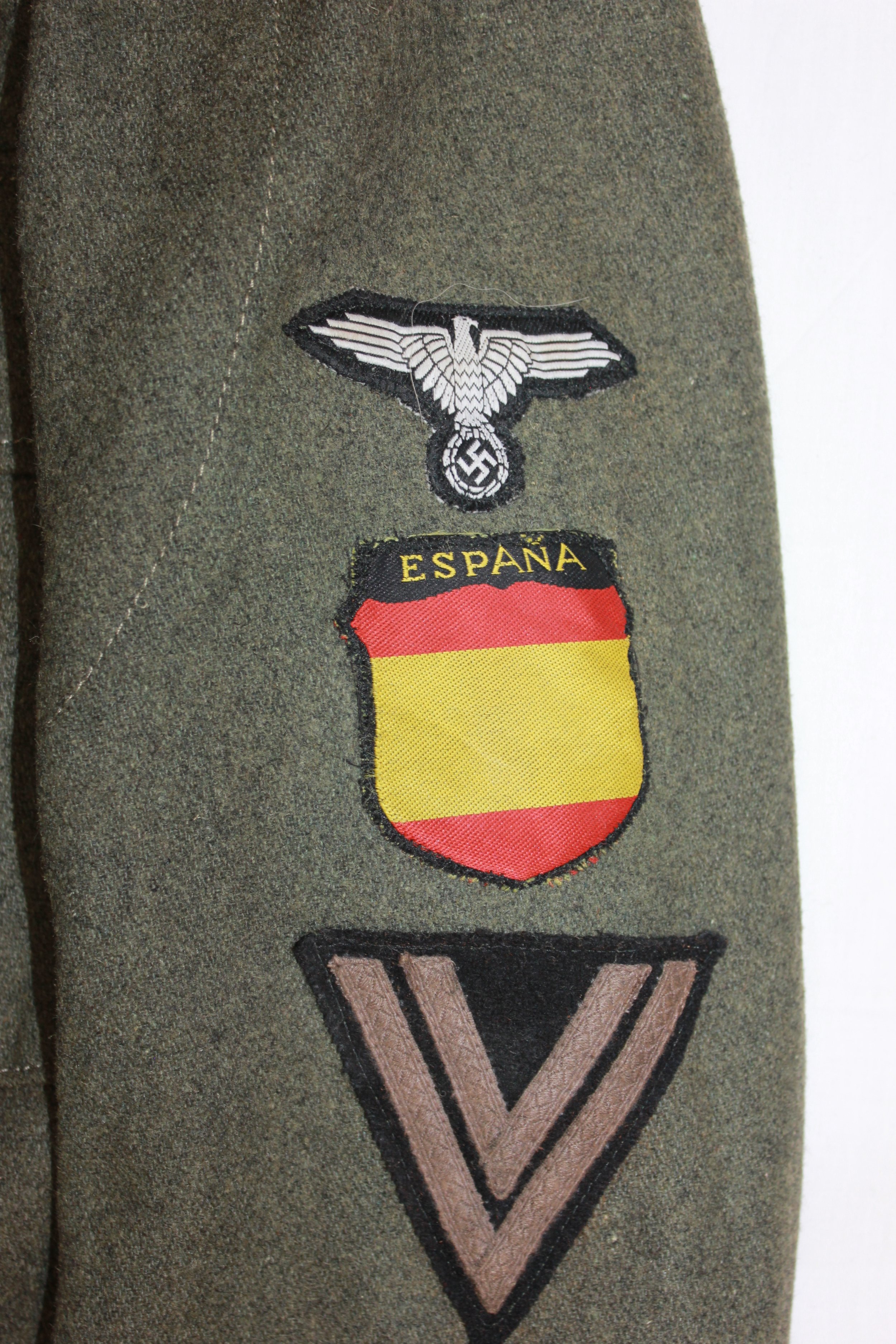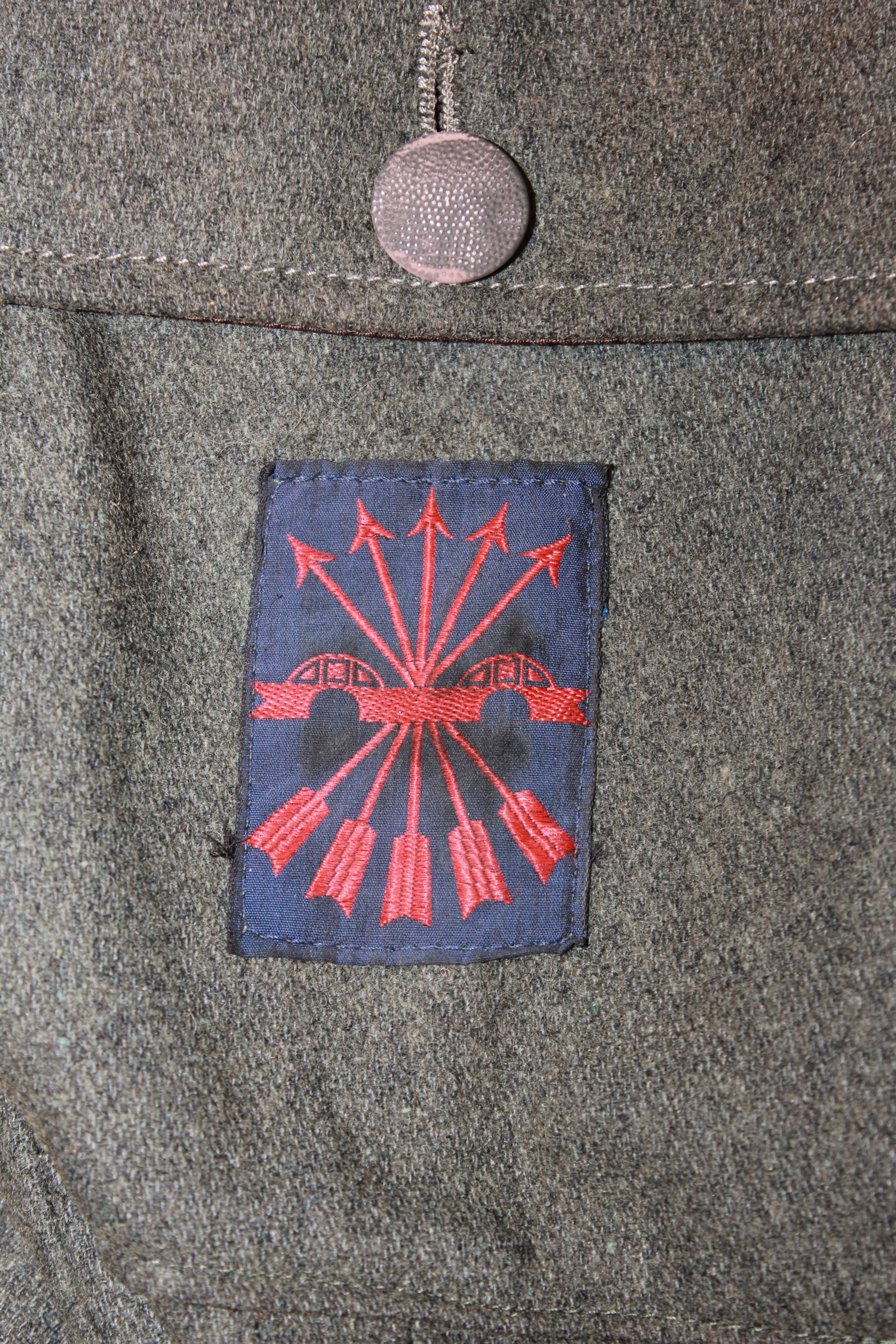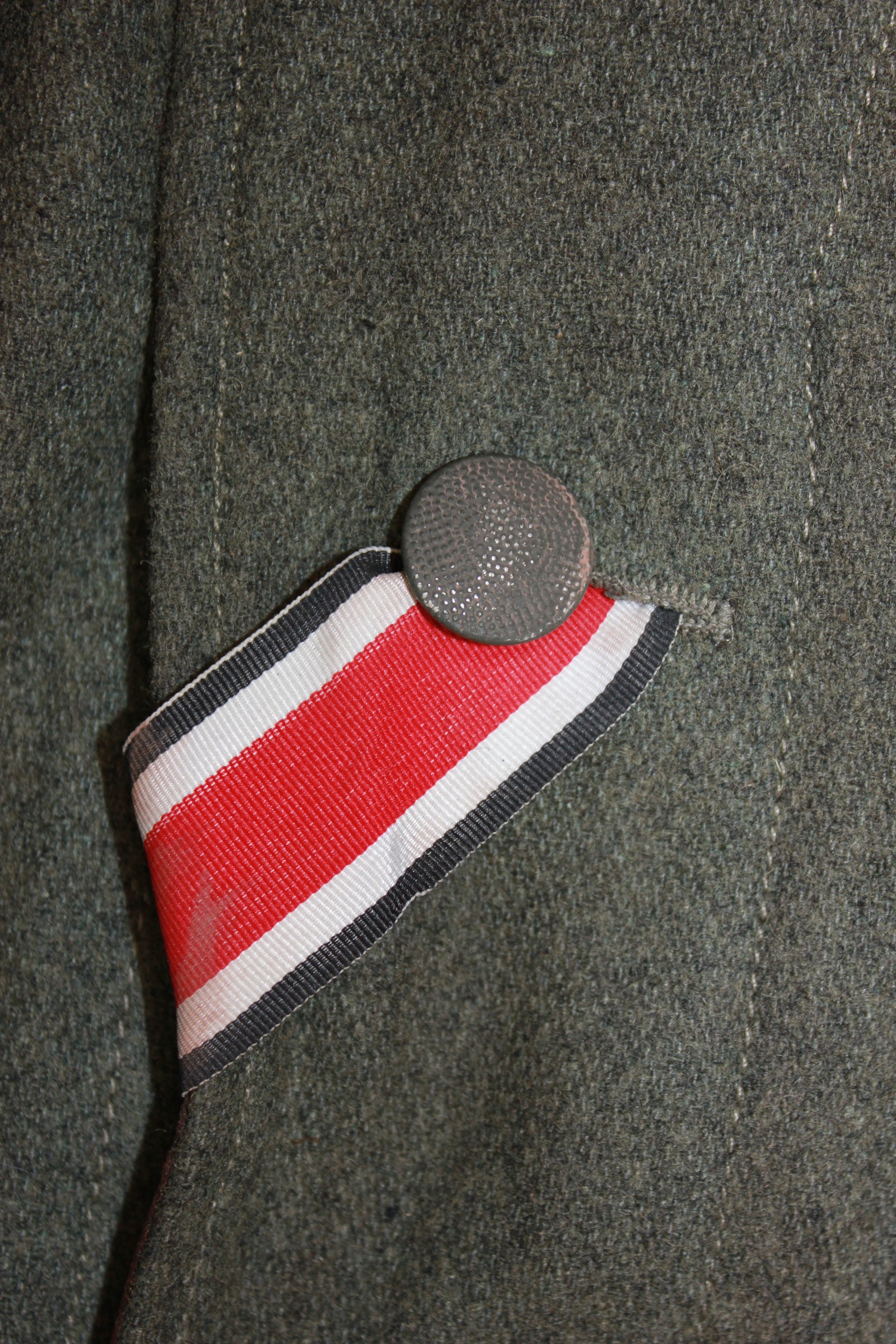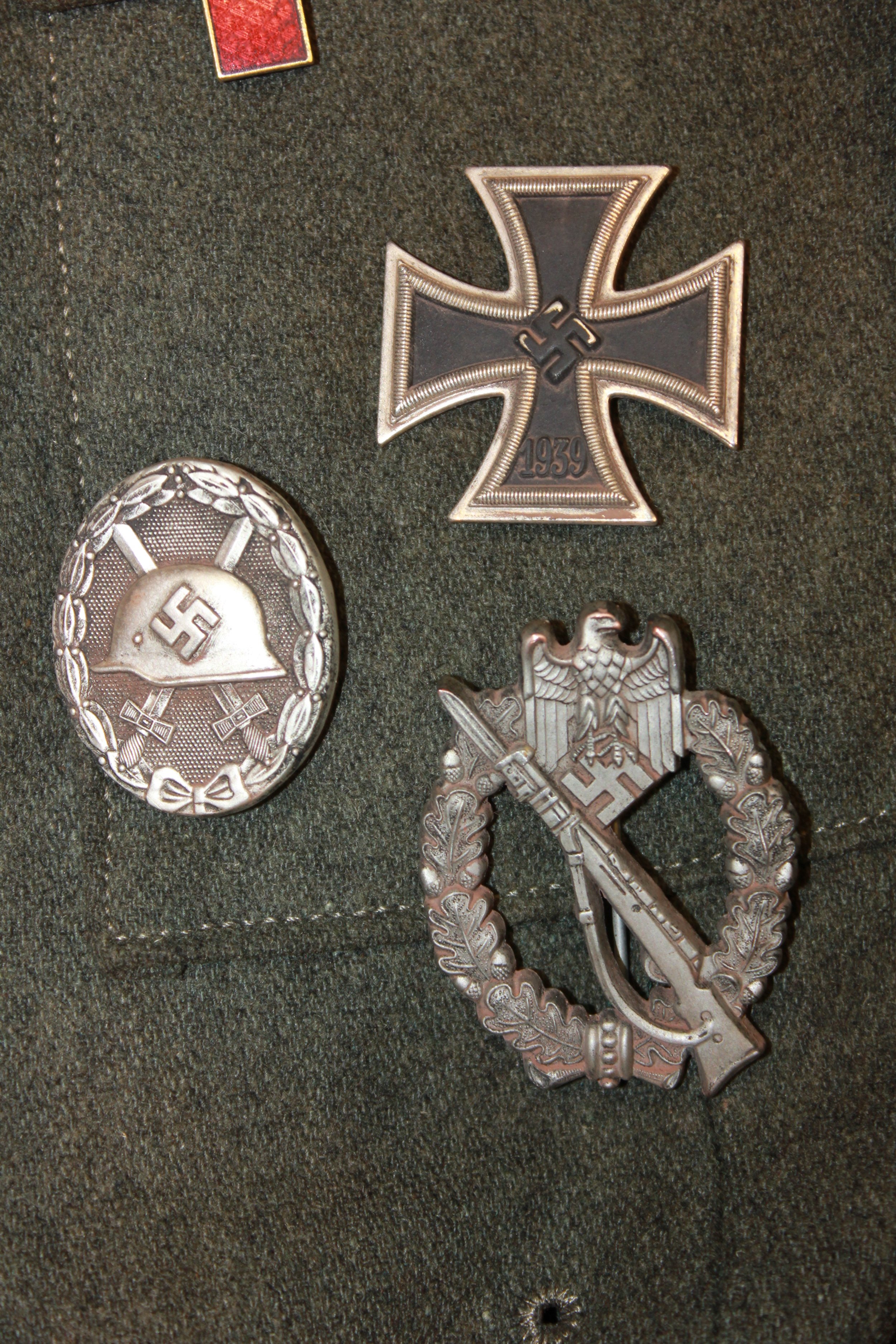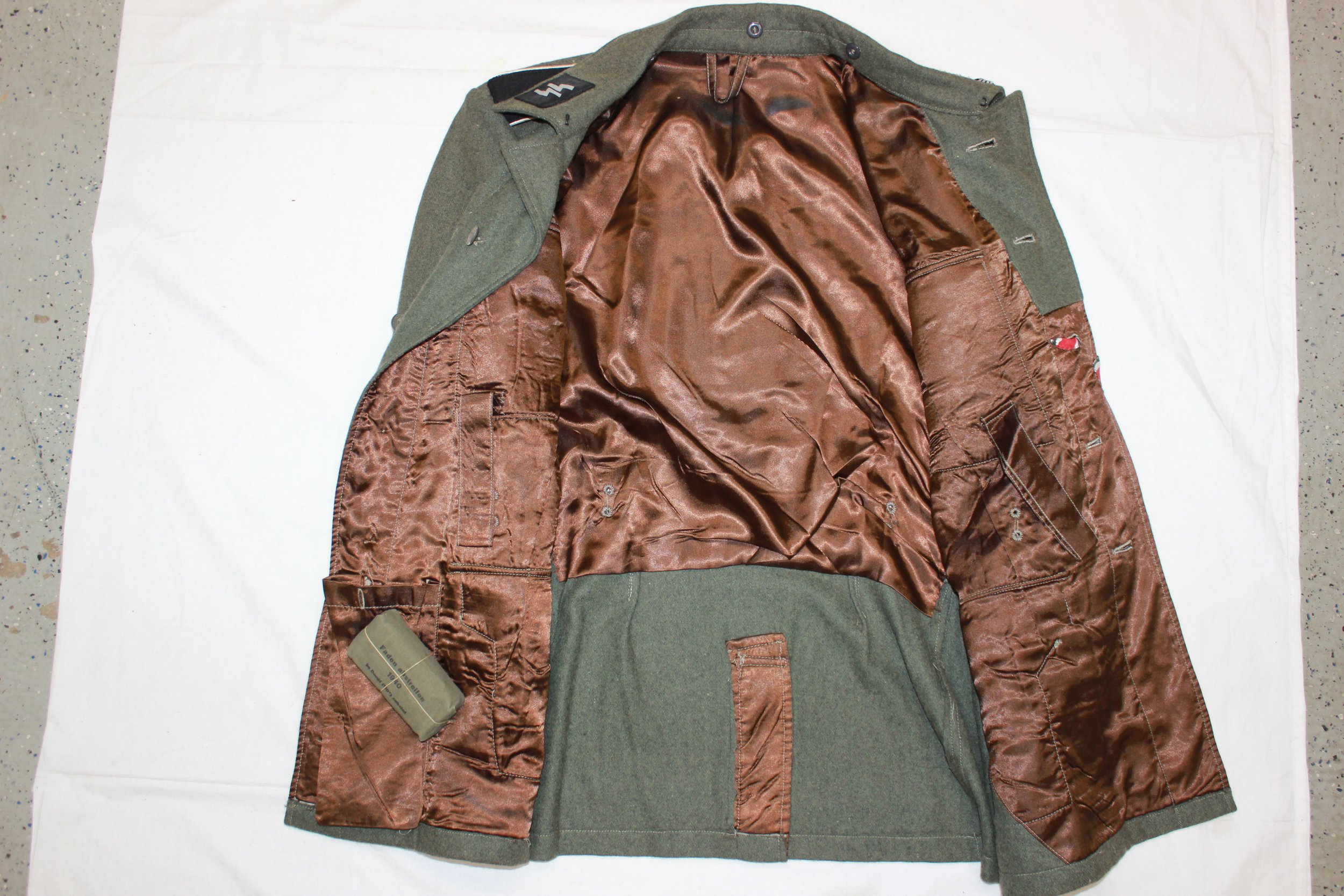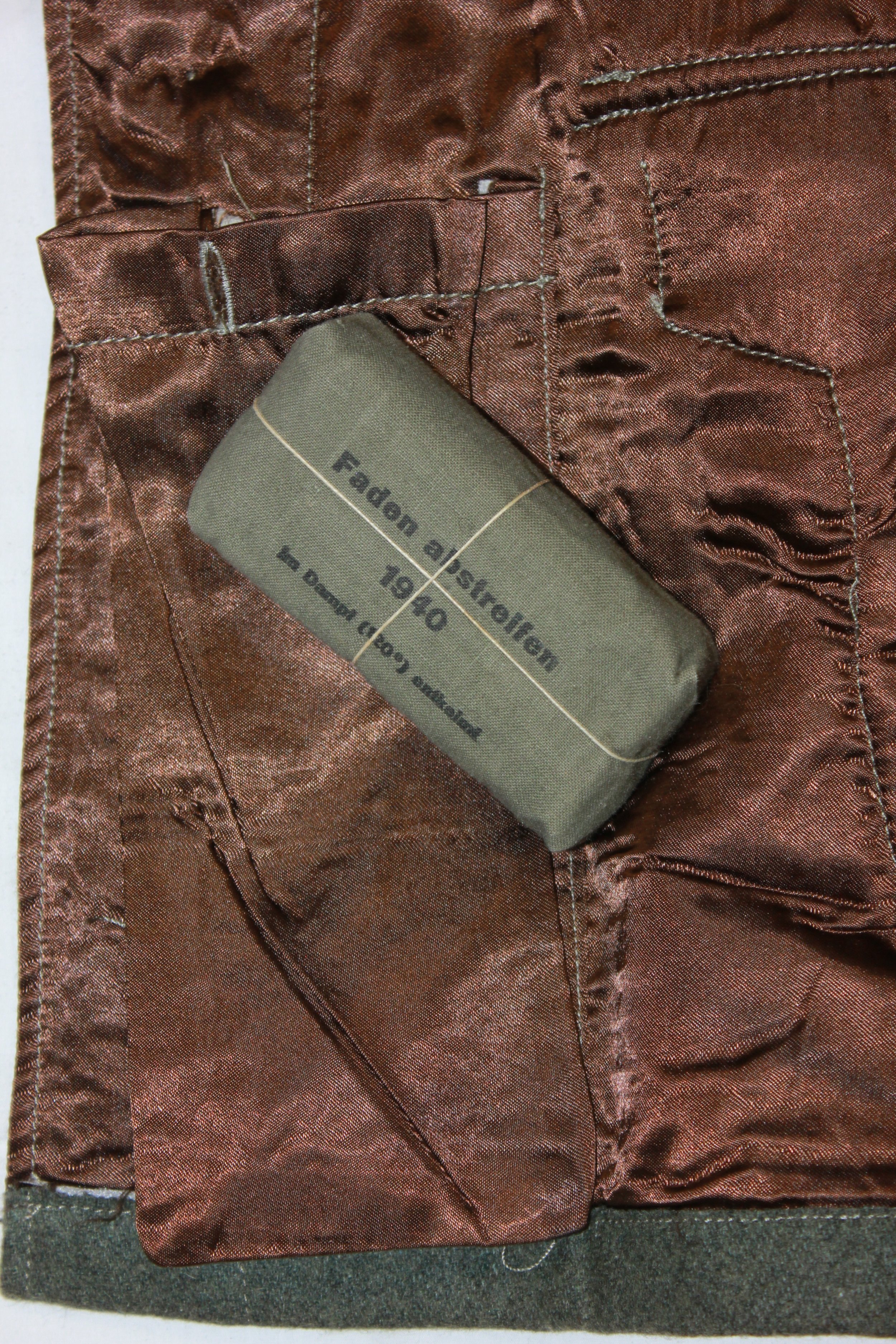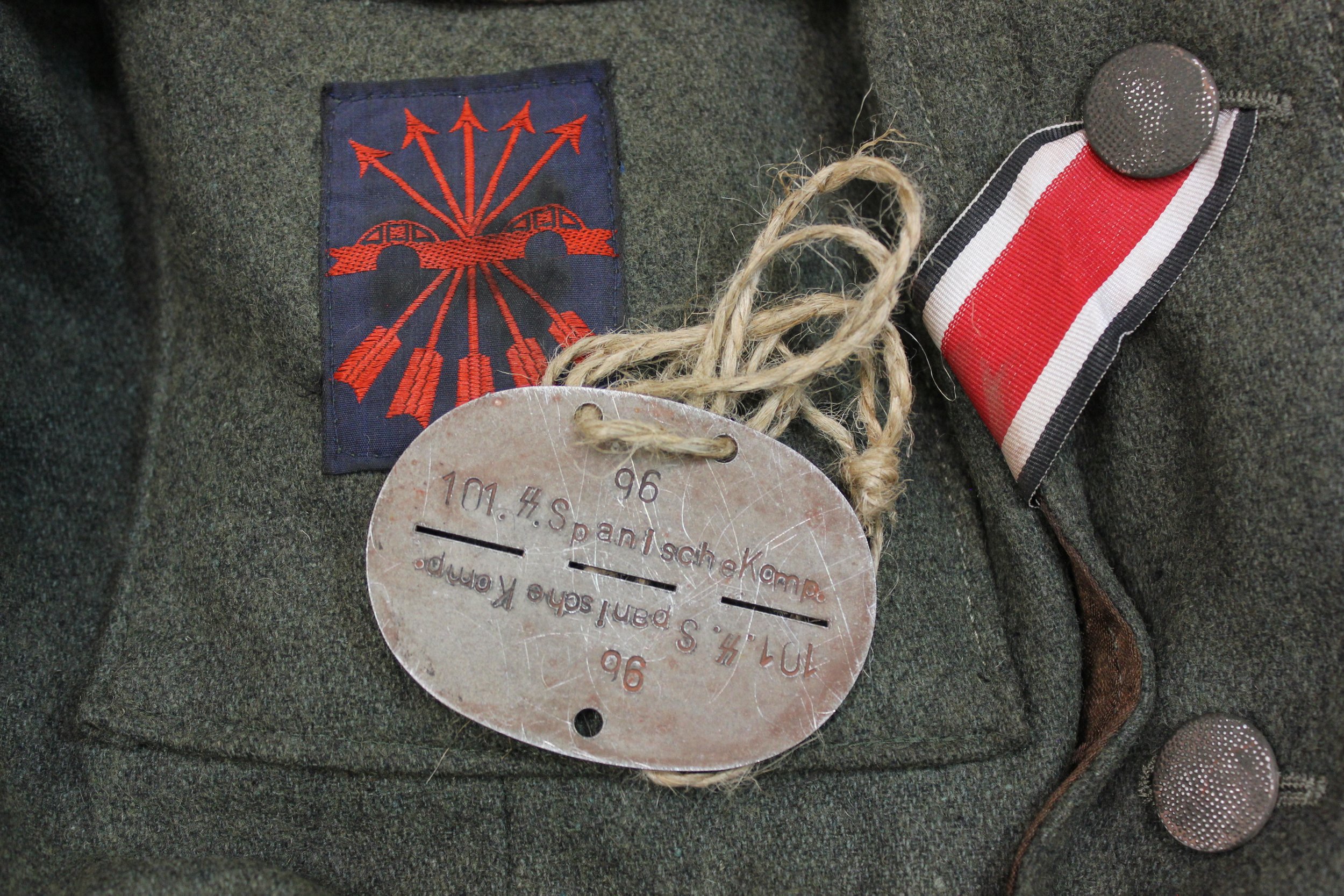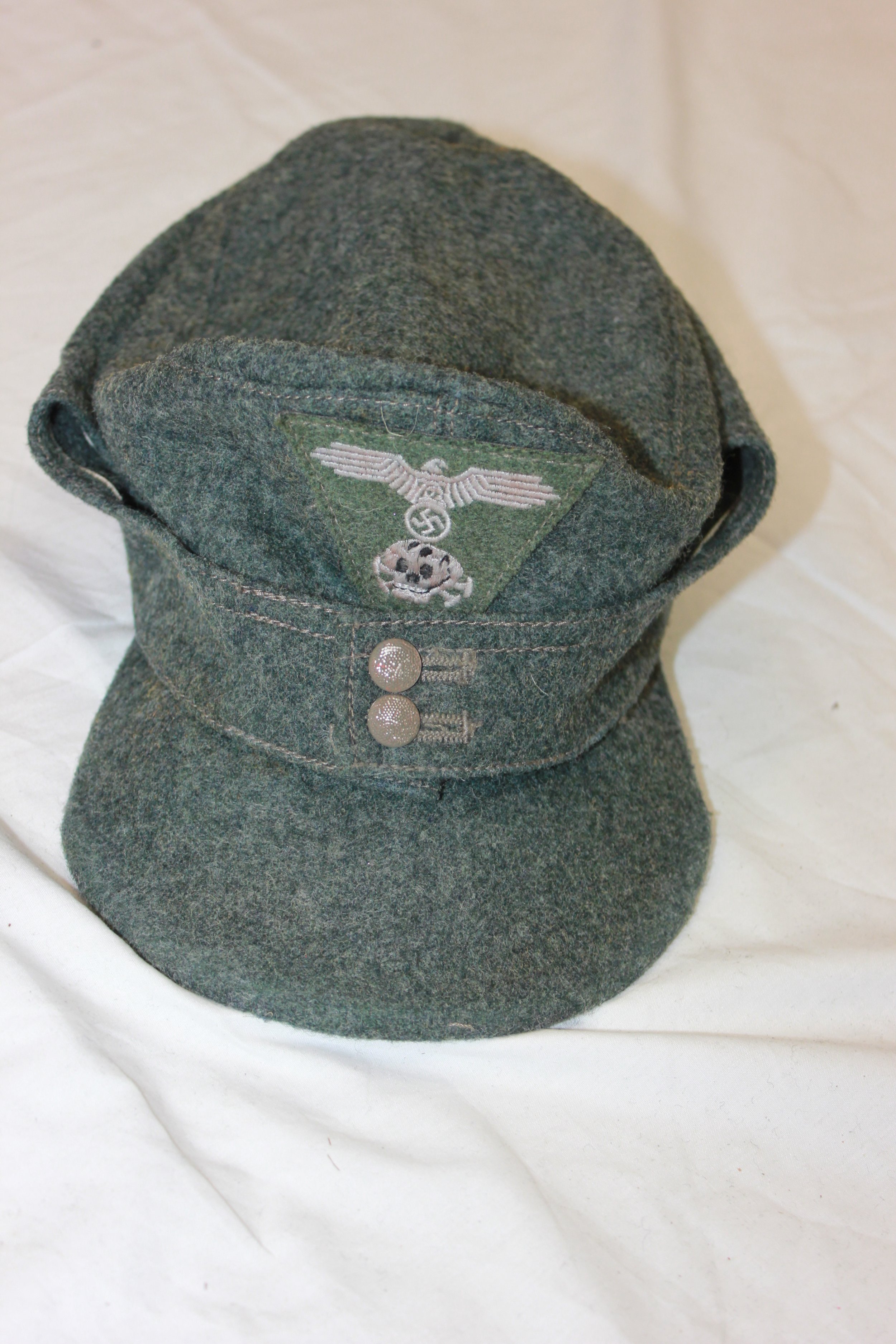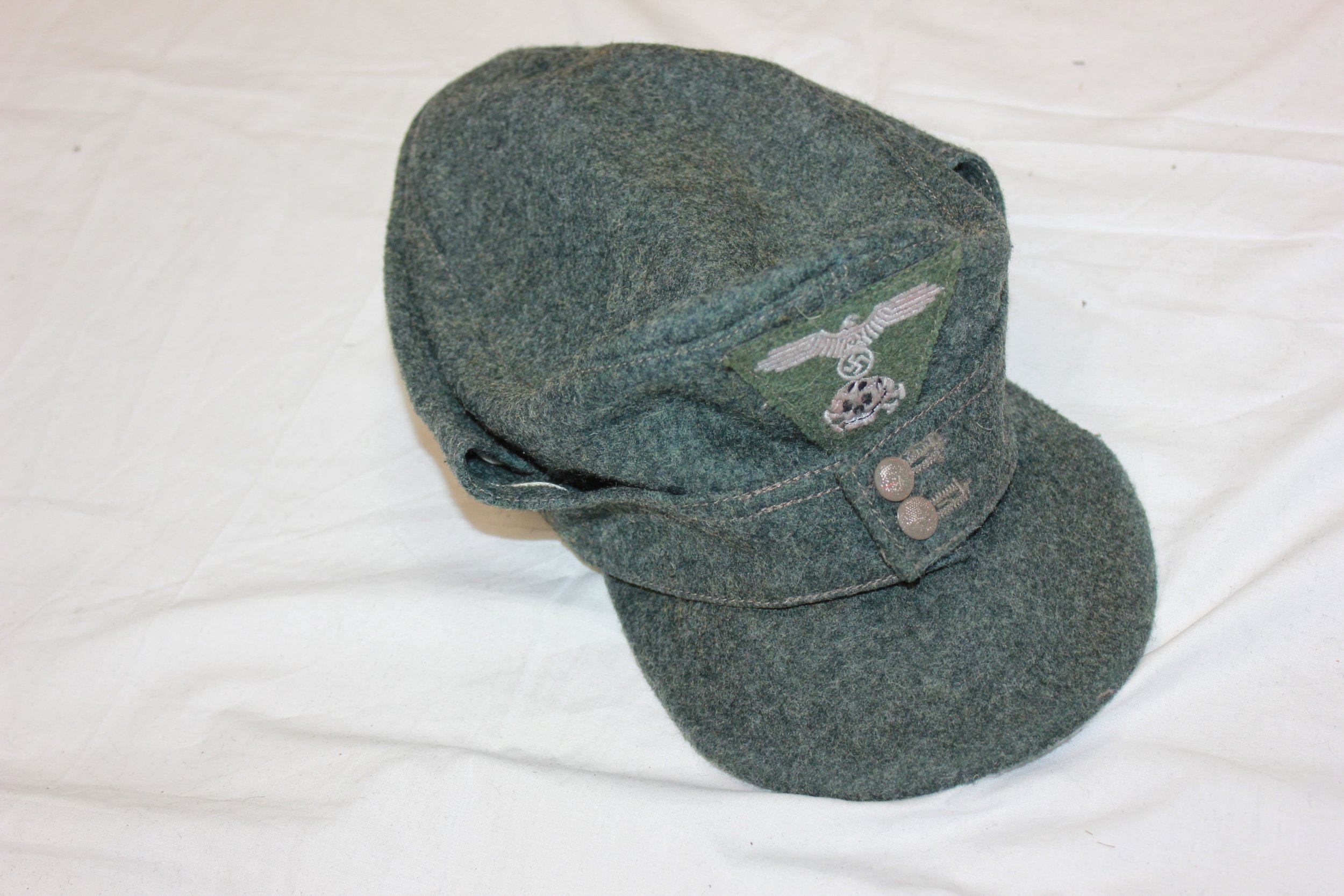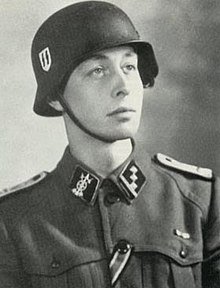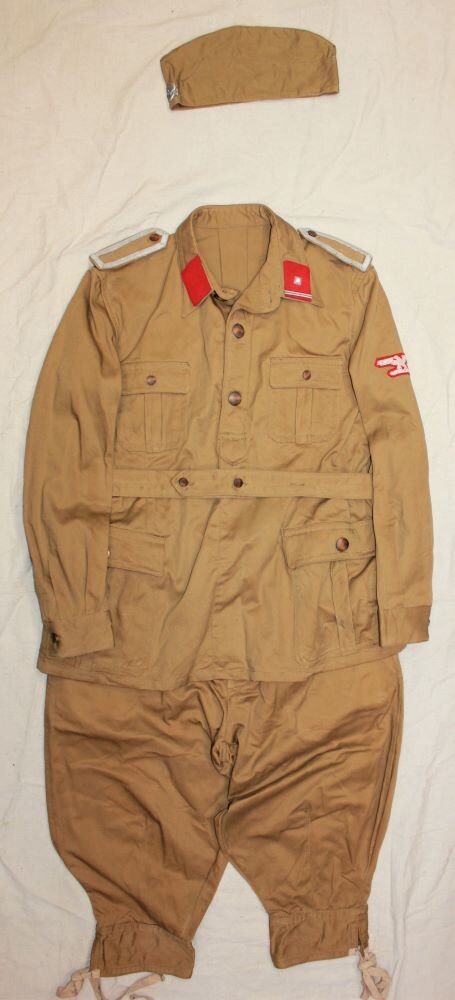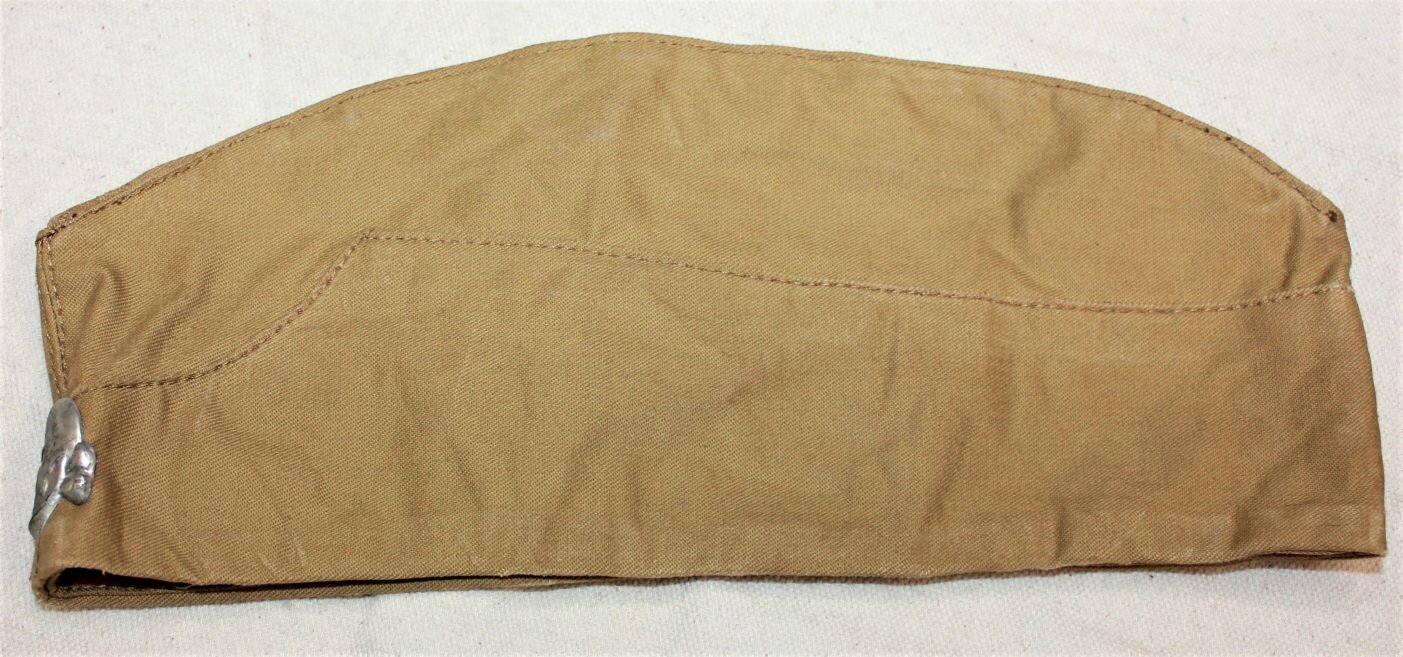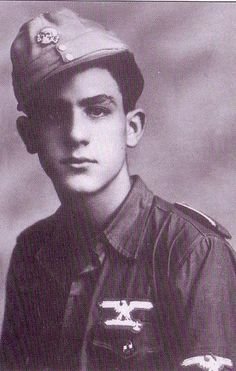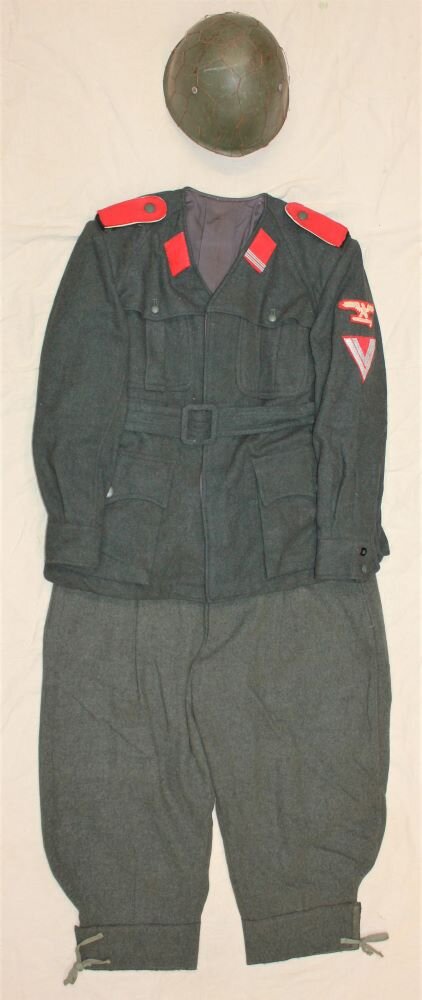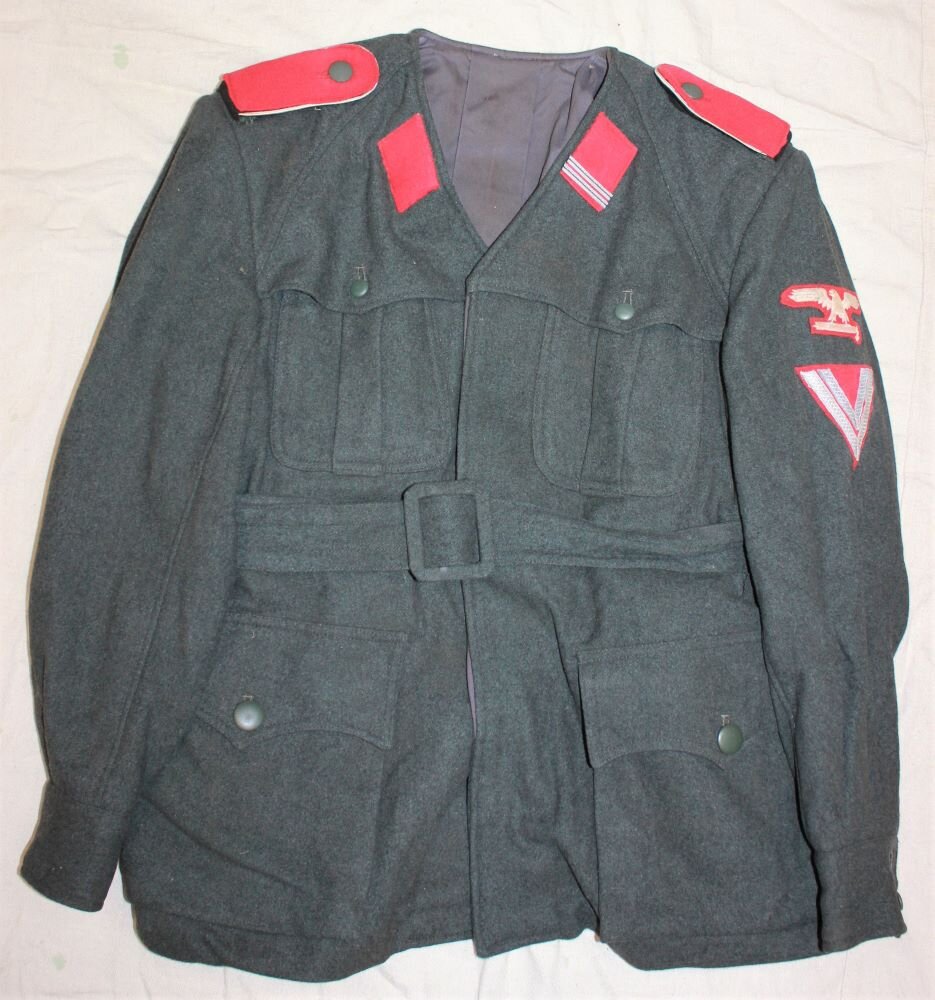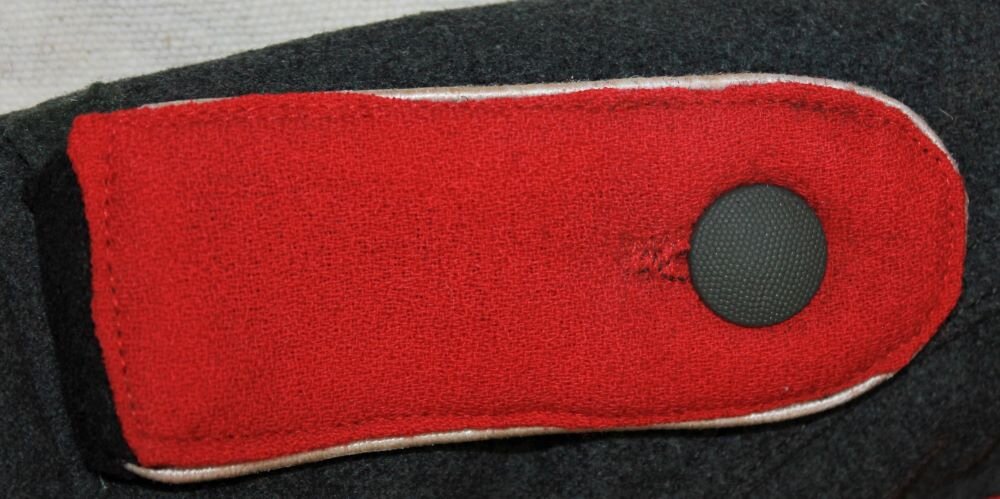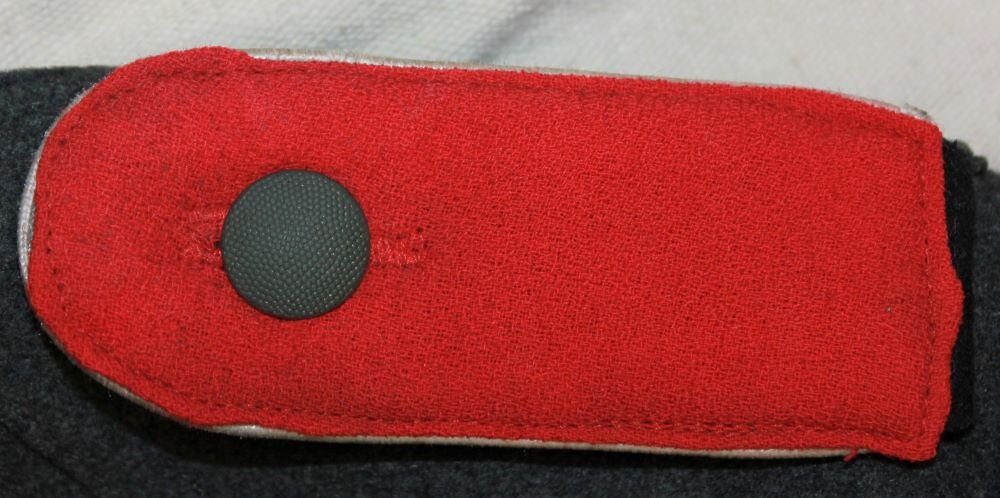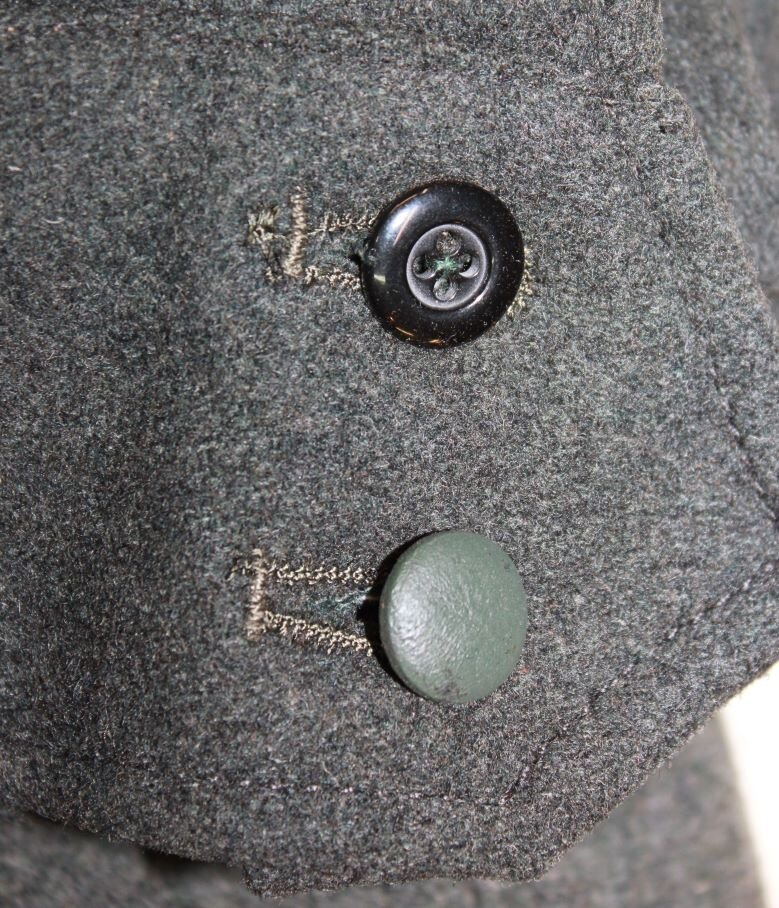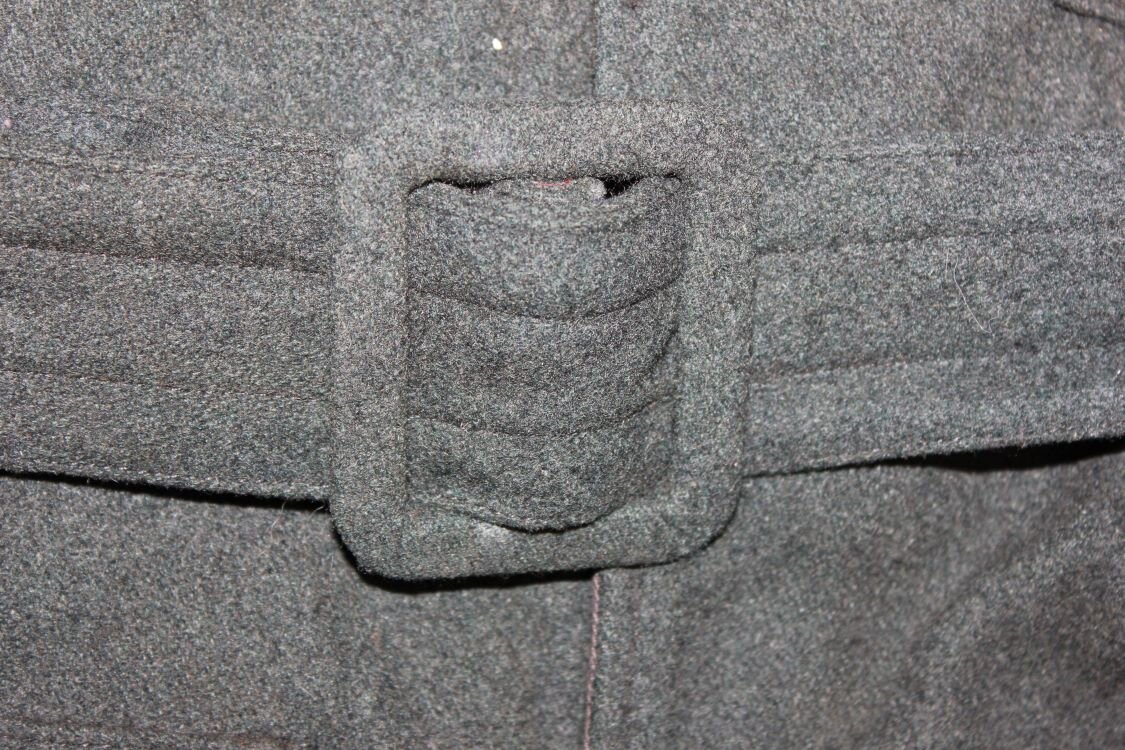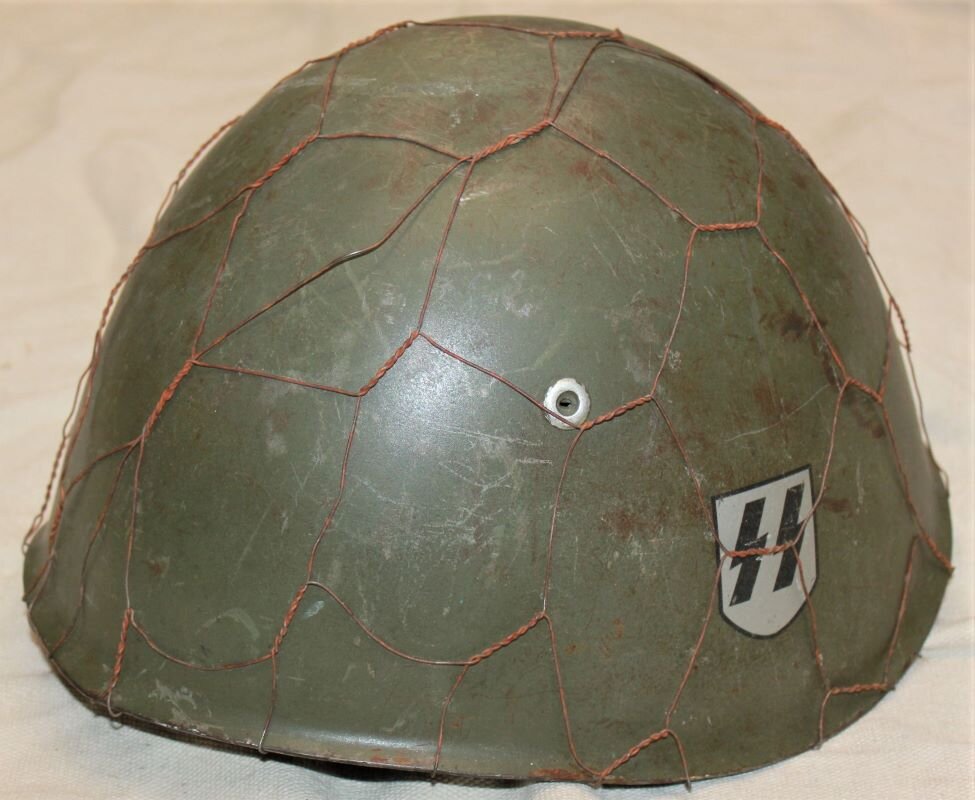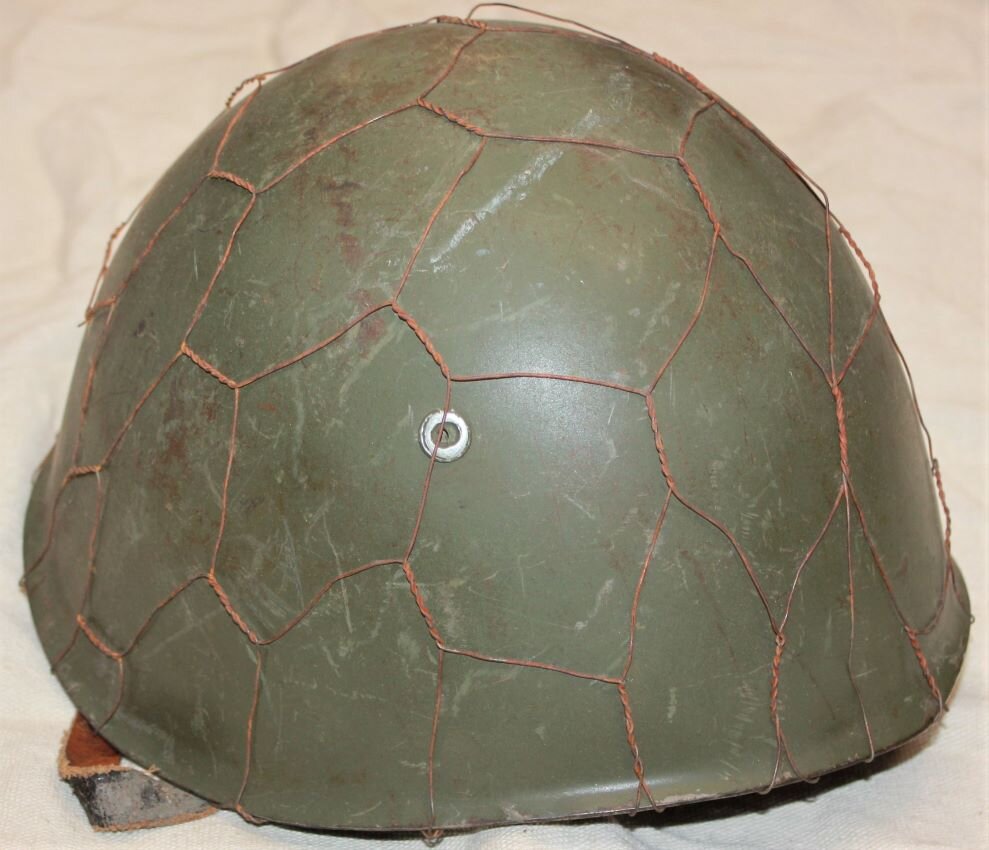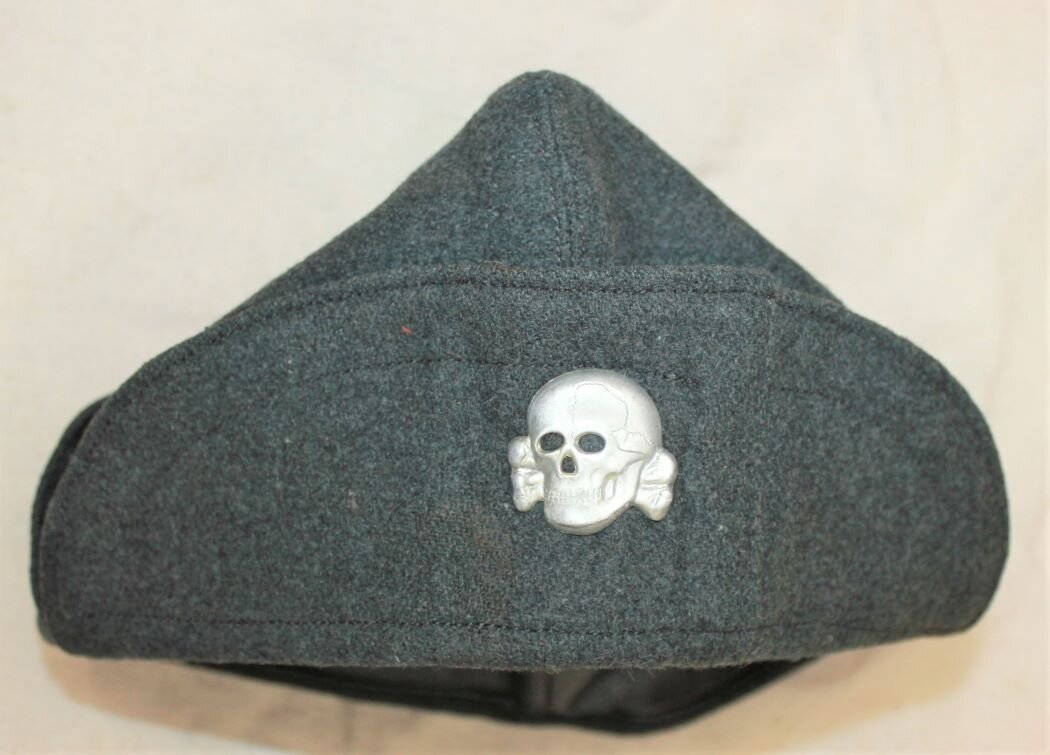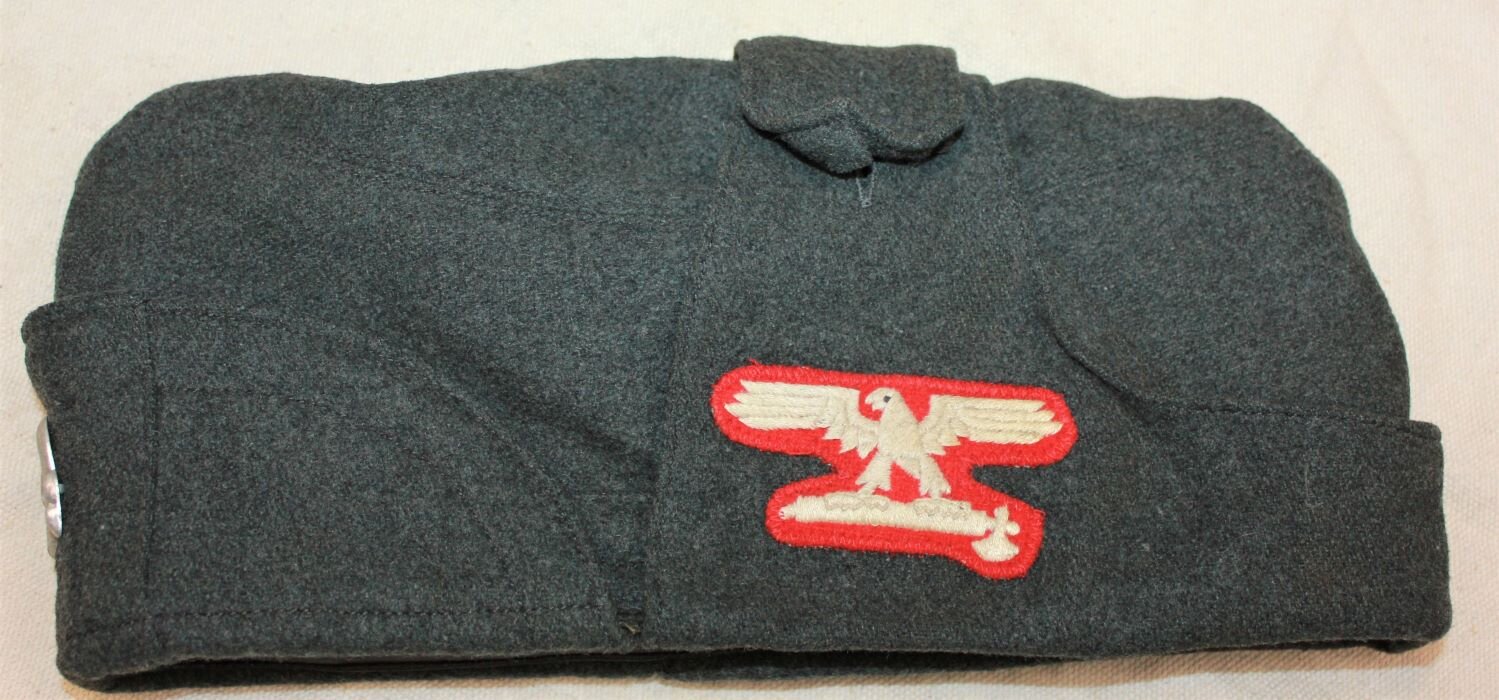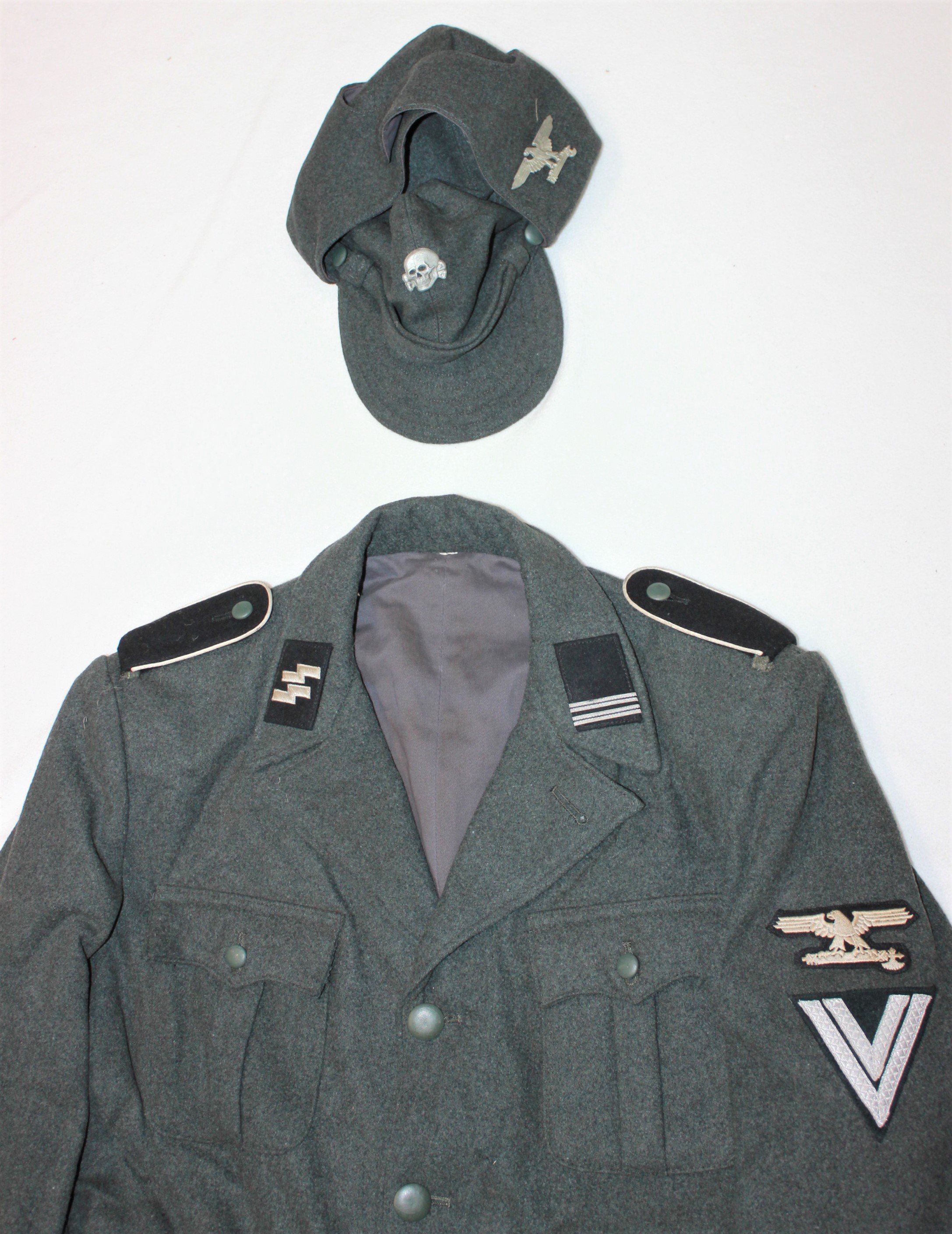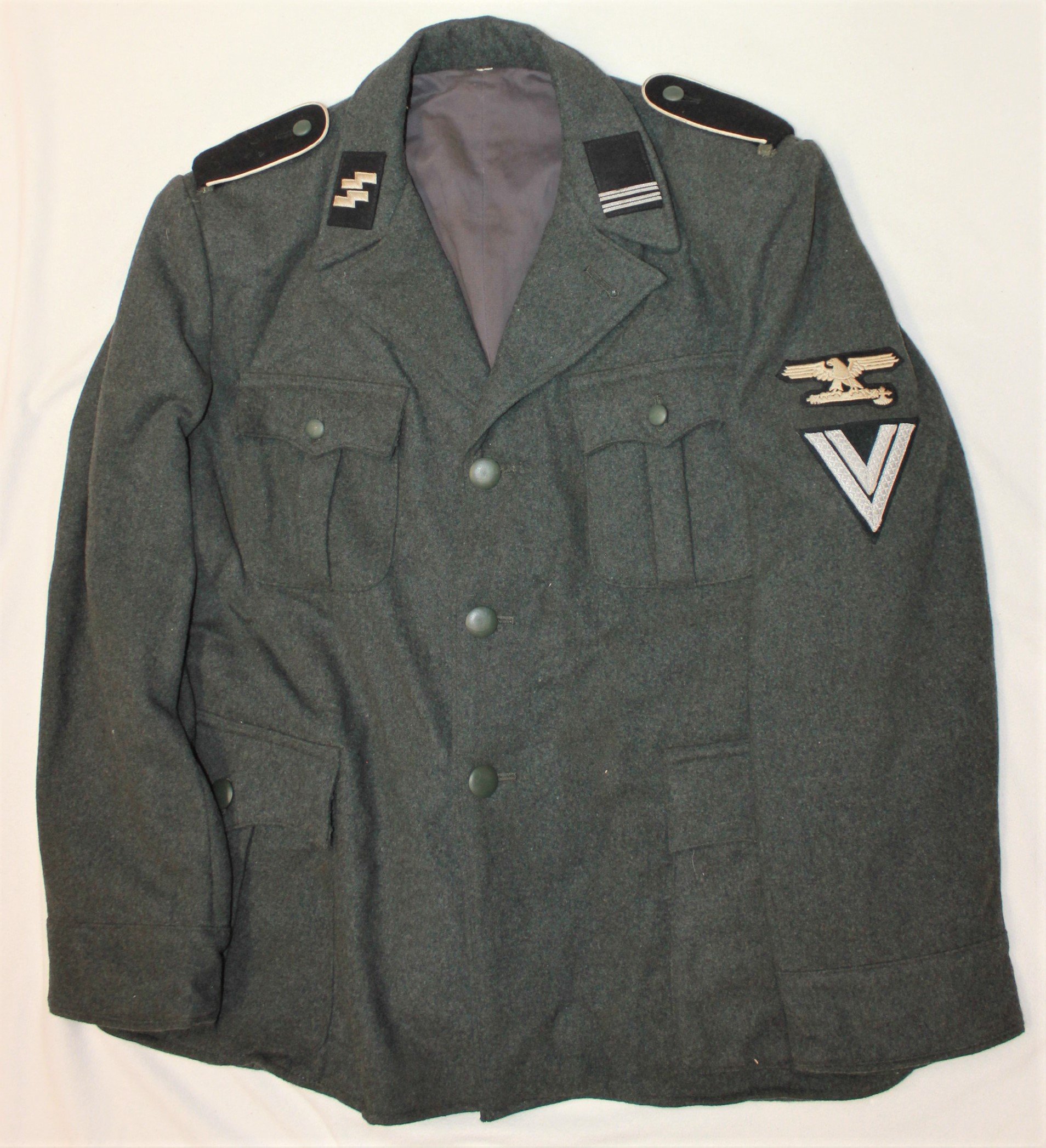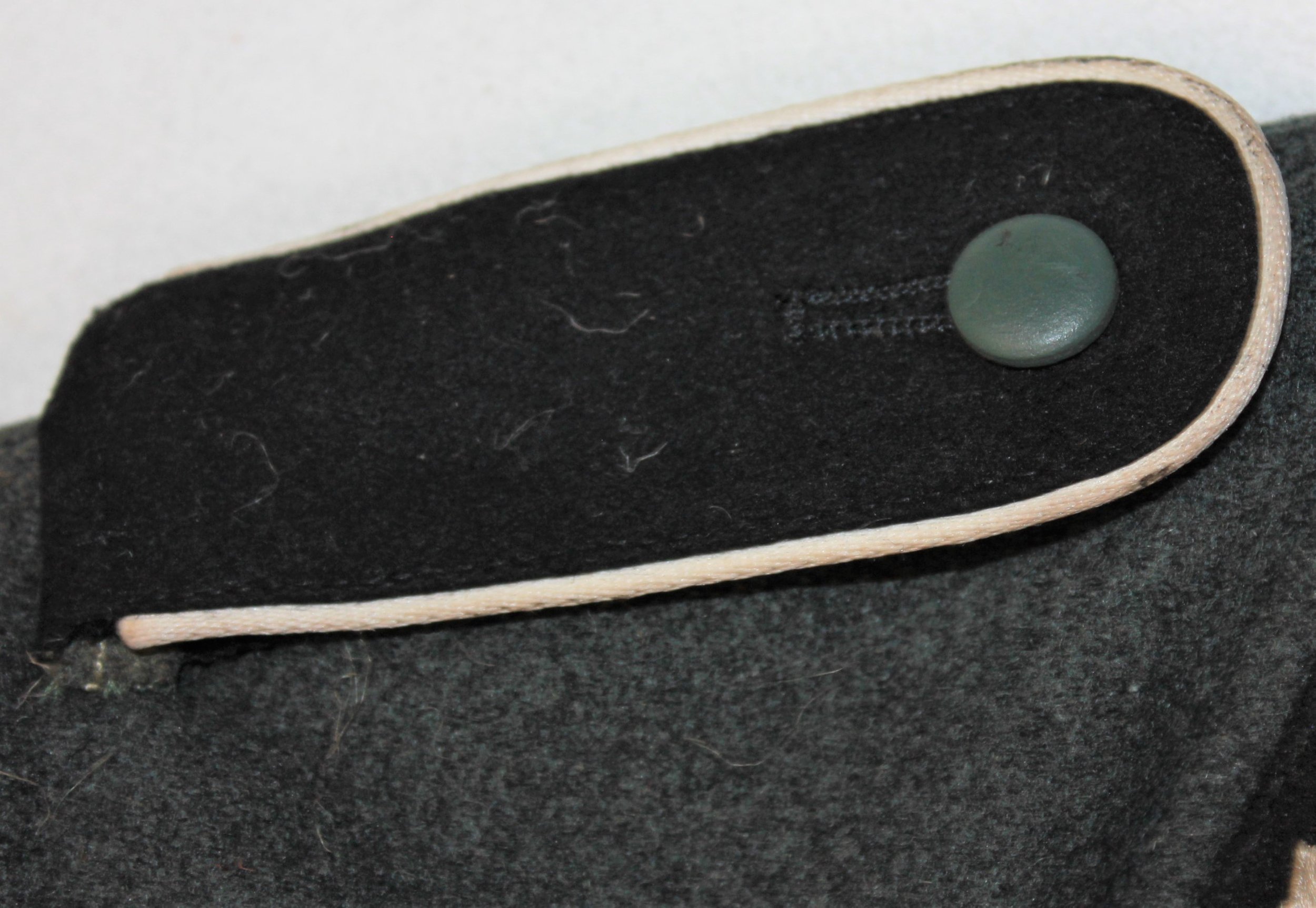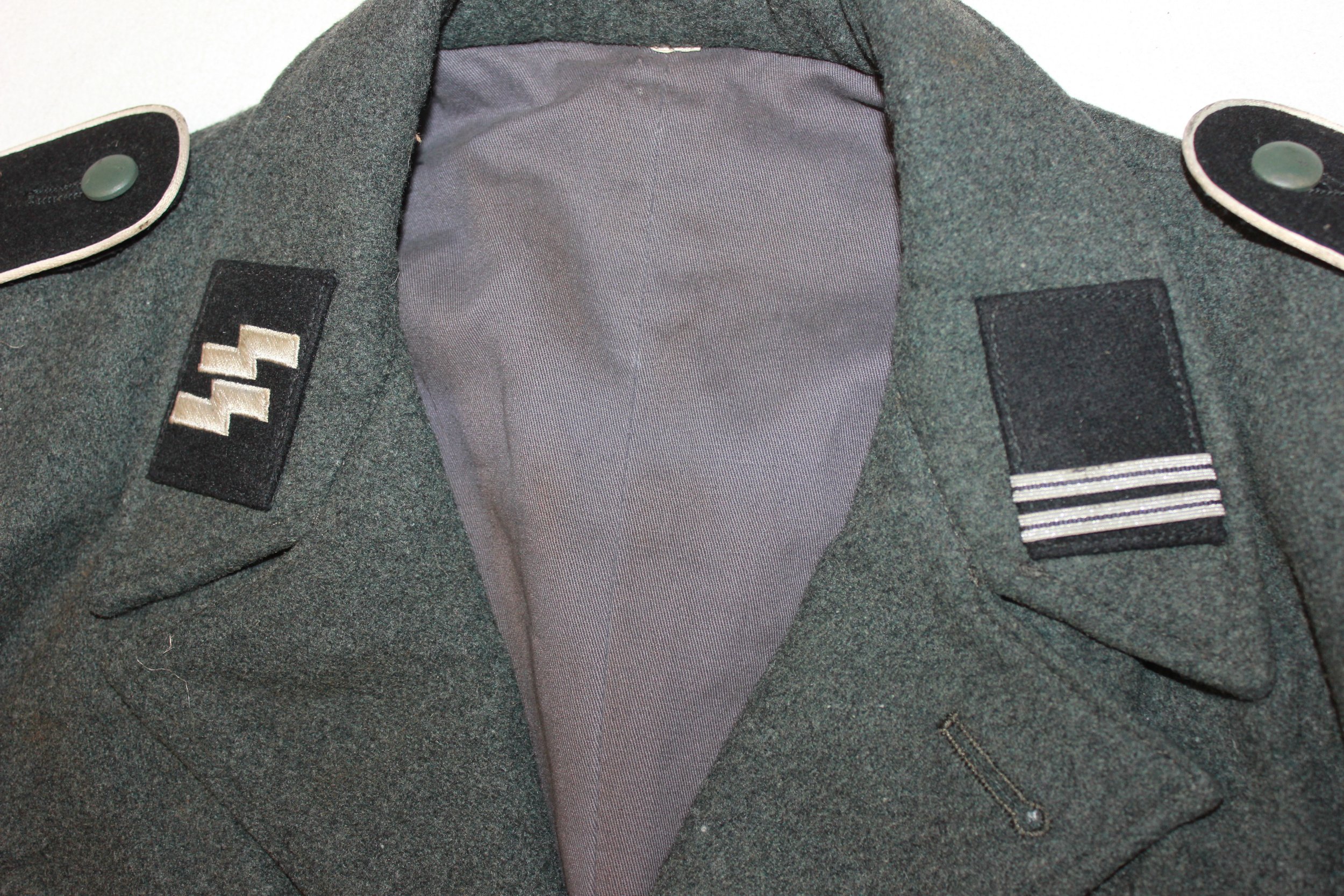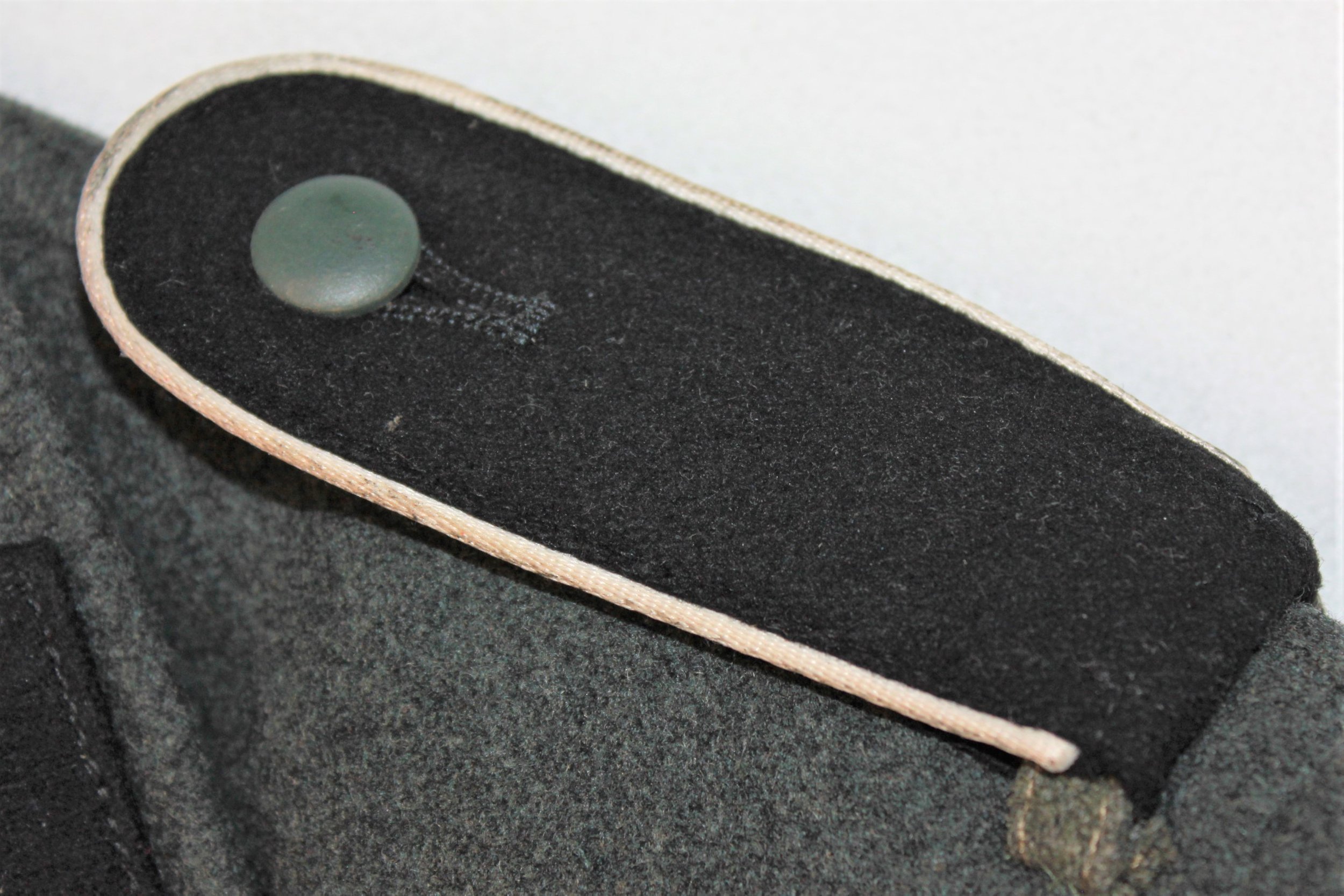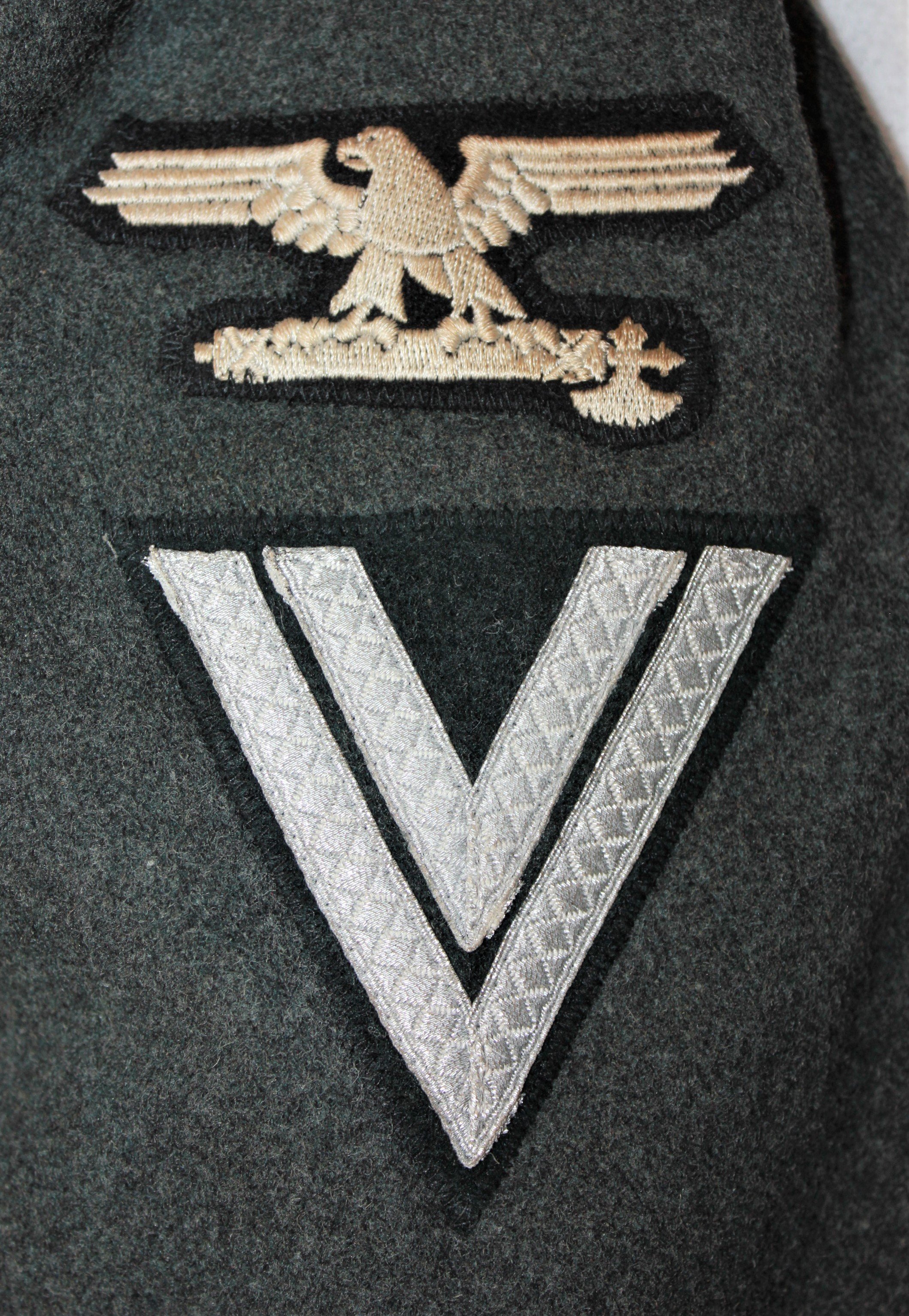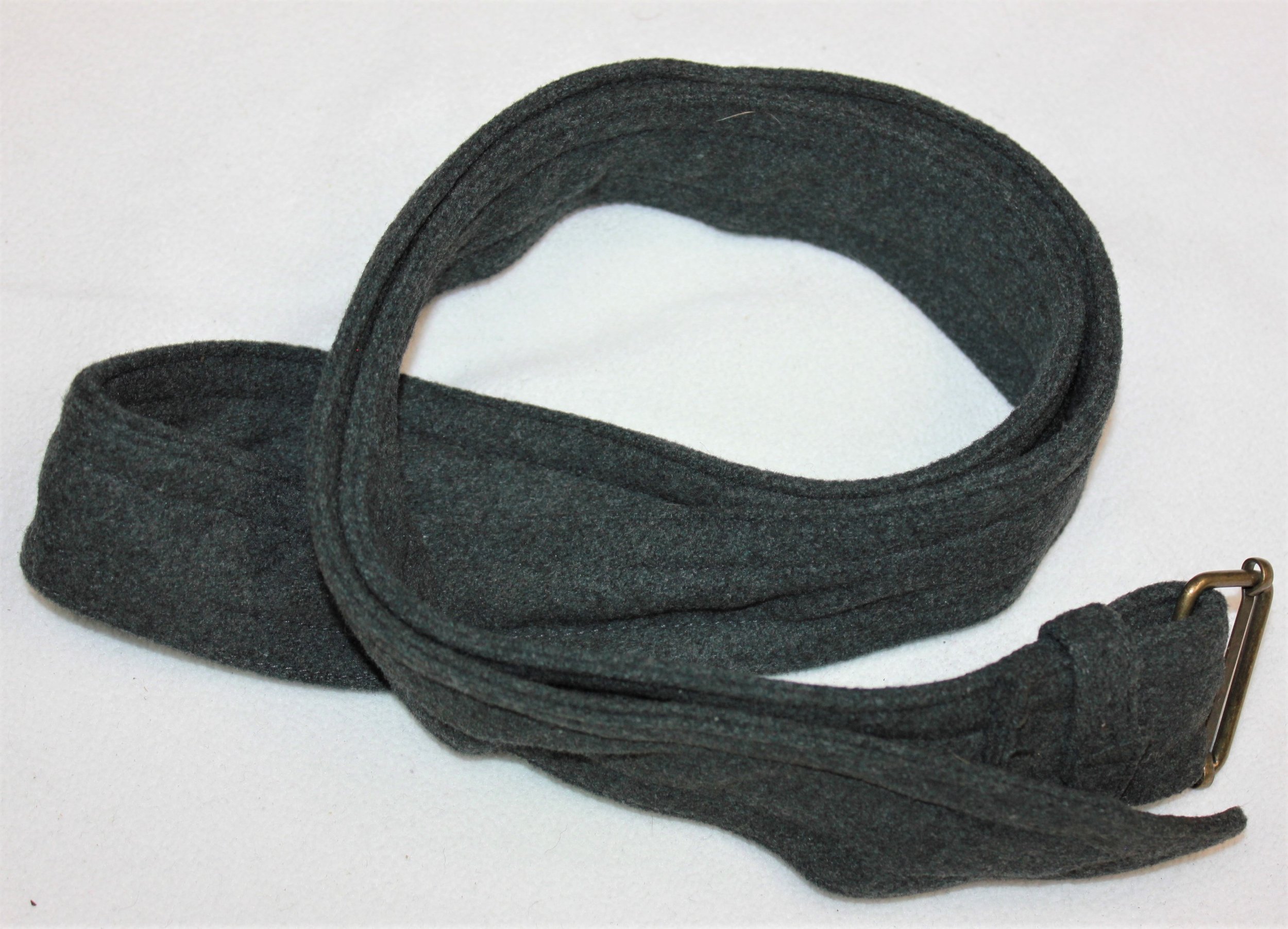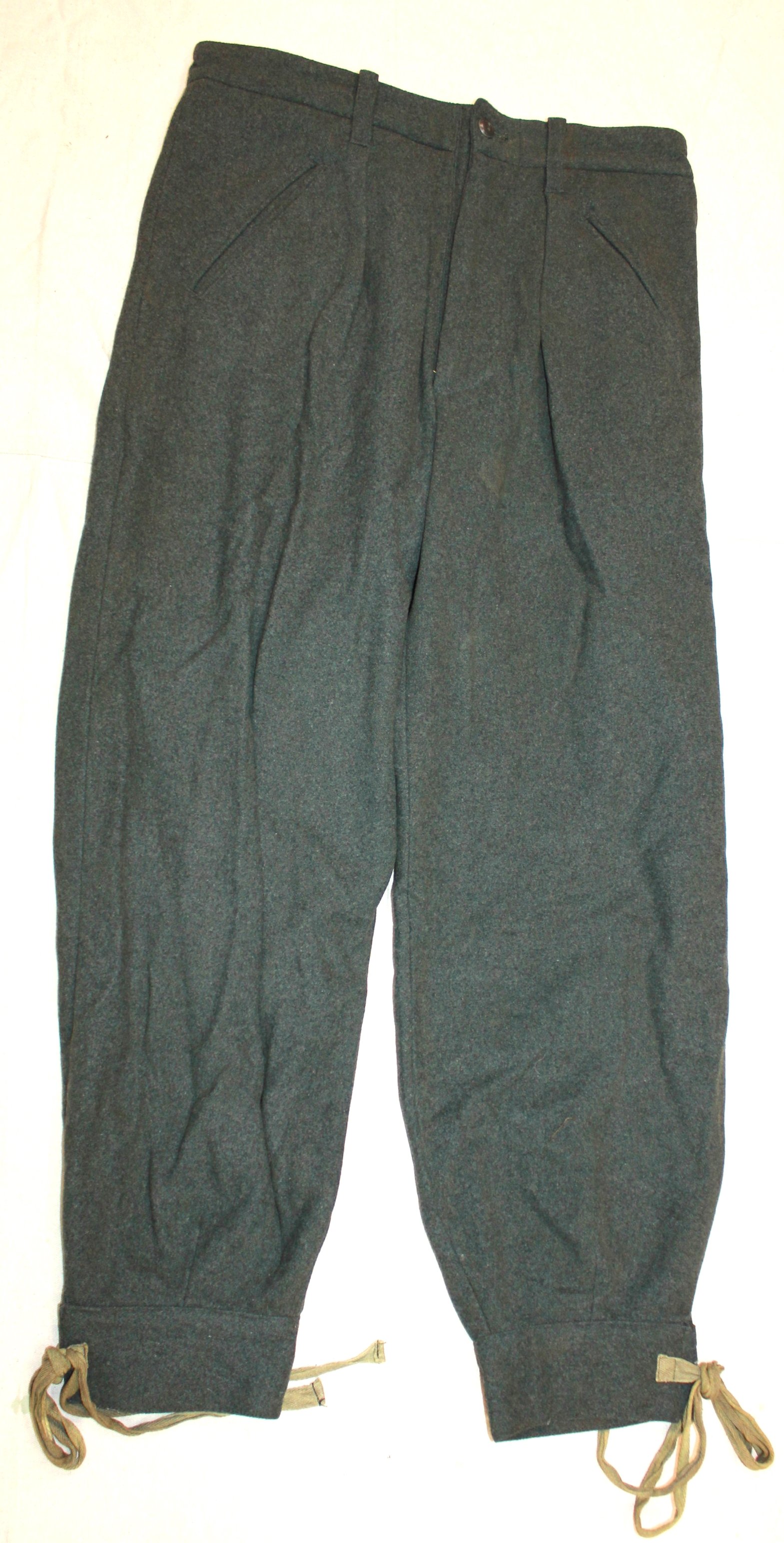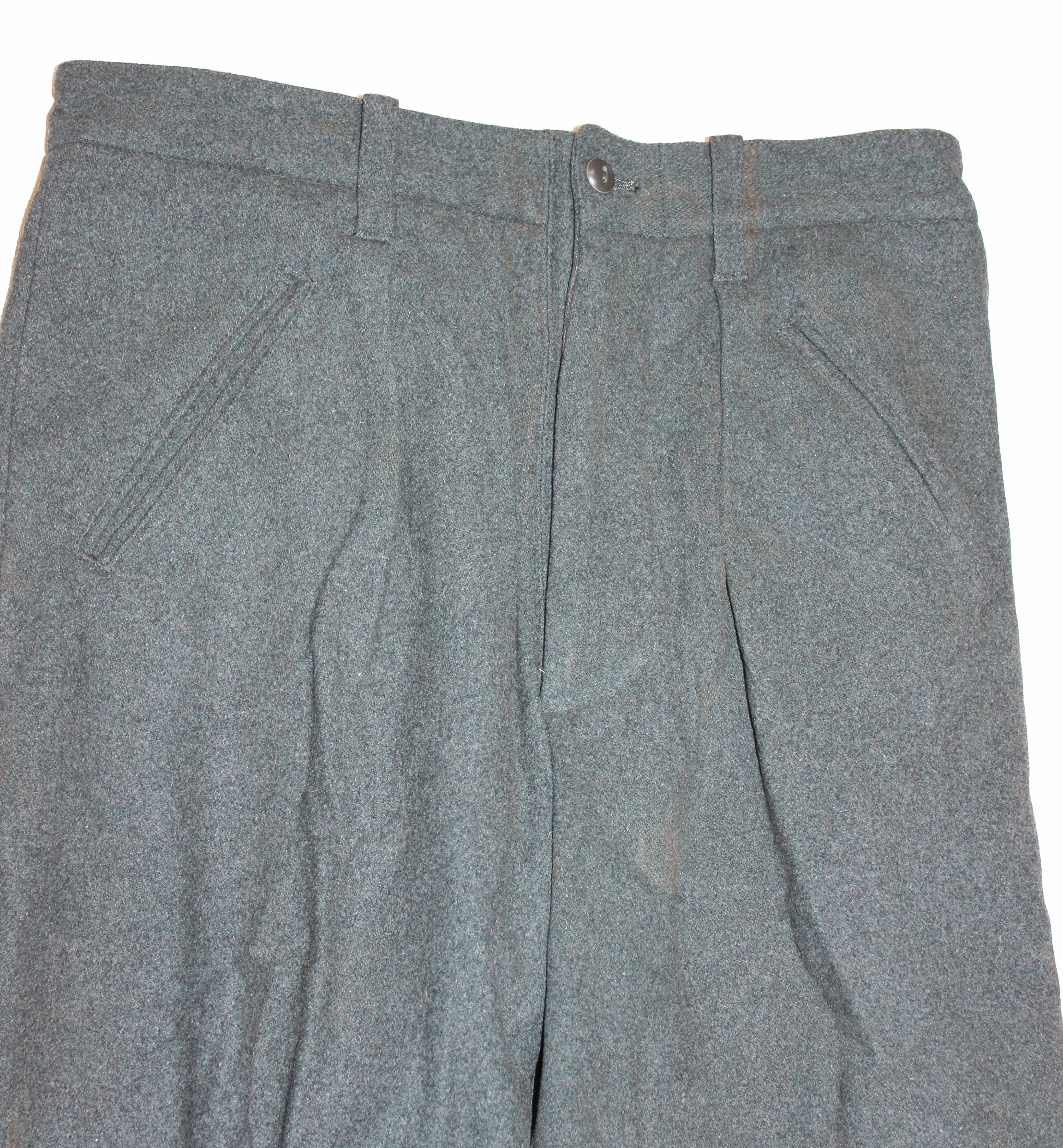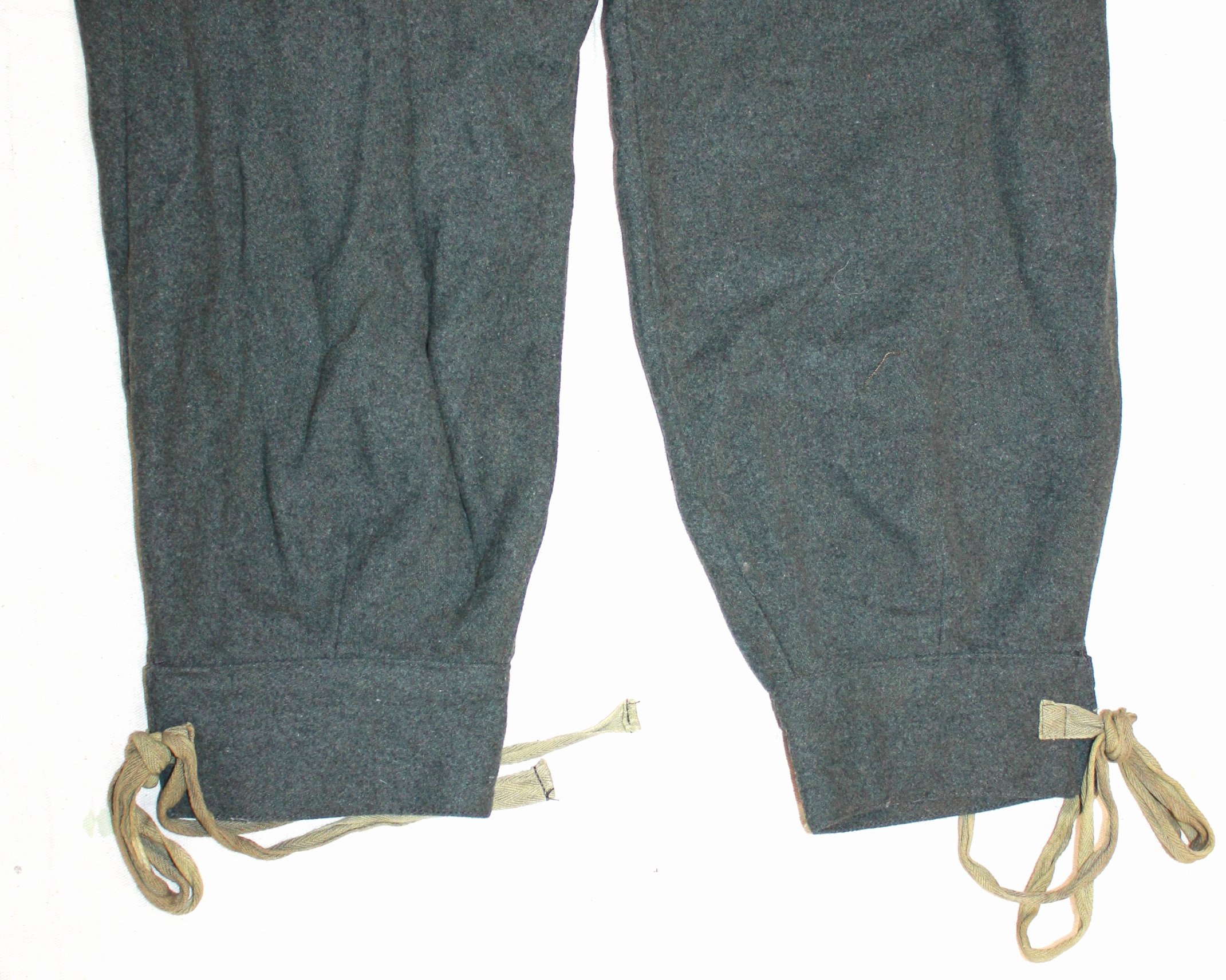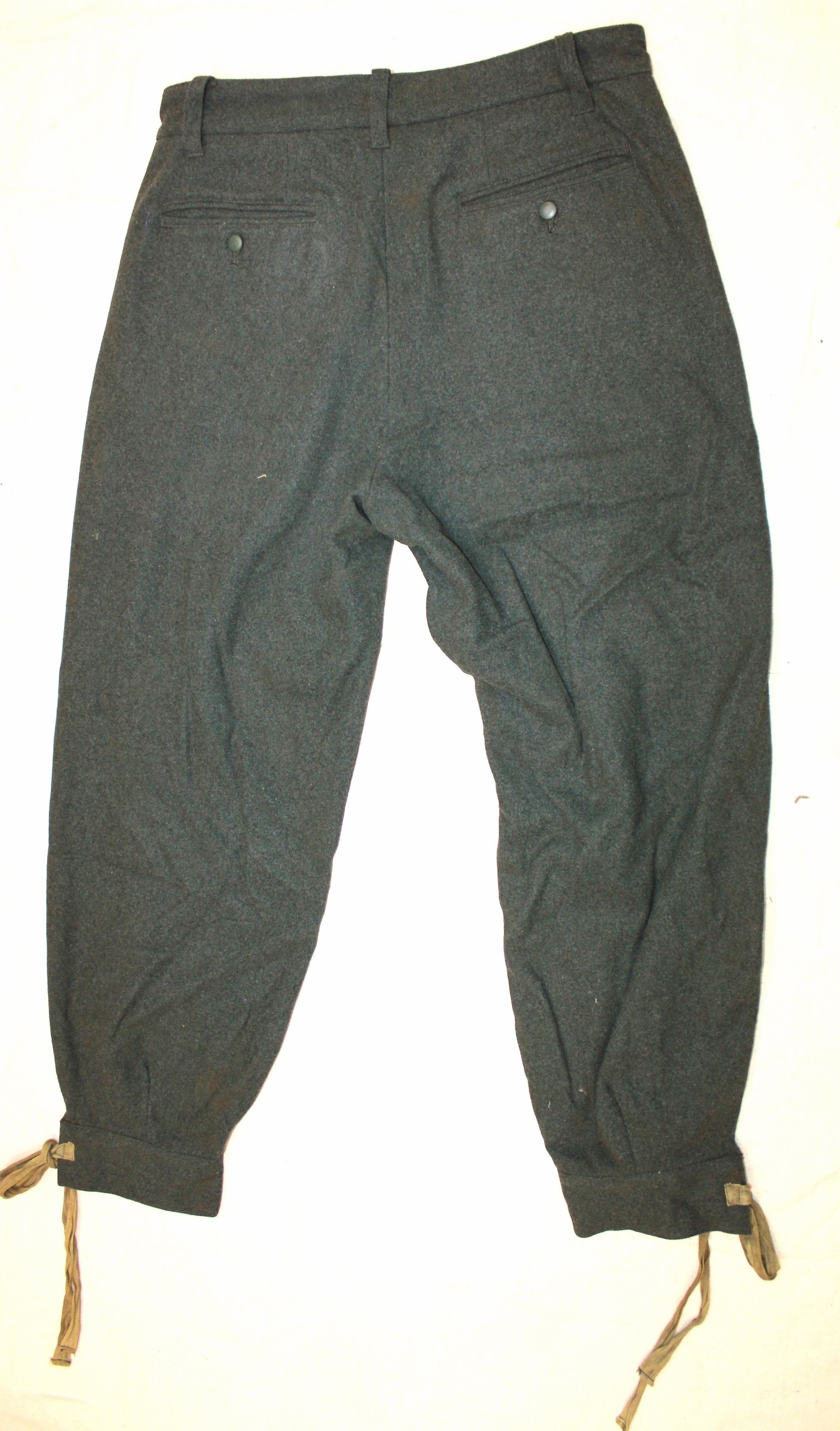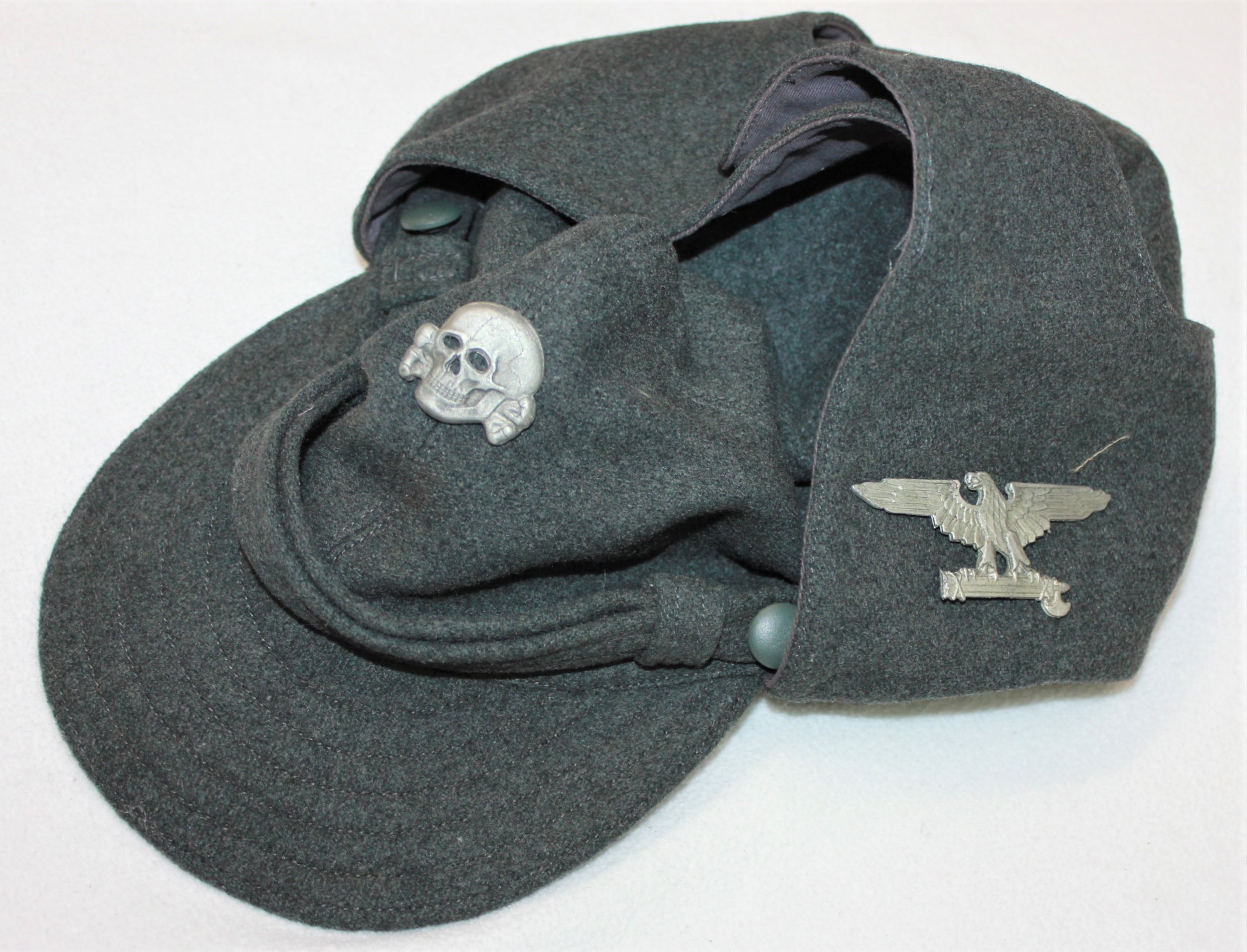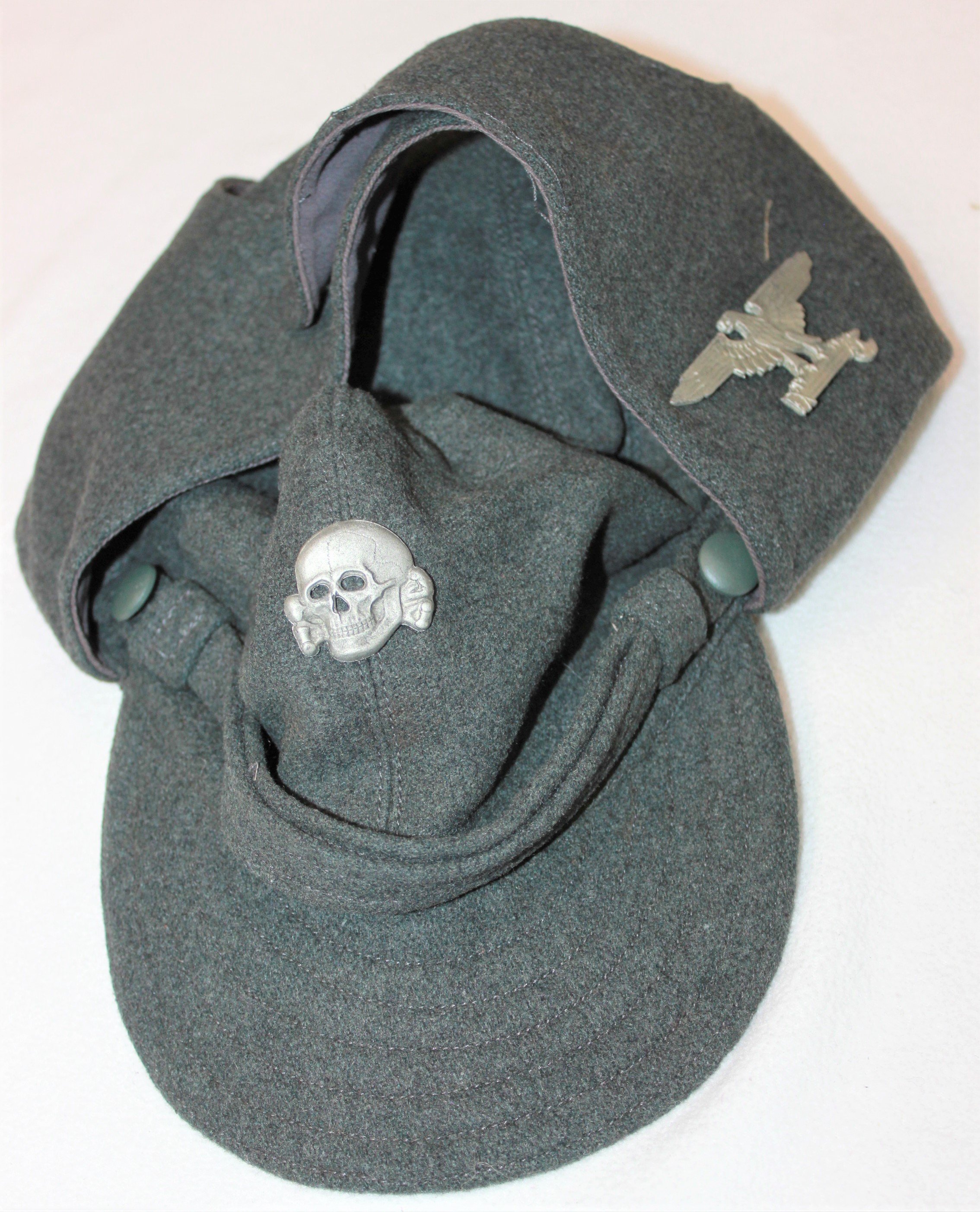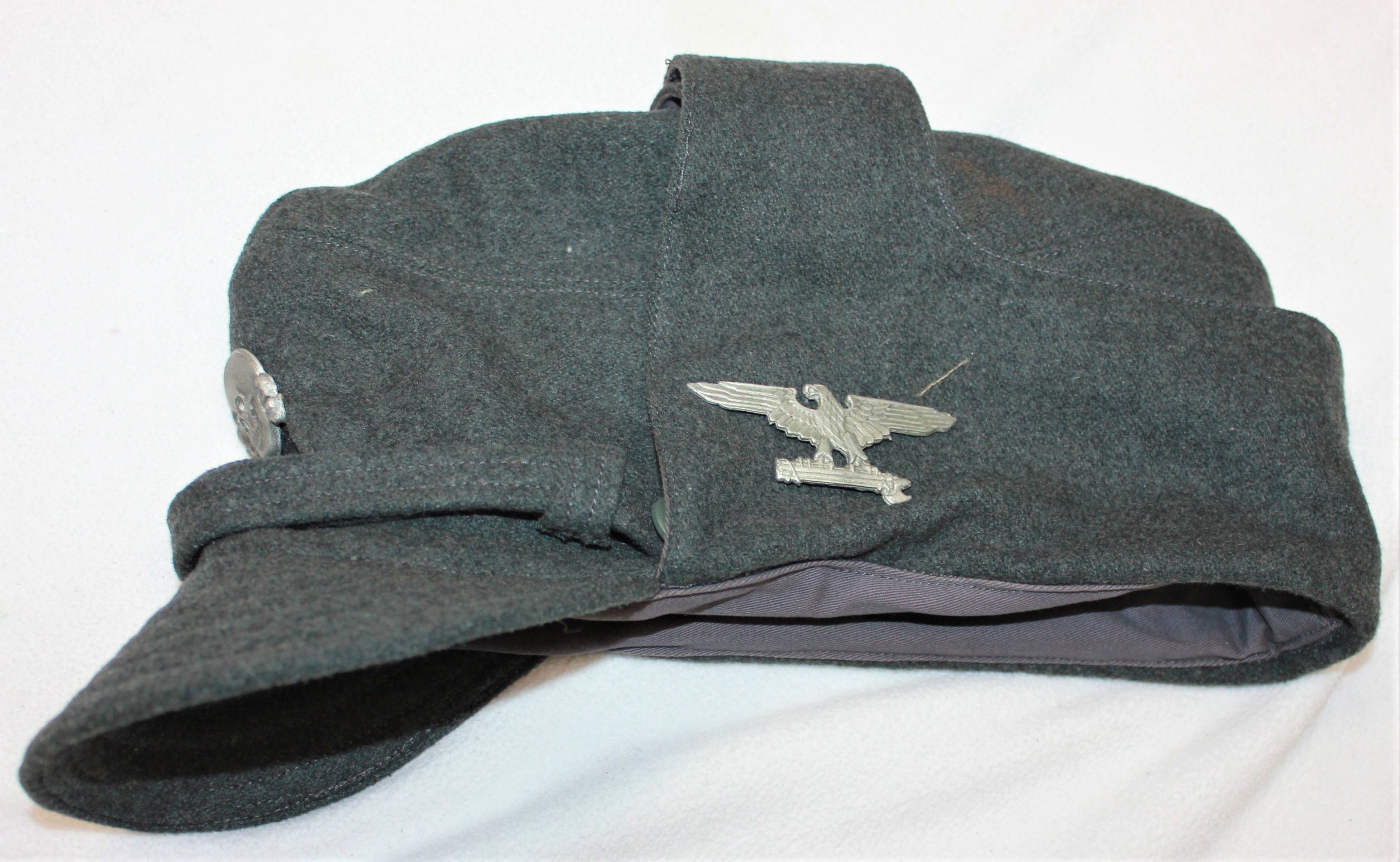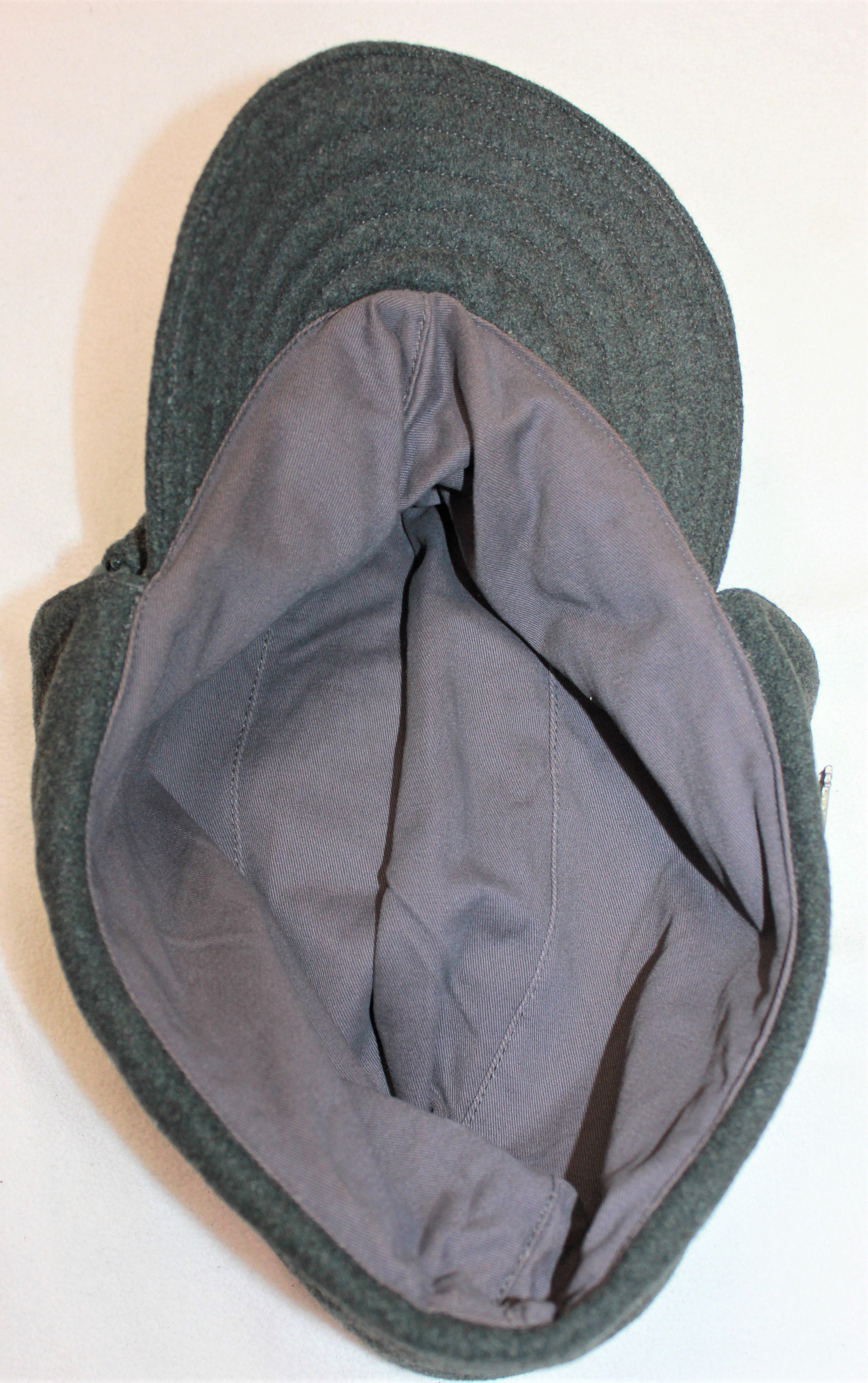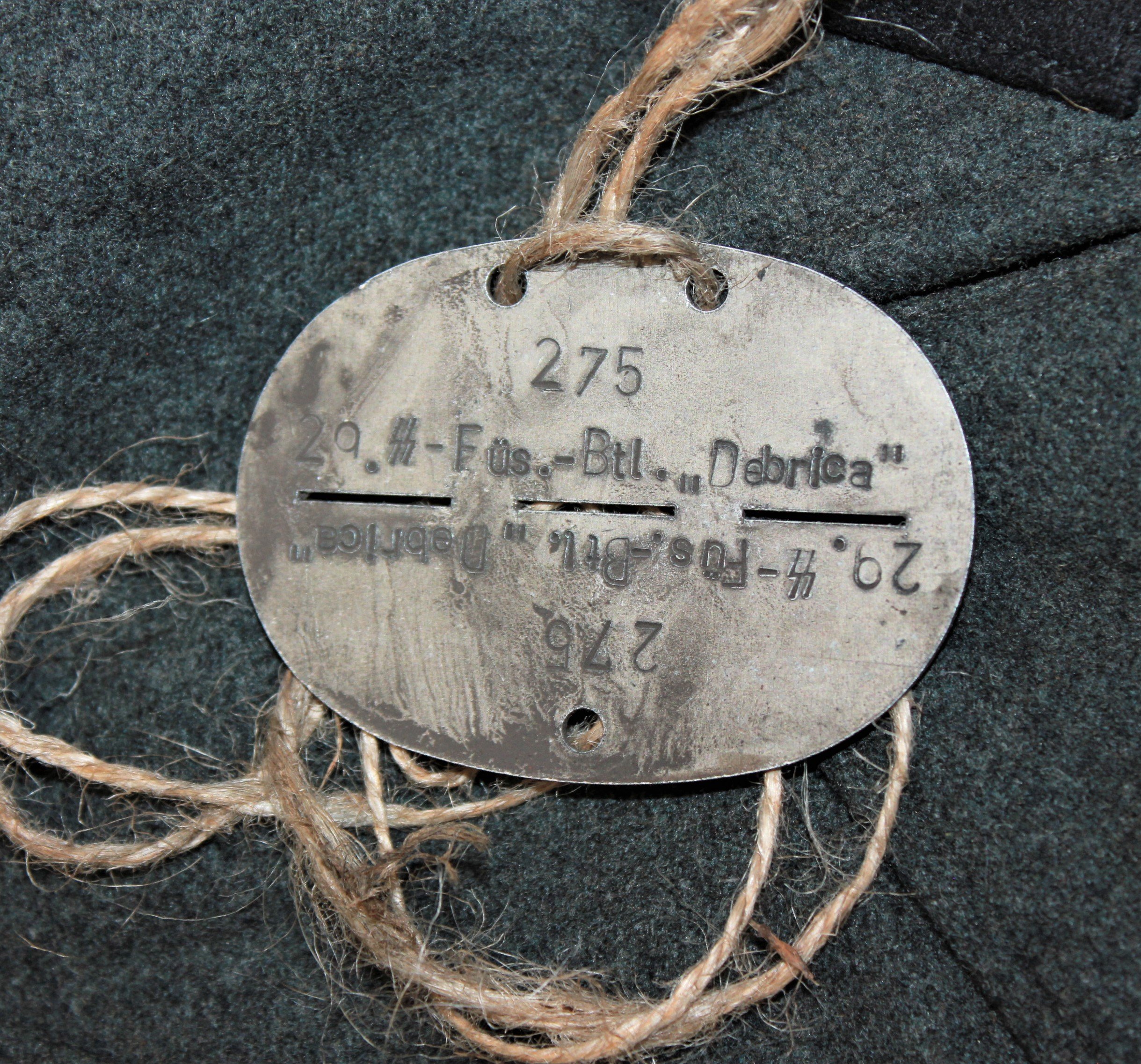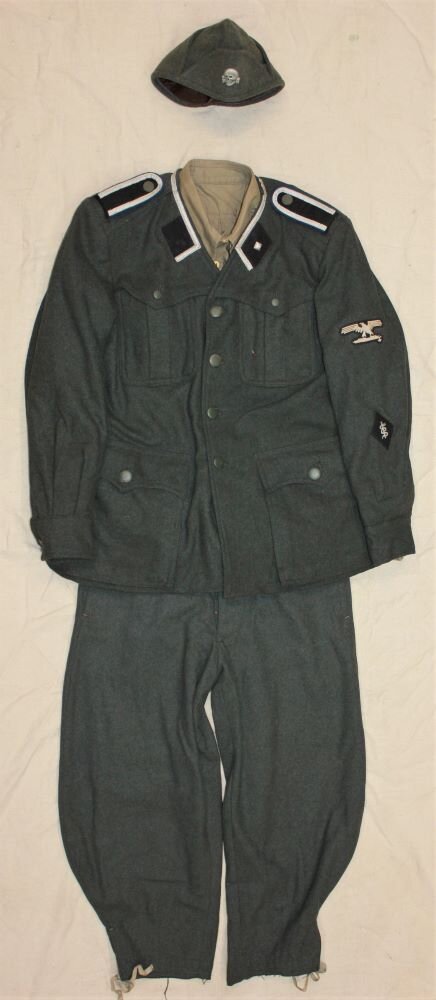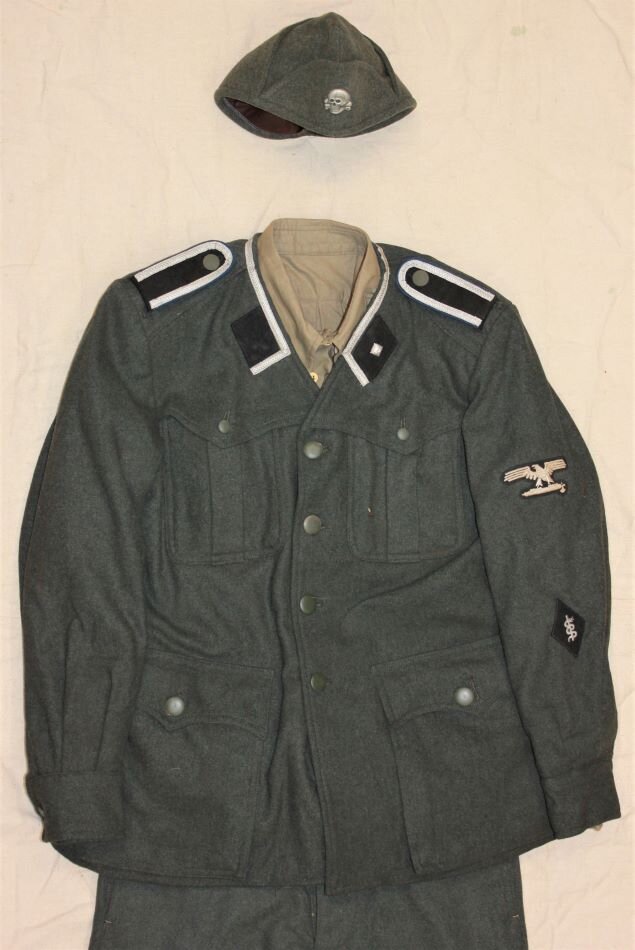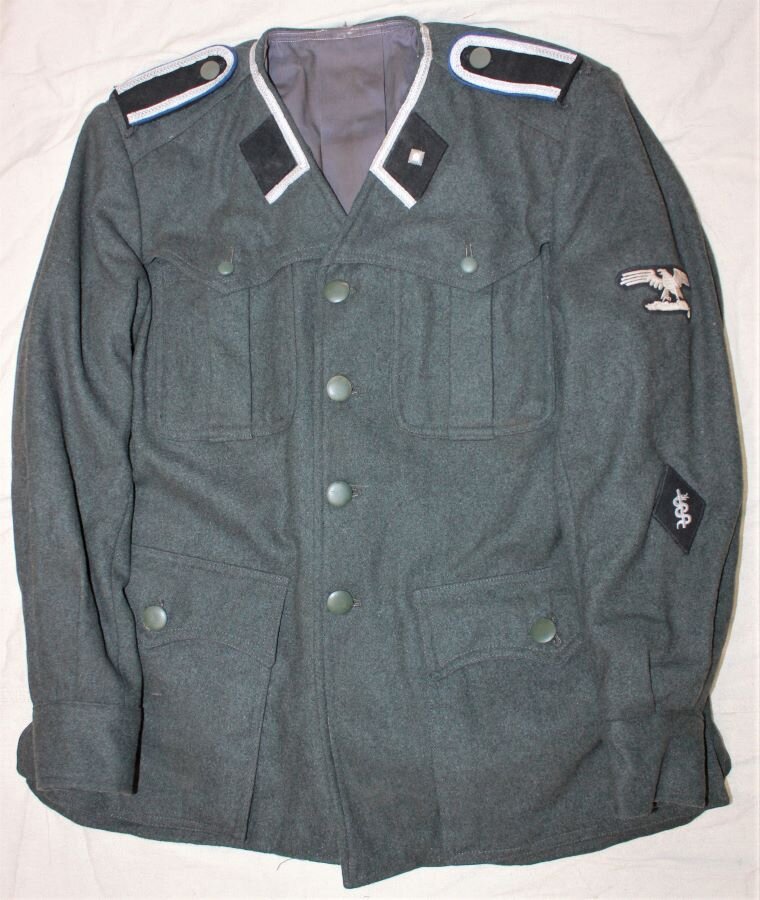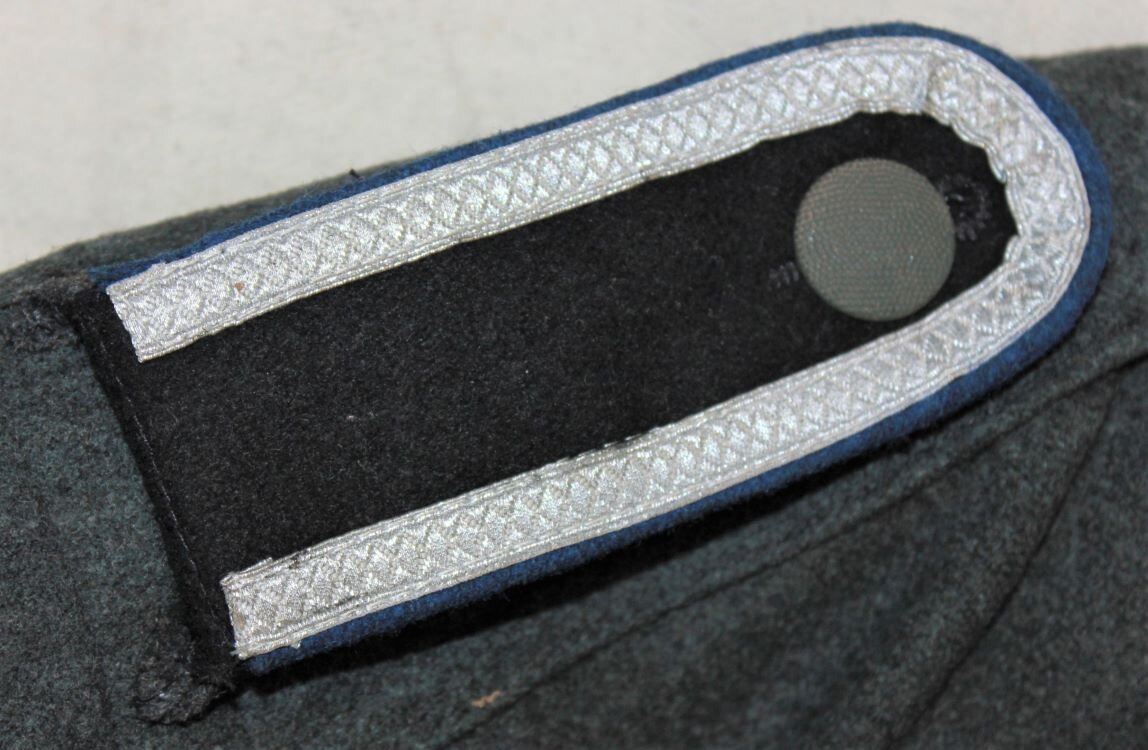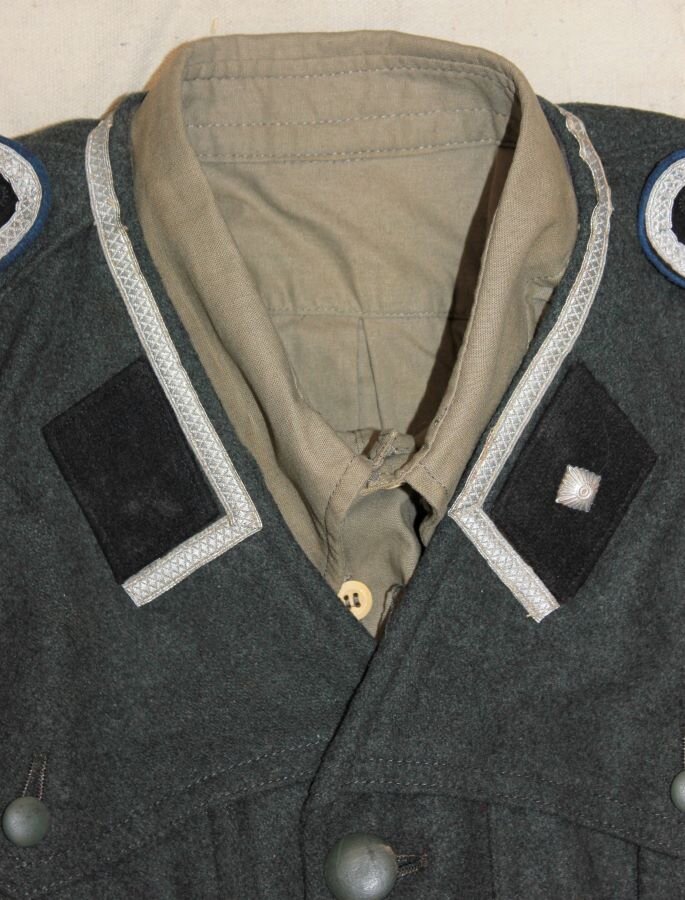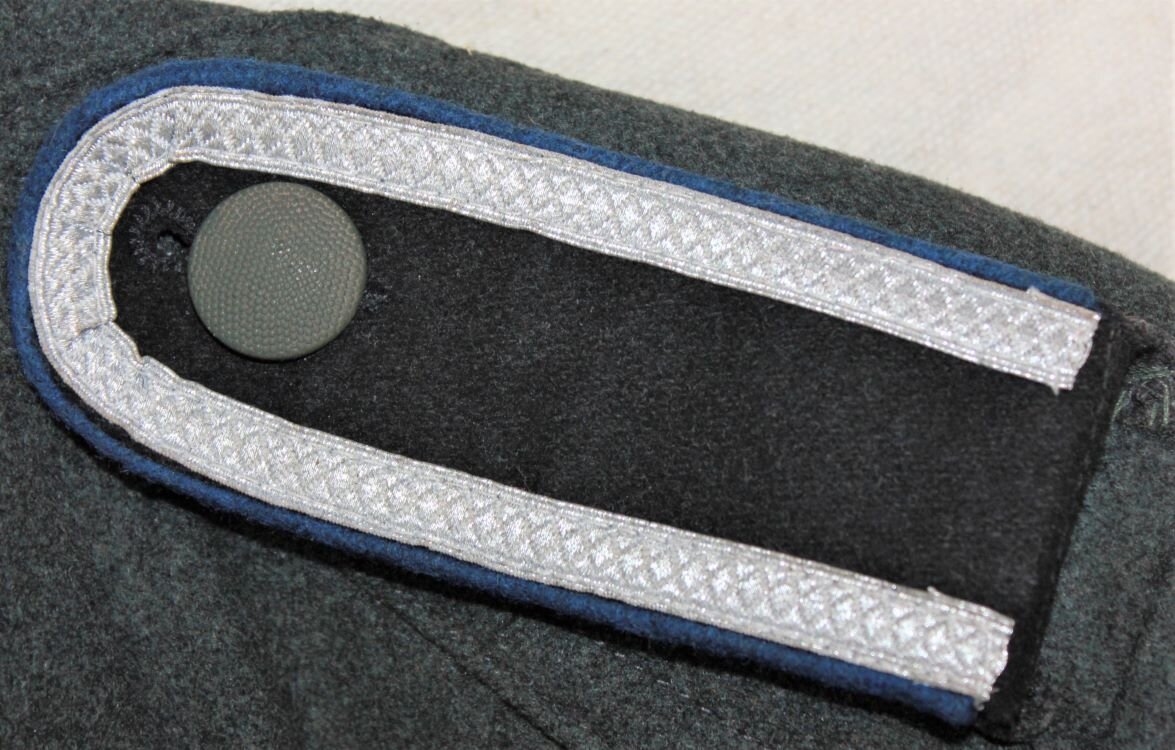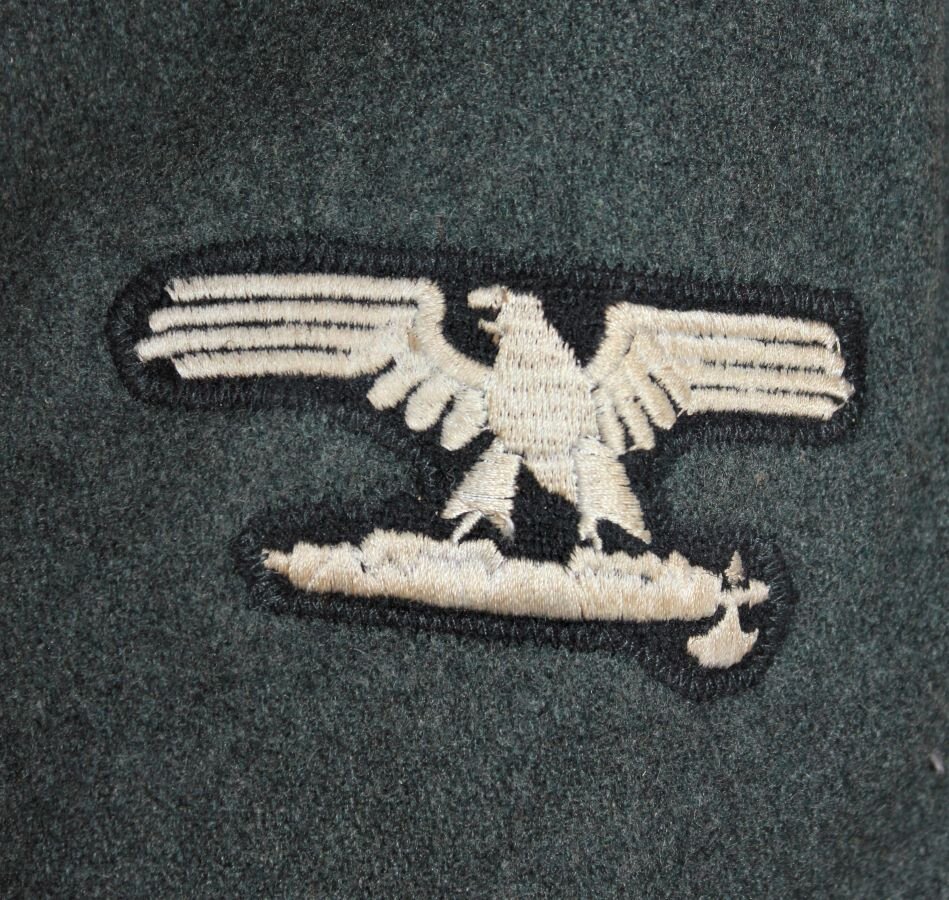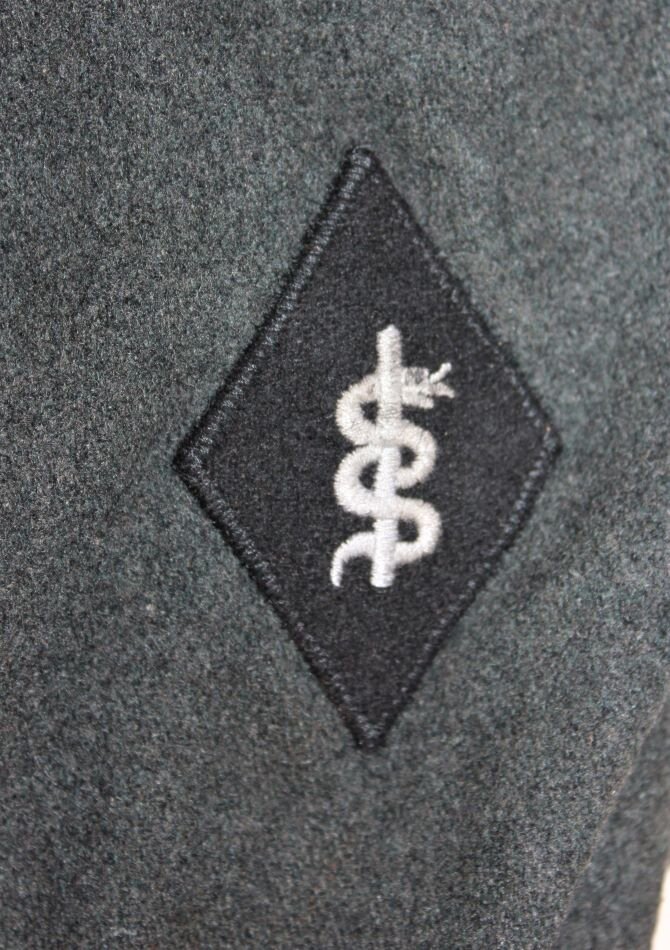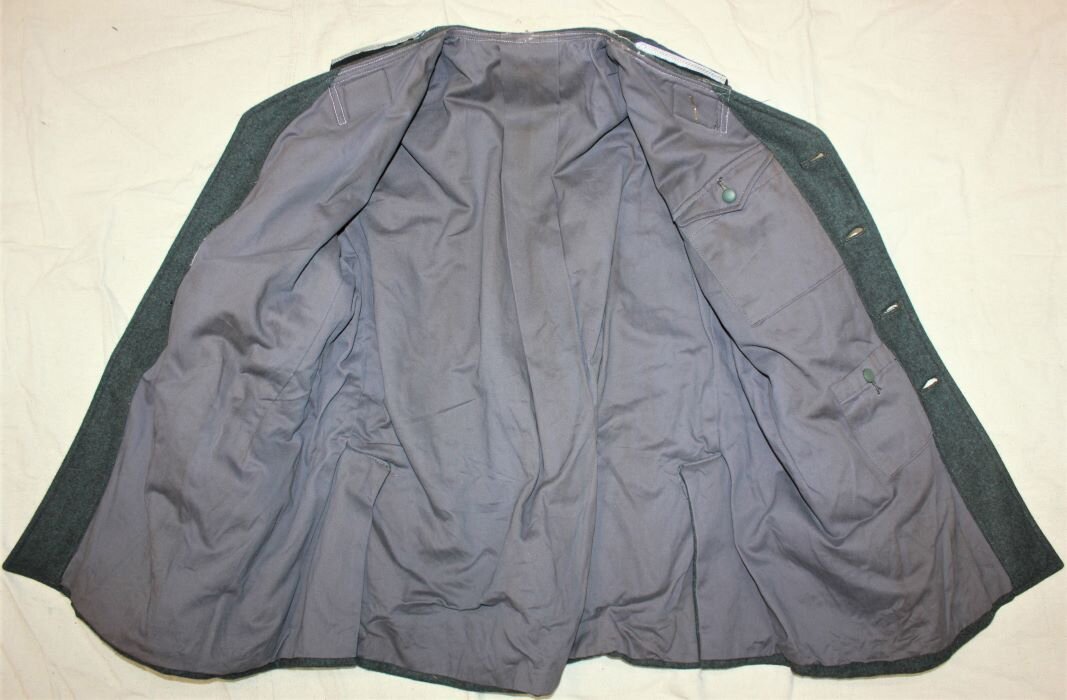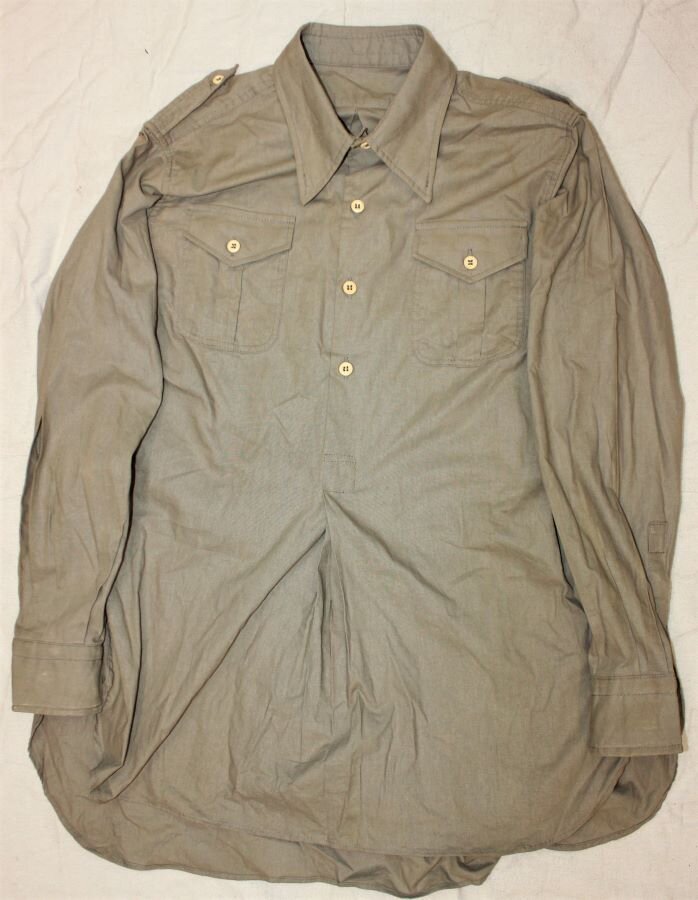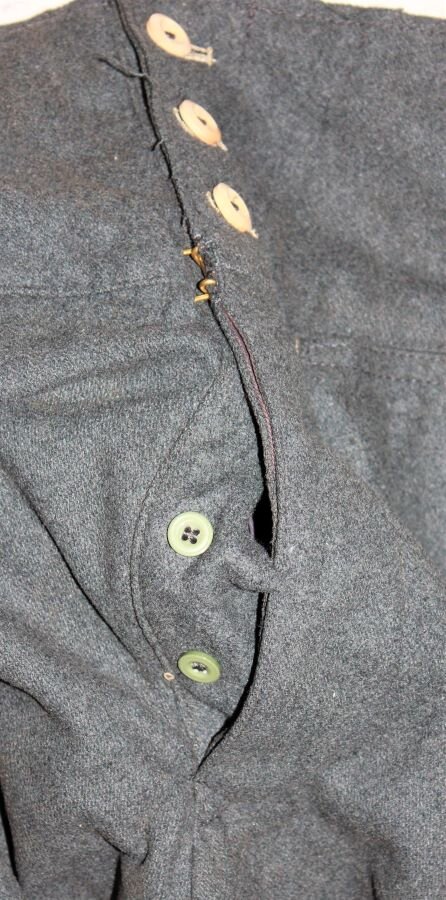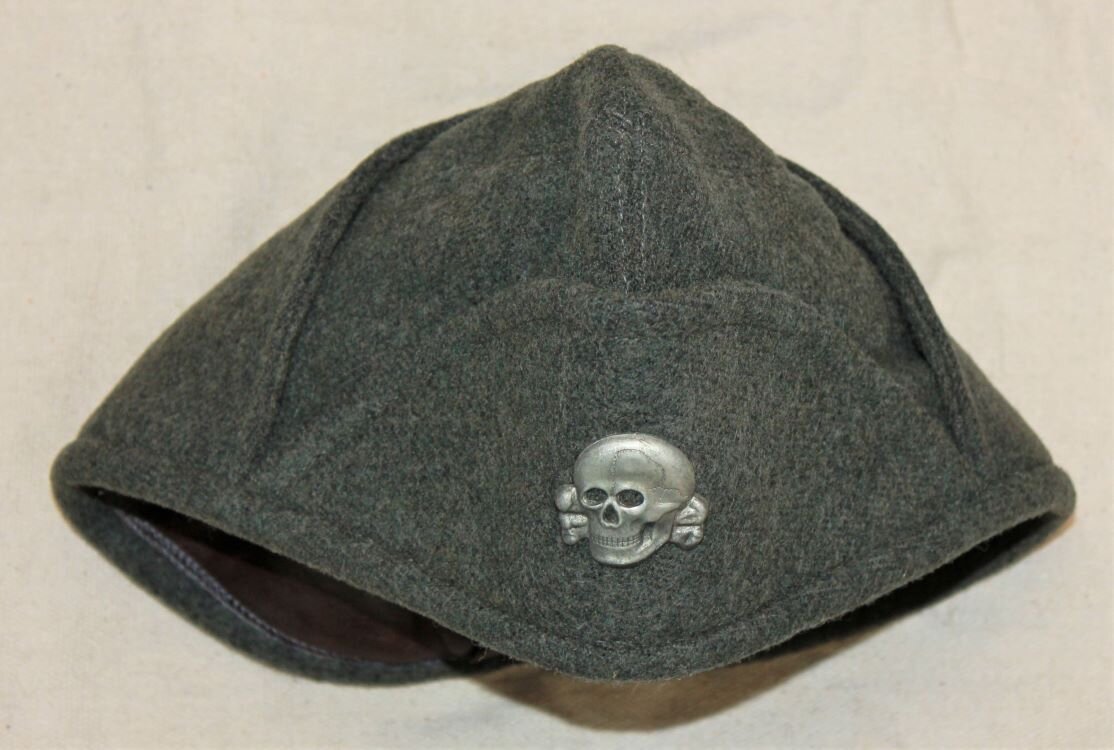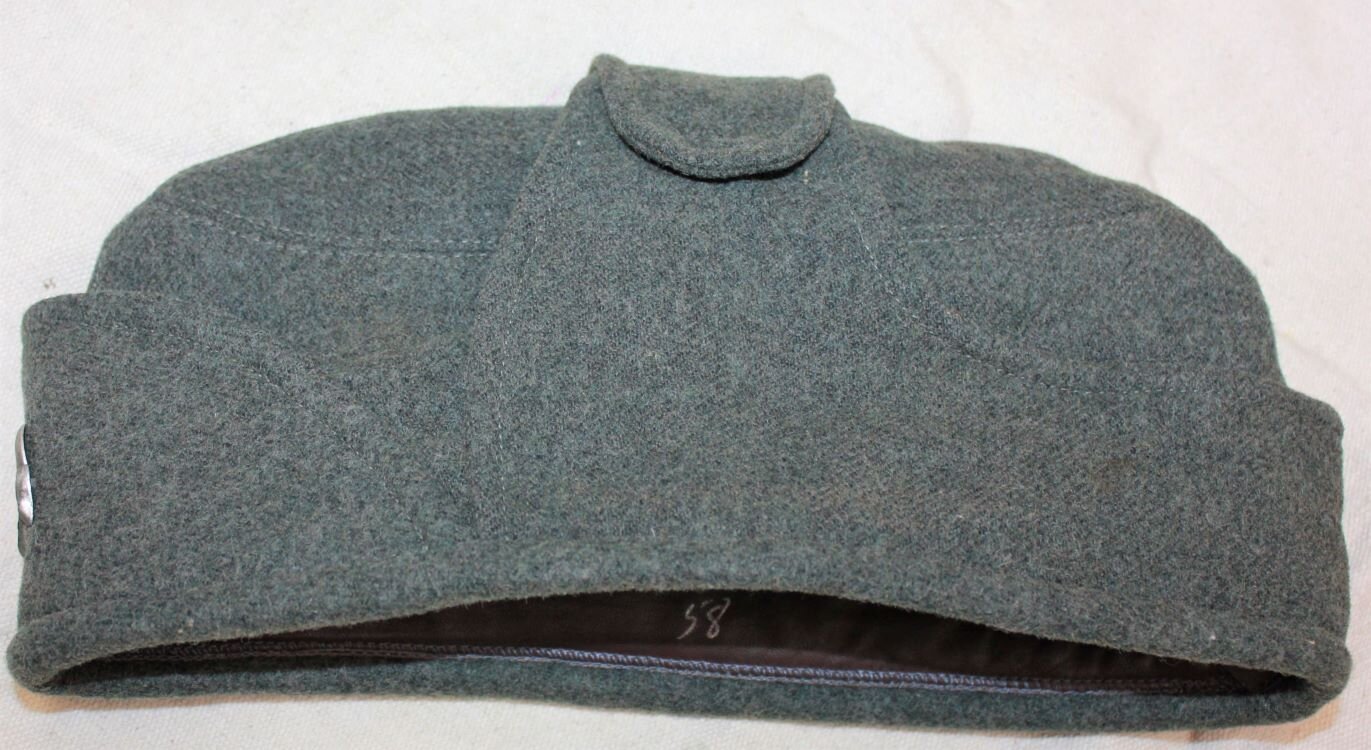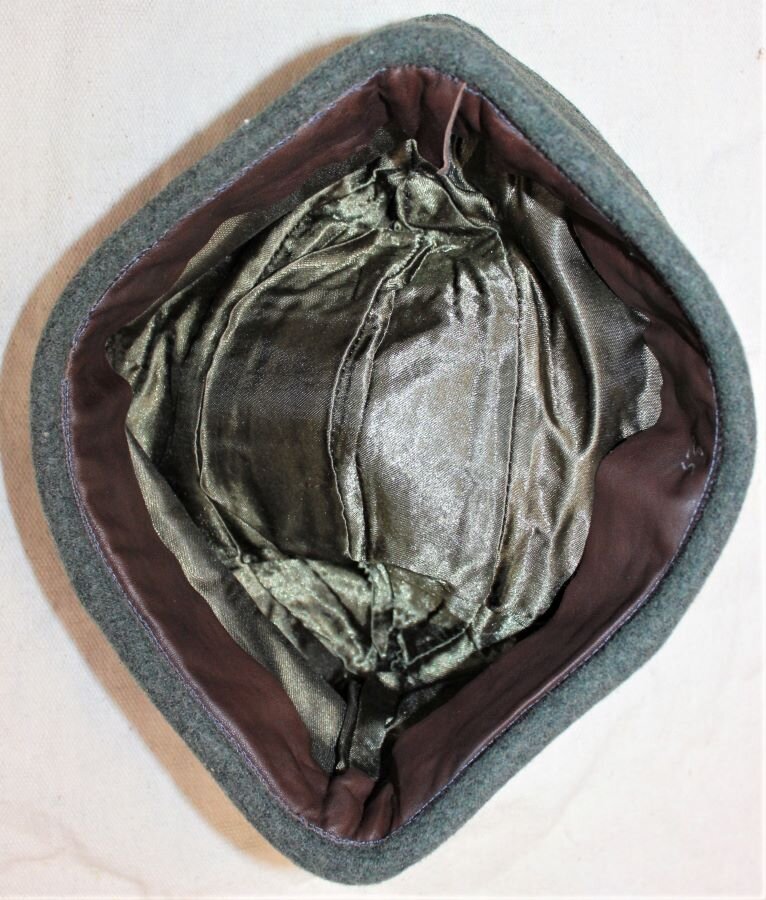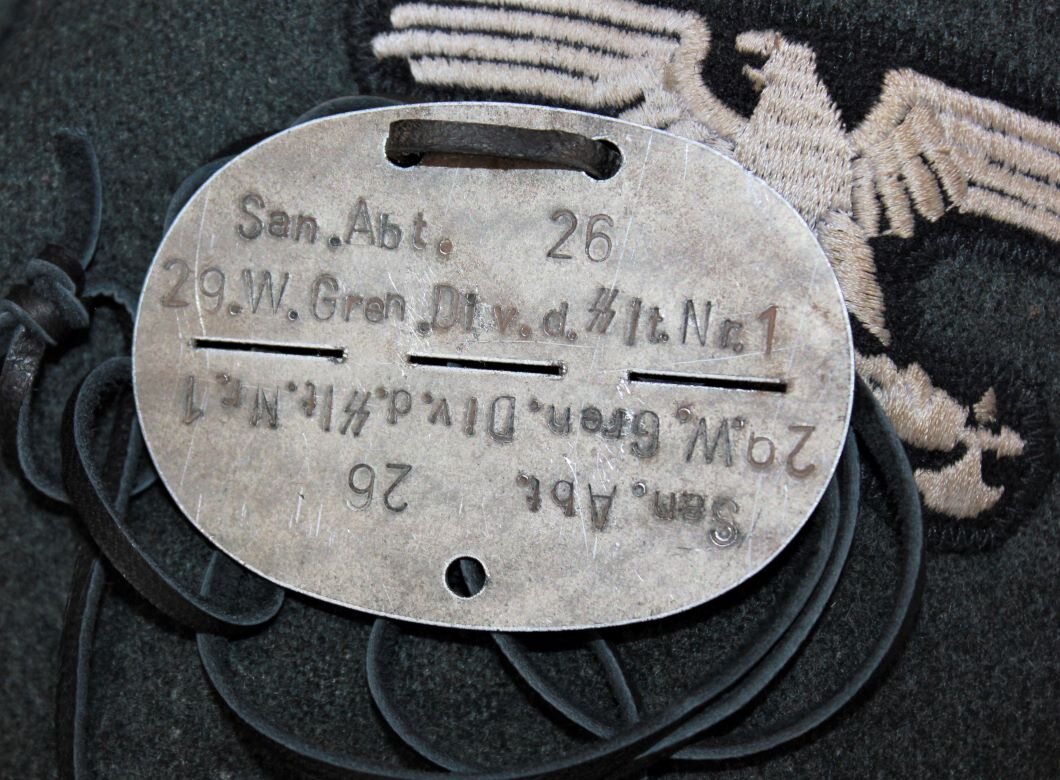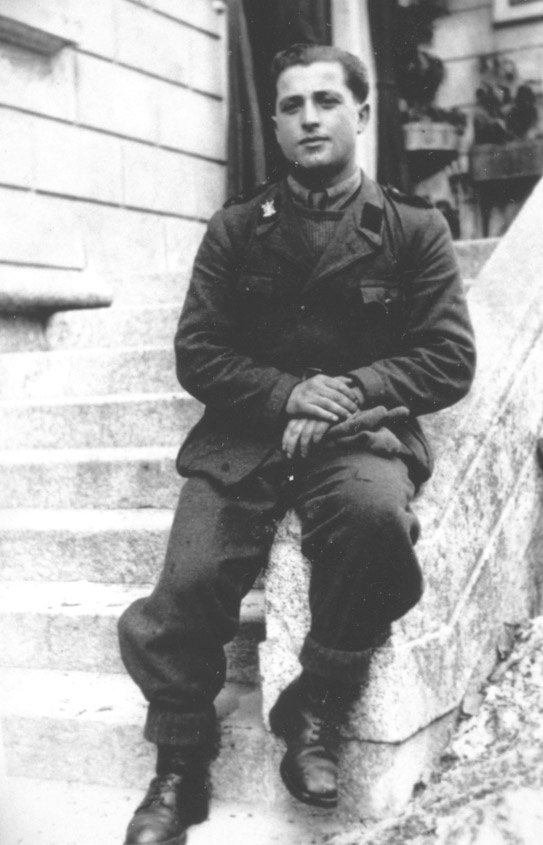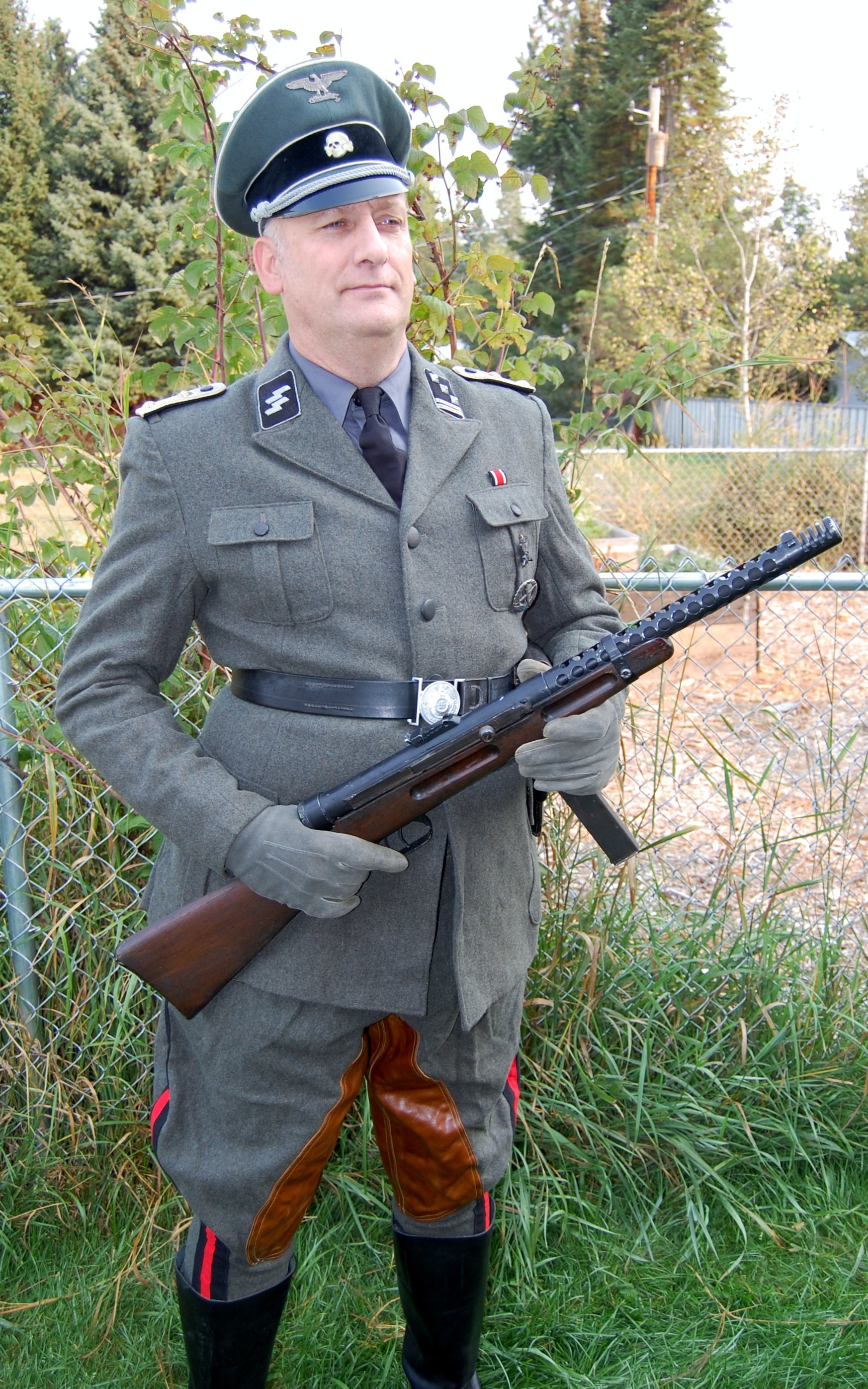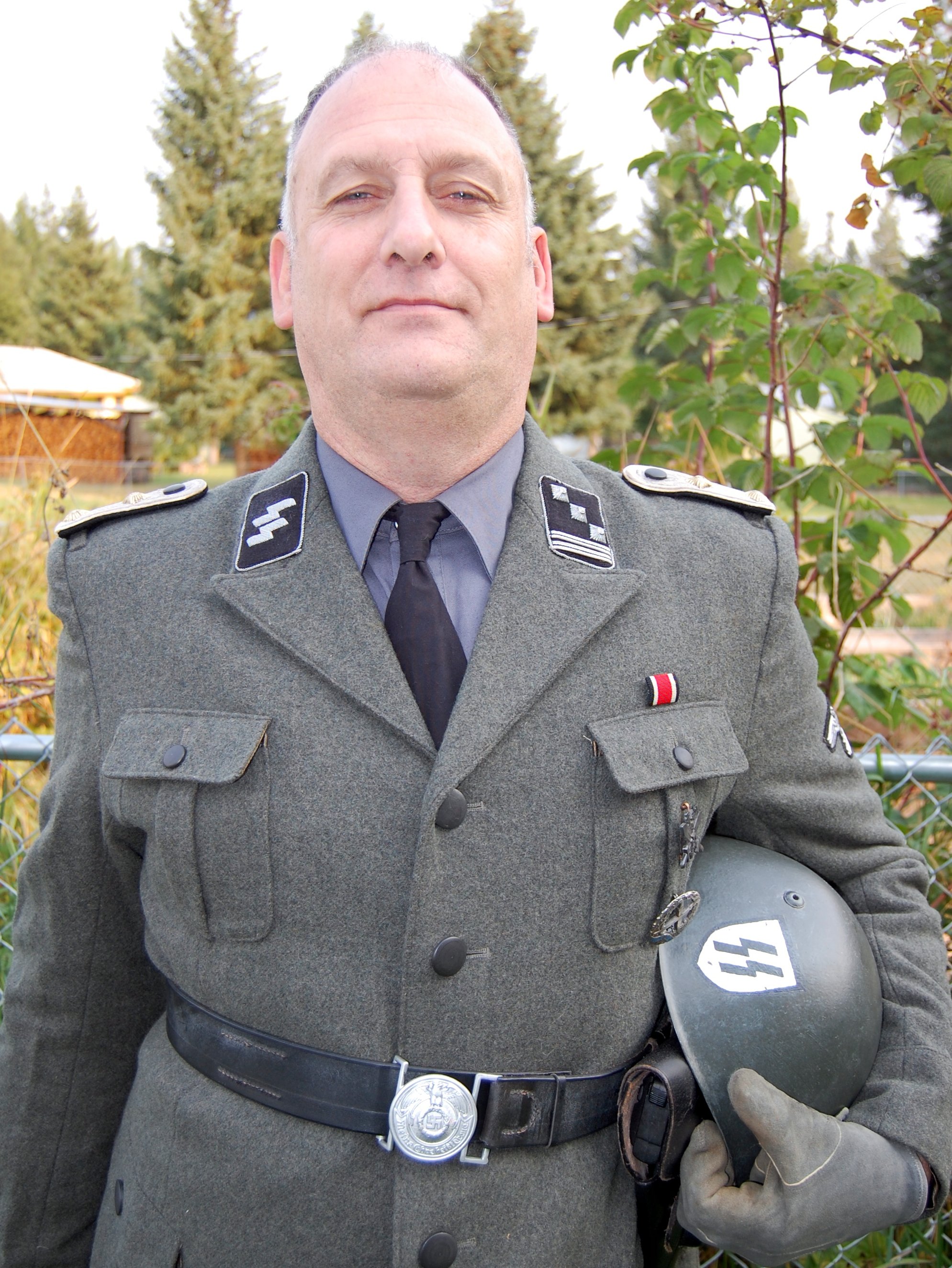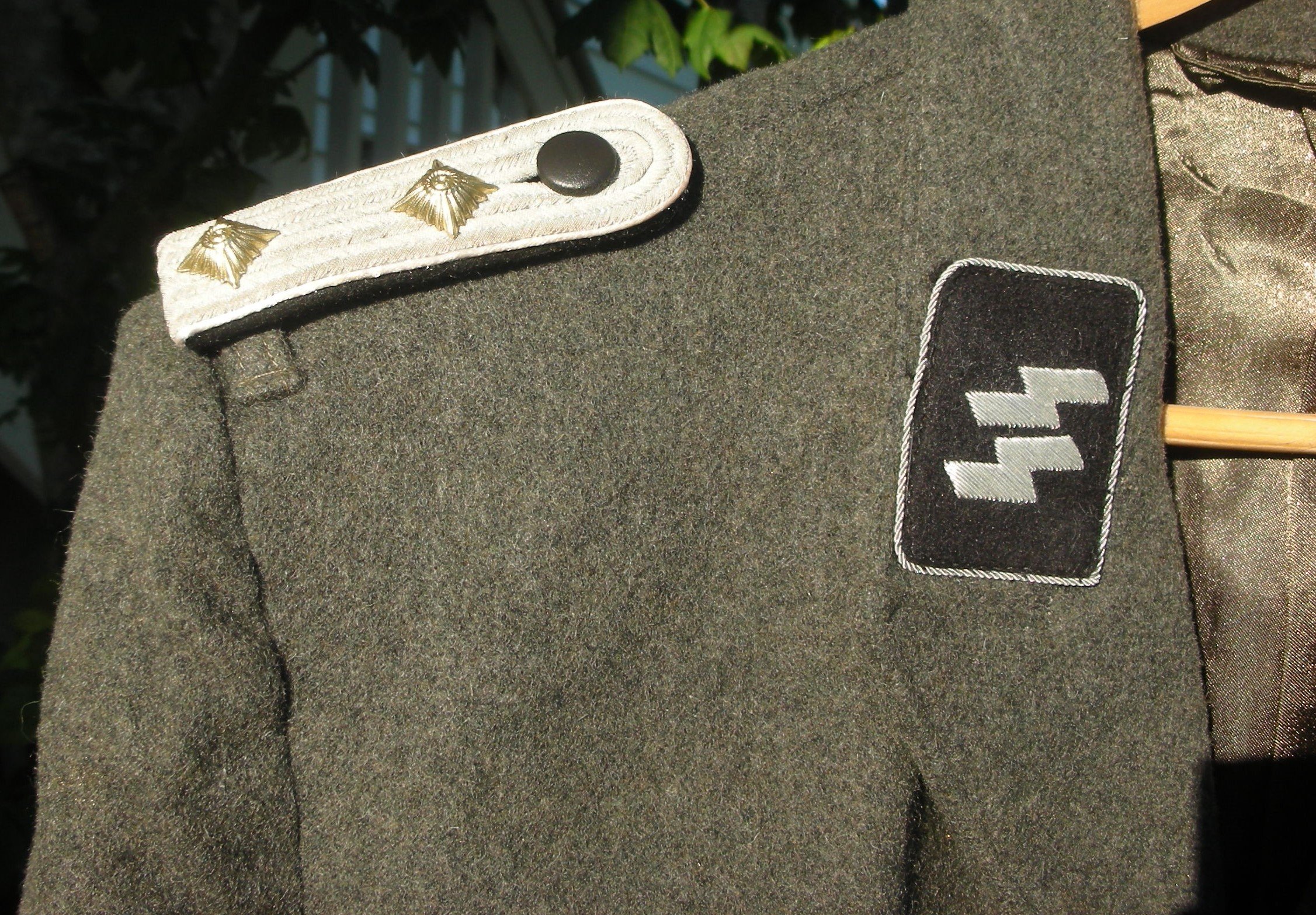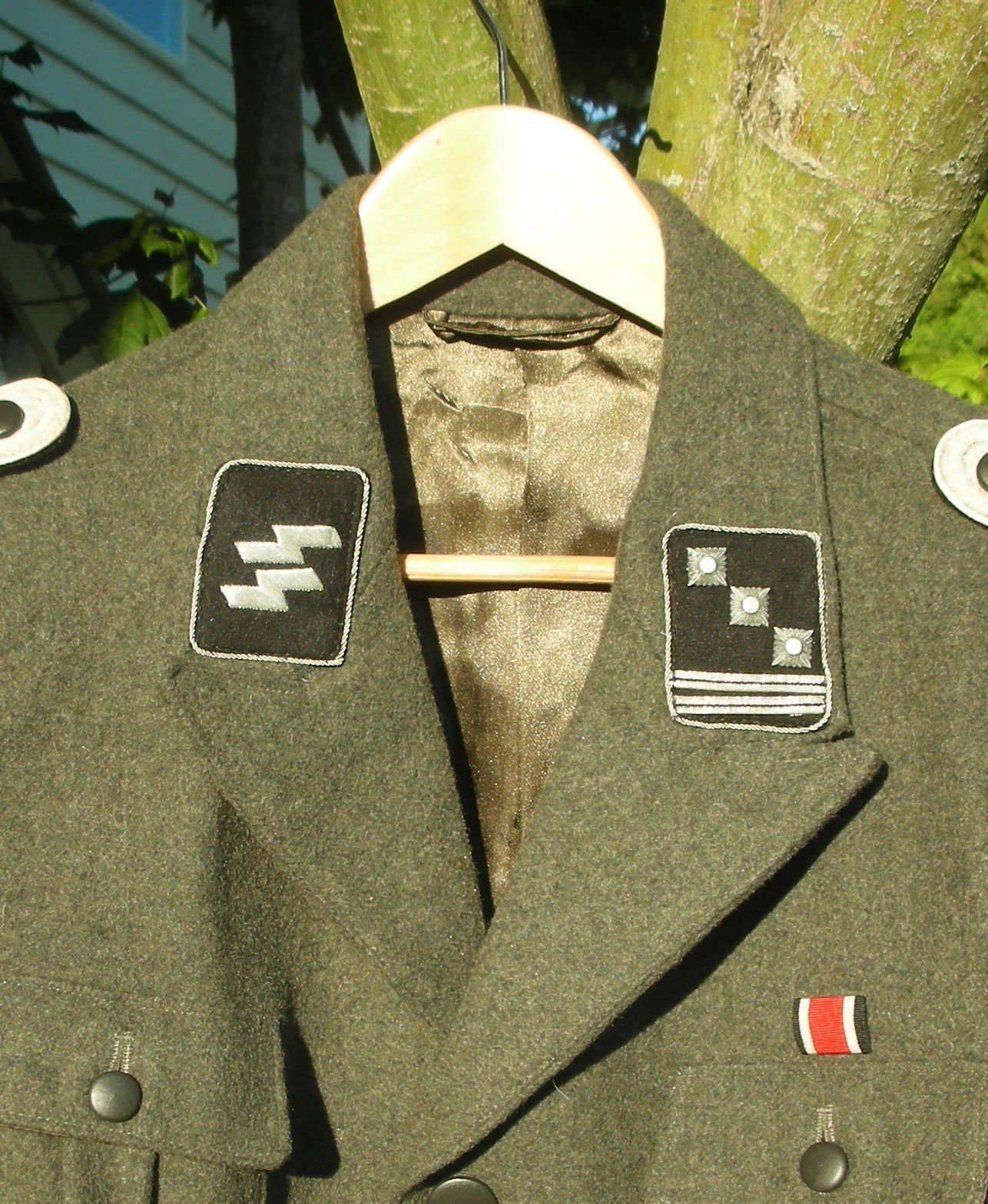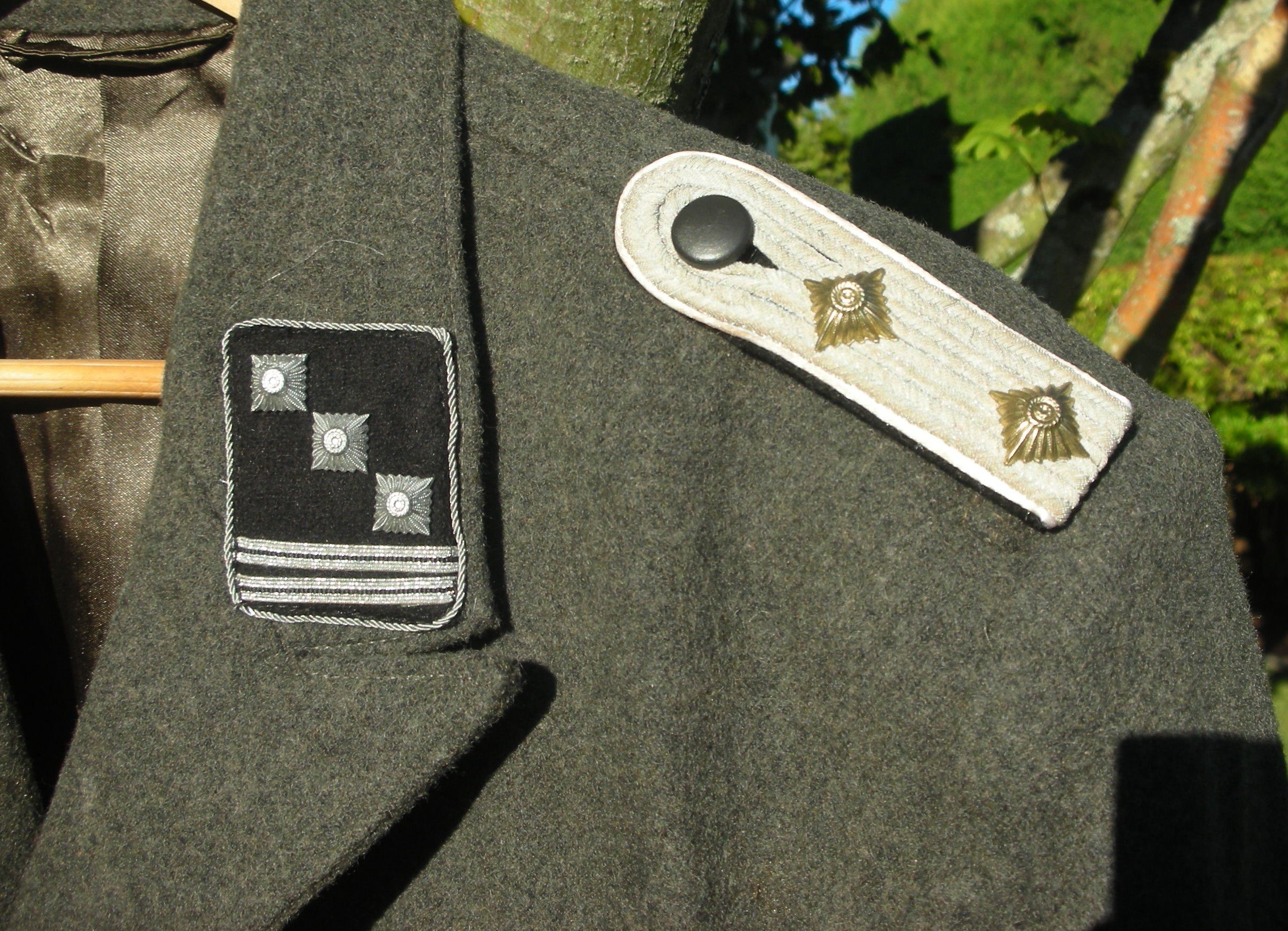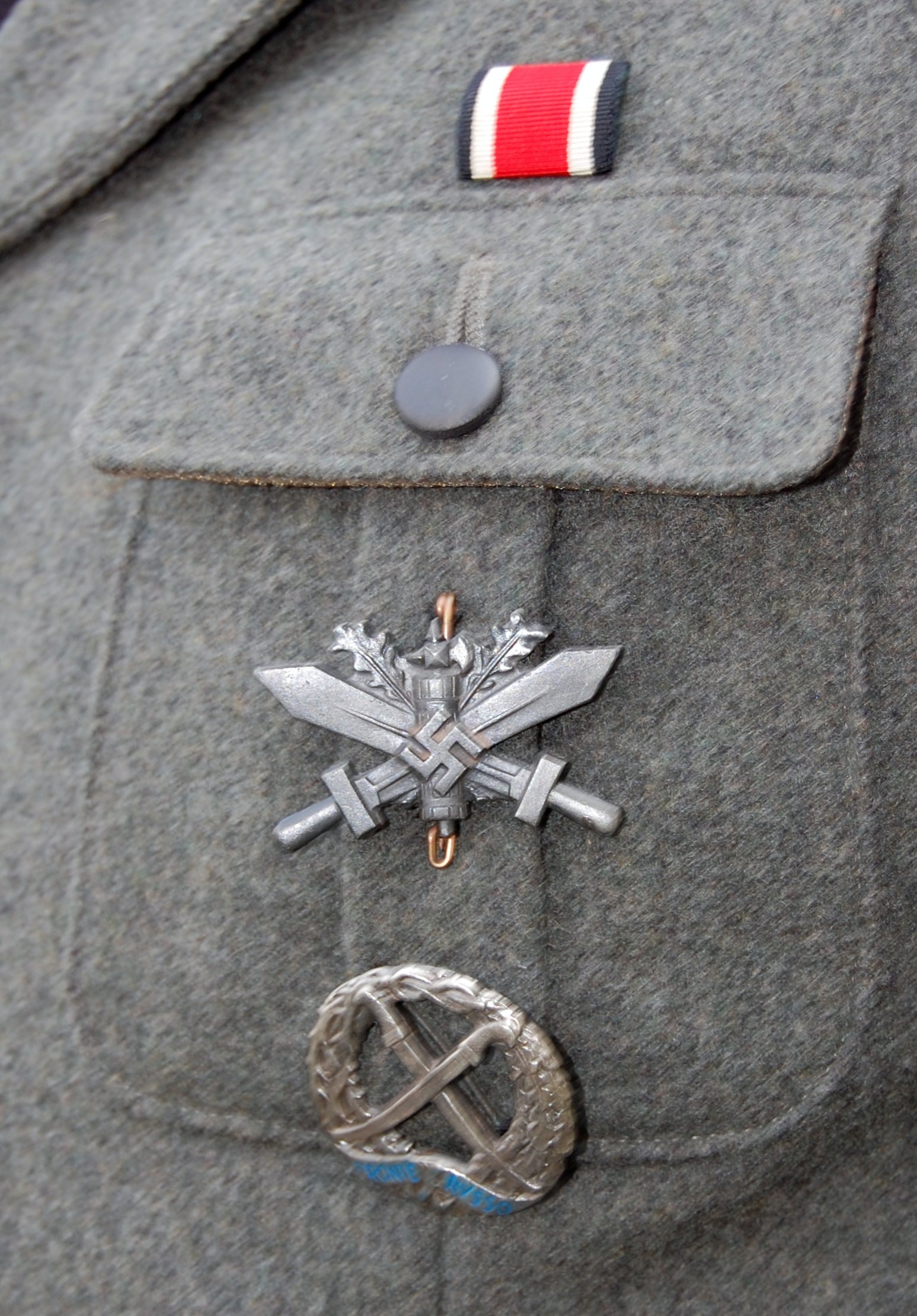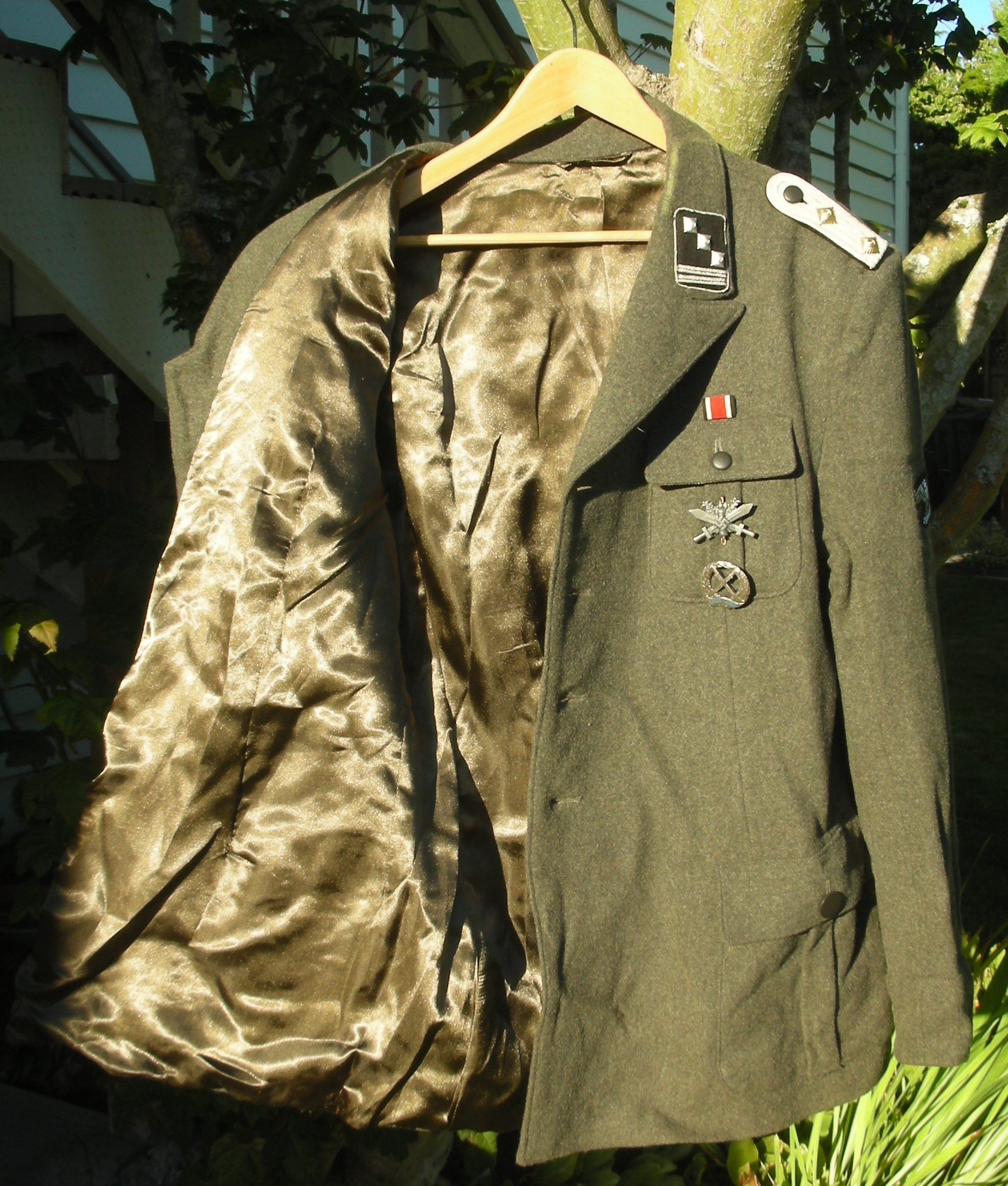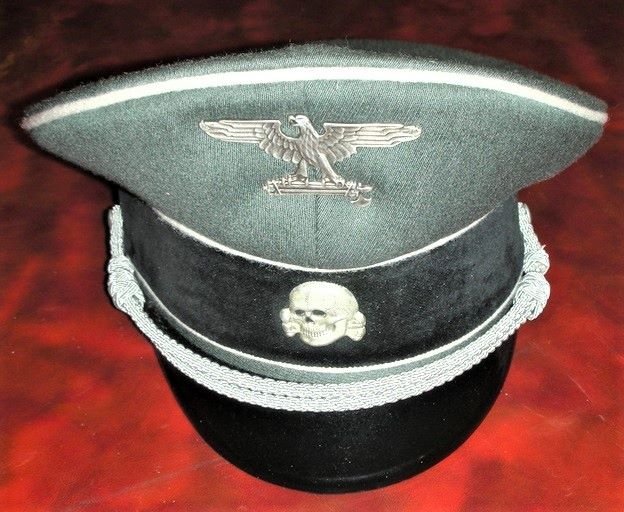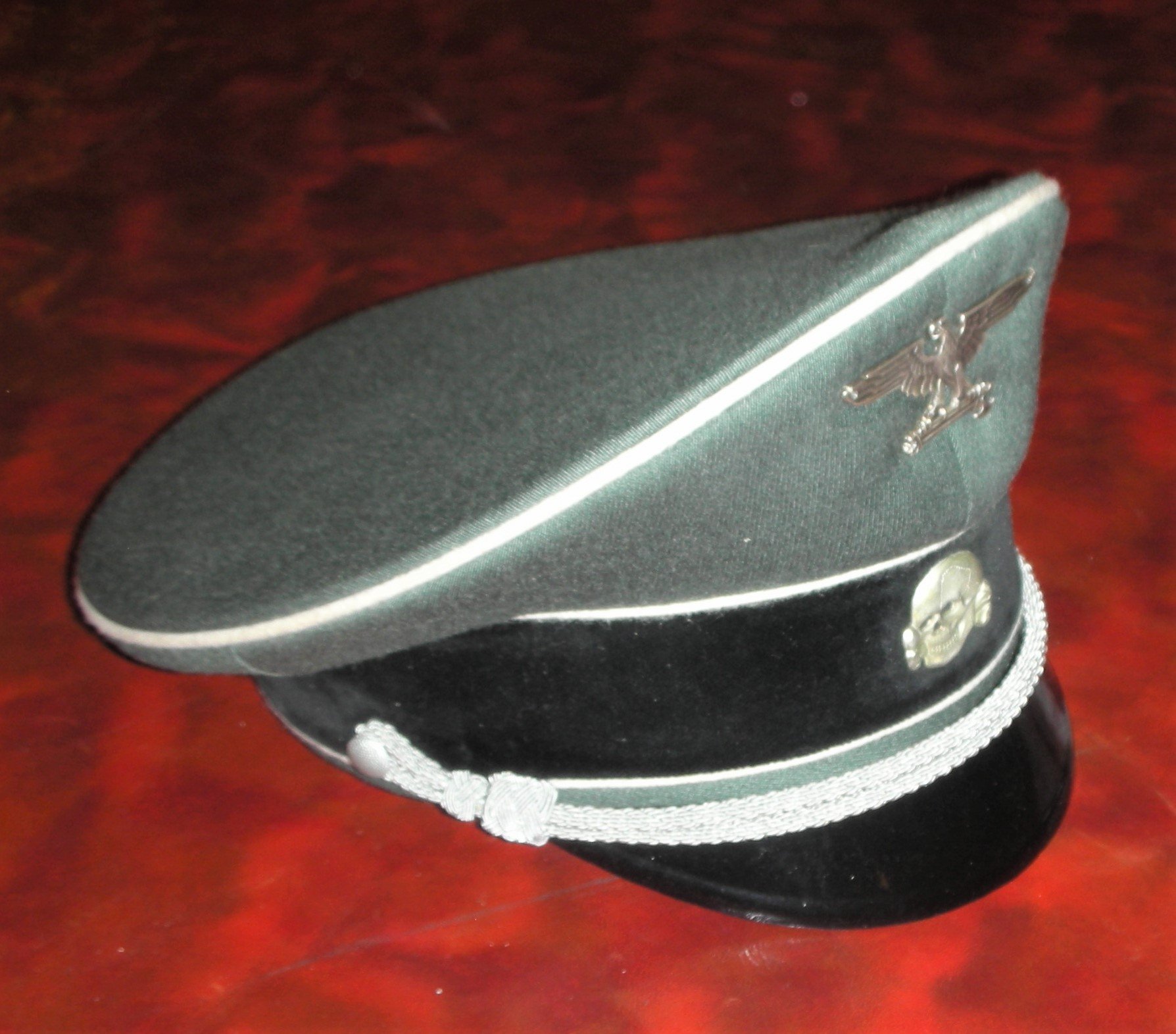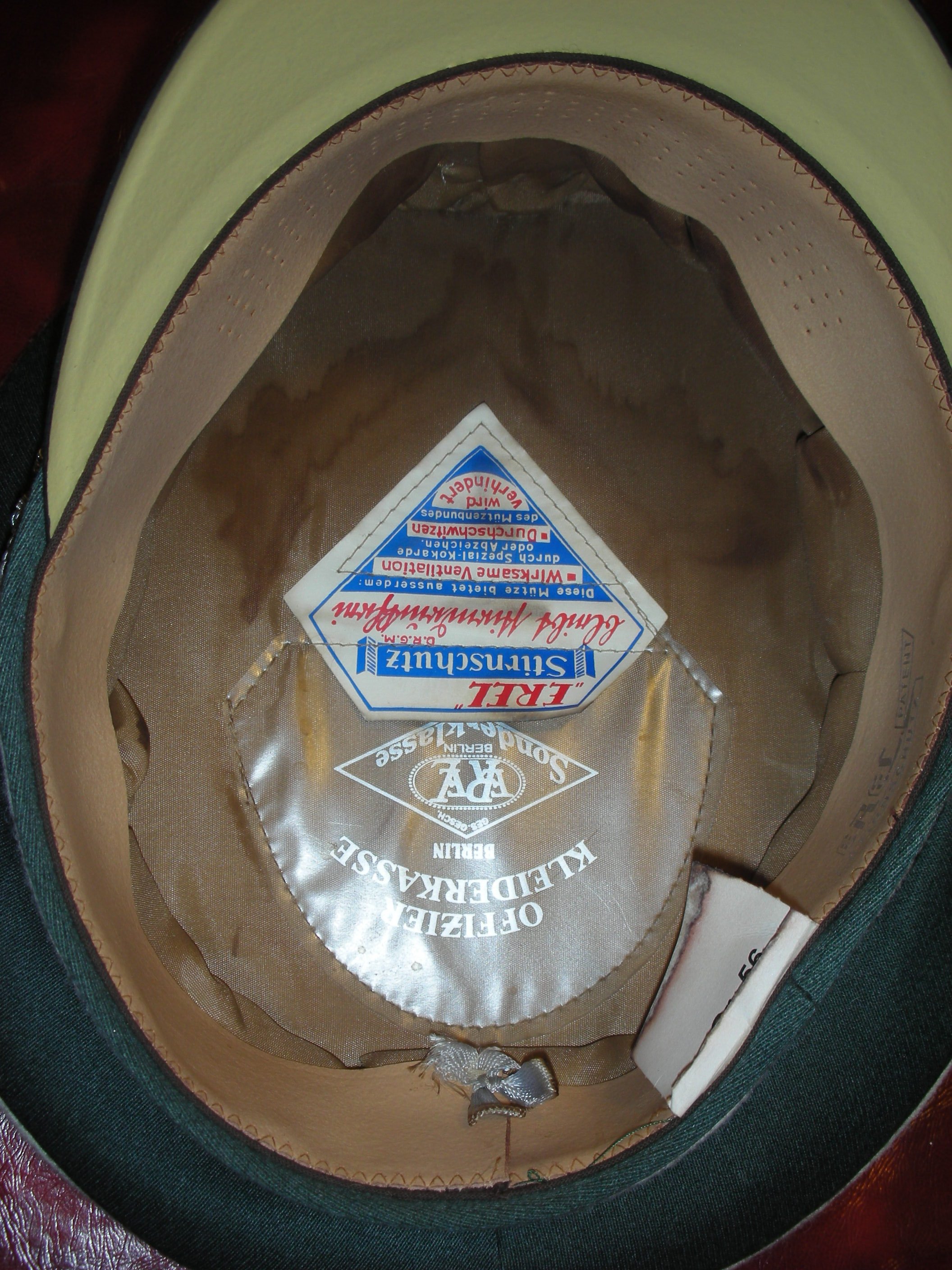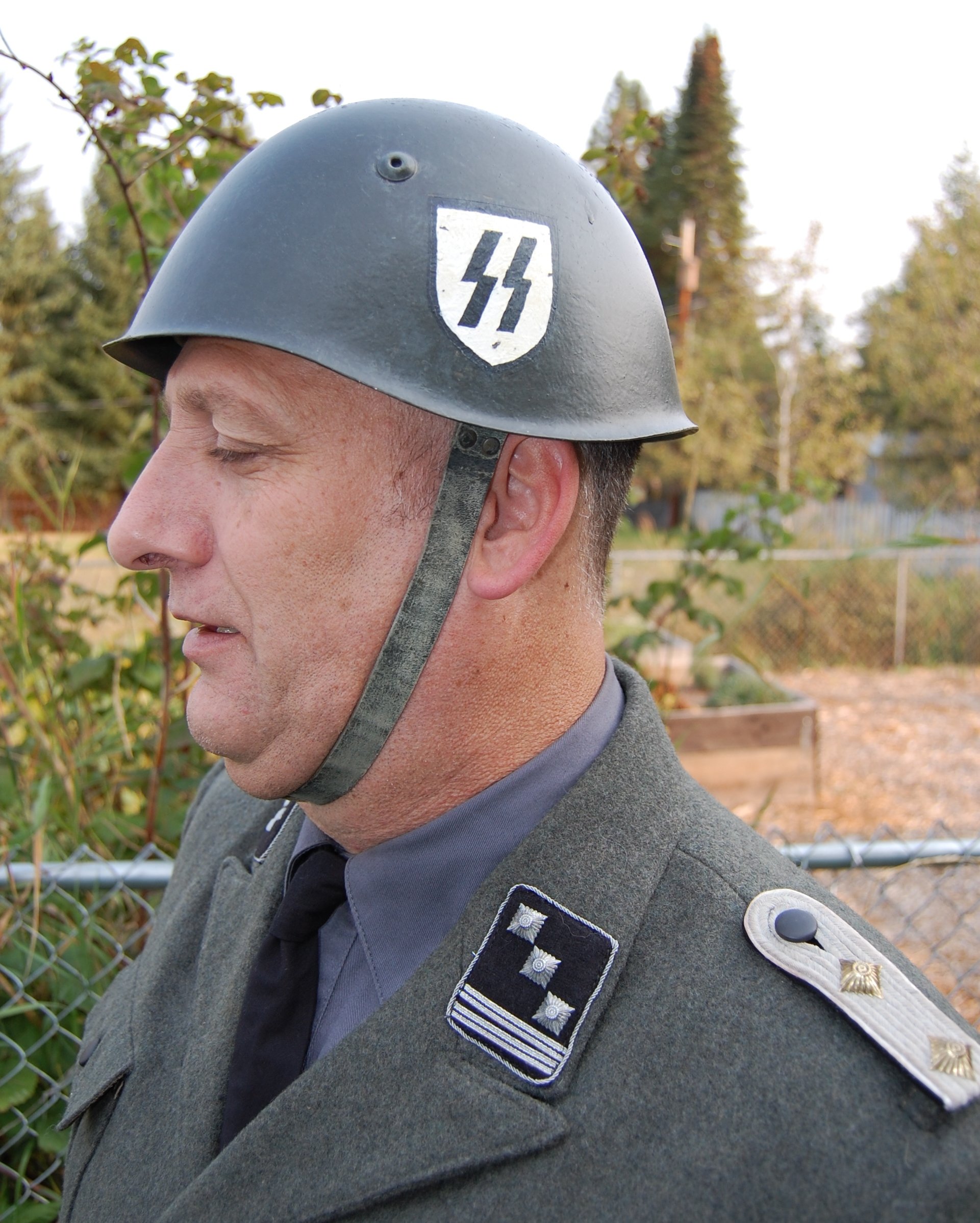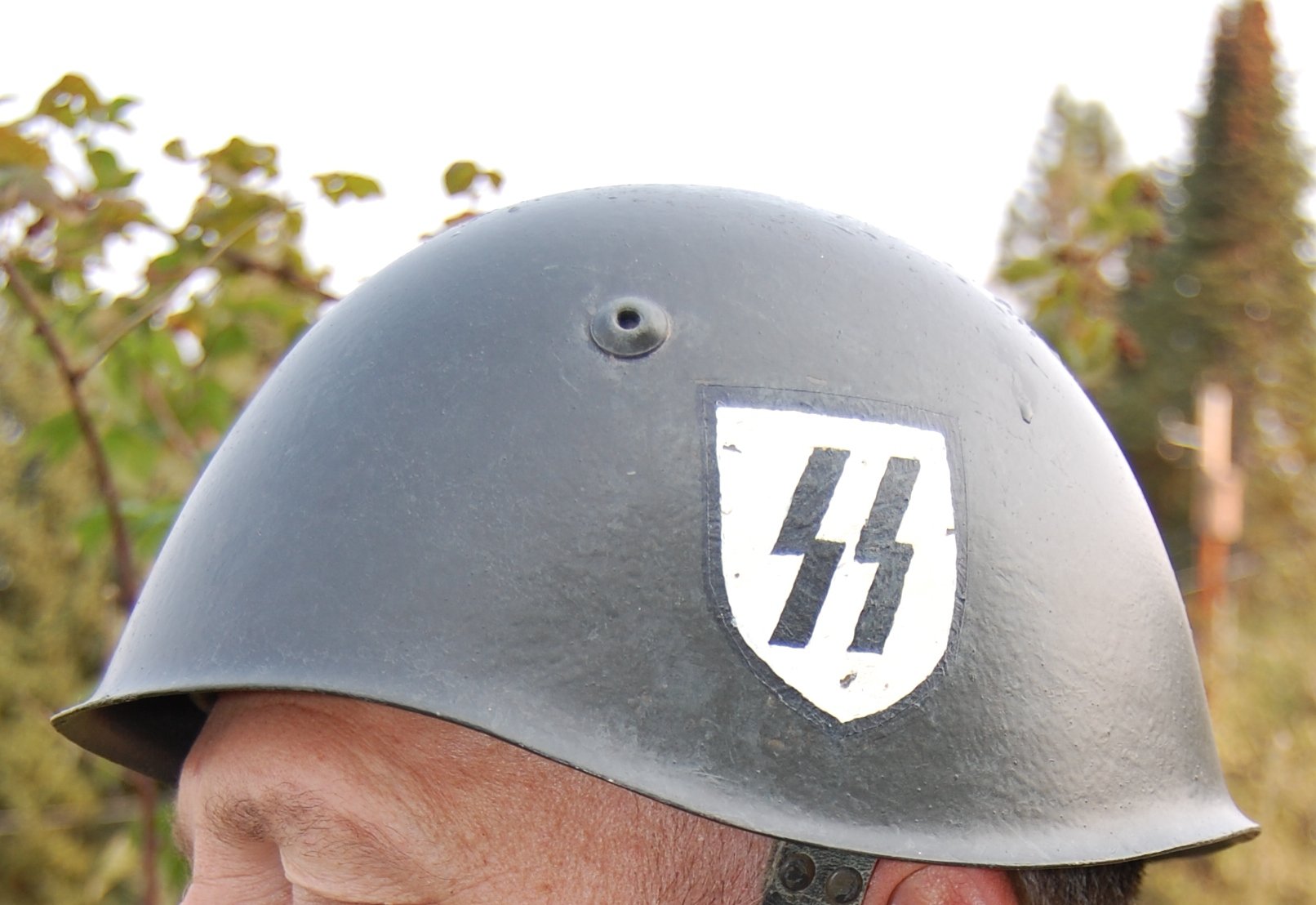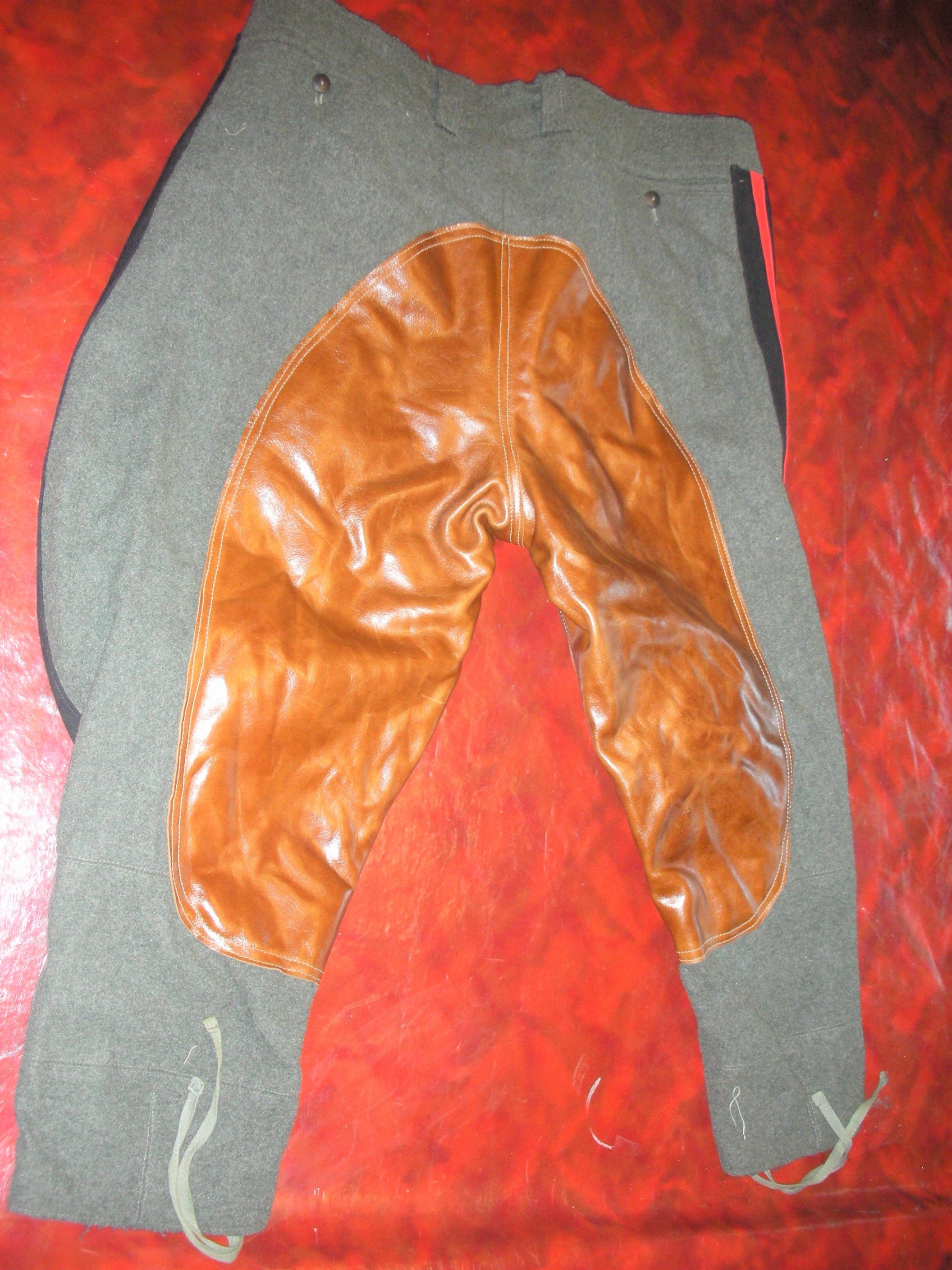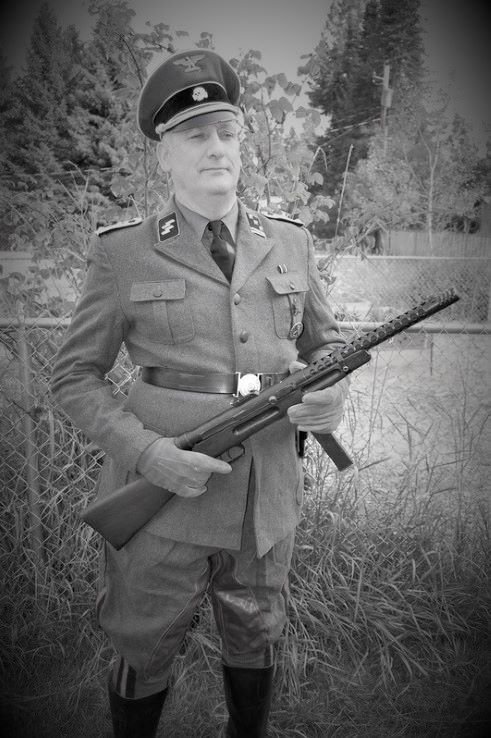Waffen-SS Foreign Volunteers:
SS-Oberscharfuhrer, 33. SS-Grenadier Division ‘Charlemagne’ (French SS-Legion):
Established to incorporate anti-communist French Volunteers into a divisional-level unit, "Charlemagne" probably never had over 2,000 soldiers. As the Red Army closed on Berlin, members of the division fought to the end. While the cuff title was never officially authorized, hand-embroidered ones were produced and worn by this member of the Pionier-Kompanie.
This well-seasoned NCO has seen action winning both the 1st and 2nd Classes of the Iron Cross, the General Assault Badge, and has been wounded at least four times. He wears the French National Shield on his left sleeve and the SS runic collar insignia. The Waffen SS was the original military organization composed of multinational troops fighting to keep the Soviets out of Western Europe. This NCO wears a standard wool M43 cap with SS insignia.
SS-Rottenführer 101. SS. Spanische-Kompanie:
The Spanische-Freiwilligen Kompanie der SS was a recruiting unit headed by Dr. Edwin Haxel, who had previously held a liaison position in the Spanish Blue Division. The Spanish company was sent to a training camp in Austria and later to another training camp in Vienna, and developed into the 101. SS Spanische Kompanie, which consisted of four Grenadier u. Stabs platoon. The Kompanie, consisting of about 140 men, was sent to the 28. SS-Freiwilligen-Panzergrenadier Division in Pomerania.
Retreating before the Red Army at Stargard, the German forces set up for the final defense of Berlin in April 1945. The Spanische-Kompanie was reassigned to and fought as part of the 11th SS-Freiwilligen Panzergrenadier Division “Nordland" in the ruins of Berlin. The Kompanie became known as Sturmabteilung “Ezquerra", commanded by SS Obersturmbannführer Miguel Ezquerra.
The SS-Rottenführer wears an SS Dienstanzug Model 1943 with the Spanish National arm shield sewn on the left sleeve. A former Blue Division veteran, he wears both German Eisernes Kreuz Second Class, the EK-I Badge, Infantry Assault, and Silver Wound Badge, and the Spanish Order of Military Merit Medal; perhaps he doesn’t have the ribbon-bar. On the right pocket is a BEVO Falange, the symbol used on the Spanish Fascist Party membership pin. On the Left, his Spanish party was founded in 1933 by José Antonio Primo de Rivera, who was the son of the former Spanish dictator, General Primo de Rivera. The Falange emphasized the national traditions of Spain and combined these with fascist ideology. The metal membership pin was sometimes worn.
Italienische-Freiwilligen der Waffen-SS 1943 –1945:
When the Italian Fascist Grand Council deposed and arrested Mussolini in late July 1943, Hitler immediately ordered the I. u. II. SS-Panzerkorps, along with 1. SS-Panzer-Division “LSSAH” was sent to northern Italy to assist German units there in the disarmament of Italian troops to prevent their support of the Allied or partisan forces. Troops loyal to the fascist cause garrisoned in Zagreb, Croatia, telegrammed the SS in Berlin requesting to be transferred into the Waffen-SS. This was immediately accepted by Reichsführer Himmler.
In August, Himmler ordered that Italian fugitives and deserters from the Italian army and the Italian Fascist Party should be detained and collected for absorption into the Waffen-SS. Himmler also increased recruiting from more elite Italian units such as the Alpini and the Bersaglieri. With the invasion of Italy on 3 September and the following armistice on 8 September, the German forces dissolved the Italian government and took control of the country. Feldmarschall Keitel ordered that any Italian troops unwilling to continue fighting for the Axis were to become prisoners of war.
Fascist prisoners are to be transferred to SS custody. By the end of the month, the disarmament is completed, and over 615,000 troops are moved to forced labor camps in Germany. In late September, Mussolini and Himmler met, and Himmler authorized the recruitment of Italian ex-fascists into the Waffen-SS.
These troops would receive better pay and rations than other Italian fascist units and were completely independent of the new Italian government. As recruitment efforts begin, much use is made of fascist propaganda techniques, such as a 3-fingered, palm-inward salute symbolizing ‘Onore, Corragio, Fedeltá’ (honor, courage, loyalty) and slogans such as ‘Per l'onore, per la vita’ (For honor and life).
Preparations for the first Italian SS unit begin in October with SS-Batallion, ”Debica” at Heidelager under Italian Major Guido Fortunato, a former Bersaglieri officer and former CO of the 6th Bersaglieri Regiment. Most of the Italian volunteers for the “Debica” come from the 31st Tank Battalion of the Italian Lombardia Division, plus former members of the Julia Alpine Division, bringing the initial unit strength to 20 officers and 571 men. At the same time, Himmler ordered the formation of the Italian Waffen Militz (Milizia Armata). The order specifies that the Milizia will consist of two divisions, one formed in 1943, the other in 1944. Himmler went on to order the immediate formation of Milizia Armata battalions to assist in anti-partisan operations in northern Italy. The Reichsführer orders that Italian units will fight only on Italian soil and will see front-line service as well as anti-partisan action.
29. Waffen-Grenadier-Brigade der SS Italienische Nr. 1:
Meanwhile, representatives of RSI (Italian Socialist Republic) Field Marshall Graziani are engaged in difficult negotiations with the OKW regarding releasing detained Italians for service in the new Italian Fascist Republic Army, the RSI.
The SS attempted to capitalize on the situation by mounting a recruiting campaign among the incarcerated Italian troops. Initial results are great as thousands of Italians volunteer to get out of the POW camps. The SS eventually had to spend much time and effort weeding out the “false volunteers” and the poor-quality troops. Italian soldiers deemed unsuitable for SS service were sent back to POW camps. On 9 October, SS-HA Kommandant Gottlob Berger reported that 13,062 Italian SS troops were gathered at Truppenübungsplatz Münsingen. An additional 1,700 Italian SS volunteers are en route from Dresden, with another 1,000 coming from southern France.
Qualification and training continue into November when, on the 11th, what is left of the 15,000 volunteers swear allegiance to Adolf Hitler, the supreme commander of Axis forces. The volunteers were given the choice to stay with the SS Milizia Armata or join the RSI, which is now the Italian army. 1,000 choose the army. The Milizia receives 8,000 troops, Fortunato’s ”Debica” receives 600, while another 100 are assigned to various specialist schools, including the SS Administrative School at Dachau and the SS Drivers Training and Replacement Battalion.
Milizia Armata troops wear Italian uniforms with SS-Litzen with another base color. Officers and NCOs will wear German-style shoulder straps
This Caporale Maggiore or SS-Rottenführer of the 1. Sturmbrigade Italianische Freiwilligen-Legion wears the Marine Modello 1941 Bluse with Bustina cap, which has a combination of metal standard SS-Totenkopf and Italian Republican Eagle. The rare red shoulder boards are crudely homemade over German boards. The Litzen, as well as the Maggiore chevron, is also locally produced.
A note on the helmet: The Italian Army began to engage in experiments to find a new model of combat helmet that could replace the aging one. The Adrian helmet, adopted in 1915, was originally a French design and, therefore, not suited for the new Fascist army that was going to restore Italy to its former glory. In 1932, after lengthy trials of prototypes from many Italian and foreign firms, the M31 helmet was adopted, but field use showed that modification to the ventilation system was required.
By replacing it with three ventilation, two on the sides and one on the rear, the Model 33 Helmet was adopted by the Italian Army on 29 November 1934. 29. Waffen-Grenadier-Brigade der SS On 23 November 1943, 13 Miliz-Battalions pledged their loyalty before being moved to SS-Ausbildungsstab Italien. Commanded by SS-Obergruppenführer Karl Wolff, the Italienische SS-Freiwilligen Legion was soon renamed 1. Sturmbrigade Italienische Freiwilligen-Legion. In April 1944, three battalions fought against Allied bridgeheads of Anzio and Nettuno with good results, for which Heinrich Himmler, on 3 May 1944, allowed them to wear SS-Runes in black rather than red and be fully integrated into the Waffen SS.
Members of the Vendetta under former Blackshirt Lieutenant-Colonel Delgi Oddi particularly distinguished themselves in defeating a determined effort by the U.S. 3rd Infantry Division to overrun their positions and capture several prisoners. On 7 September 1944, the Legion was renamed to Waffen-Grenadier-Brigade der SS Italienische Nr. 1 under Generalkommando Lombardia of Army Group C. By December 1944, the unit comprised 15,000 men.
In the spring of 1945, the division under the command of Ernst Tzschoppe as Kampfgruppe Binz fought against French units in Lombardy and the Partisans in Piedmont. On 30 April 1945, the division surrendered to US troops in Gorgonzola, Lombardy. Brigade members continued to wear Italian uniforms with Waffen SS-style insignia. M33 helmets are seen in period photos with SS Runes painted, often in very large format, onto the helmet. Helmets in collections show the application of the German-style runic decal to helmets. As did many Waffen SS soldiers, the soldier who wore this helmet had added fencing wire to hold camouflage, a common practice seen in photos. This helmet’s original chinstrap was replaced with a German strap. The original strap was riveted in place and was probably damaged. The German version could be replaced by the soldier with no special tools.
Enlisted, Italian SS. Volunteer, Italian Gray Uniform:
The smaller, better-quality, ardently fascist, pro-SS “Debica” Bataillon, along with the second SS-Bataillon “Vendetta,” would see front-line combat as part of the Italienische-Freiwilligen Legion, which was then renamed 1. Sturmbrigade Italienische Freiwilligen Legion. Renamed again in September 1944 as Waffen-Grenadier-Brigade der SS (Italienische Nr.. 1), the Italians then became 29. Waffen-Grenadier-Division der SS (italienische Nr. 1) in Marz 1945. The divisional number, 29, was used by Russische Nr 1, which was disbanded, and the number was given to the Italians.
As a result of the April 1944 combat against allied bridgeheads of Anzio and Nettuno, Heinrich Himmler ordered that from 3 May 1944,” Debica” and “Vendetta” volunteers would wear SS-Runes on black rather than red and be fully integrated into the Waffen-SS. On 15 Juni 1944 the Legion was reorganized in Fireze with fresh German and Italian troops and the Reichsführer-SS communicated the following order: ‘For valor demonstrated and with a sense of duty, the Italian legion of the 29th Waffen-SS shall hereafter adopt the black collar and grade insignia of the German SS and be eligible for all duties and rights of the German SS.’ The motto of the Italian SS-Division was ‘Per l'Onore e per la Vita’ which was similar to the German SS motto ‘Meine Ehre Heisst Treue’ or ‘My honor is my loyalty’ By the spring of 1945, the division numbered 15,000 and was under the command of Ernst Tzschoppe as Kampfgruppe Binz.
They fought against French units in Lombardy and the partisans in Piedmont until they surrendered to US troops on 30 April 1945 in Gorgonzola, Lombardy. The division was not named; however, the 29. SS, SS-Füsilier-Bataillon was named „Debica“ after the SS-Truppenübungsplatz Heidelager in Debica, Poland, where the unit was formed. The II. Bataillon, 81. Waffen-Grenadier-Regiment der SS was named “Vendetta,” which originates from the Latin “Vindicta”, which translates as “revenge.”
This Caporale Maggione or SS-Rottenführer displays the final insignia worn by a member of 29. SS- Füsilier-Bataillon “Debica” near the end of the war. This volunteer wears the SS runic Litzen, implying previous service with another SS unit before returning to his homeland.
SS-Unterscharführer, Sanitäts Abteilung 29. / Waffen-Grenadier-Division-der-SS Italianscher Nr. 1:
The 29. Waffen-Grenadier-Brigade der SS. On 23 November 1943, 13 Miliz-Battalions pledged their loyalty before being moved to SS-Ausbildungsstab Italien. Commanded by SS-Obergruppenführer Karl Wolff, the Italienische SS-Freiwilligen Legion was soon renamed 1. Sturmbrigade Italienische Freiwilligen-Legion. In April 1944, three battalions fought against Allied bridgeheads of Anzio and Nettuno with good results, for which Heinrich Himmler on 3 May 1944 allowed them to wear SS-Runes in black rather than red and be fully integrated into the Waffen SS.
Members of the Vendetta under former Blackshirt Lieutenant Colonel Delgi Oddi particularly distinguished themselves in defeating a determined effort by the U.S. 3rd Infantry Division to overrun their positions and capture several prisoners. On 7 September 1944, the Legion was renamed to Waffen-Grenadier-Brigade der SS Italienische Nr. 1 under Generalkommando Lombardia of Army Group C. By December 1944, the unit comprised 15,000 men in the spring of 1945.
This Sergente or SS-Unterscharführer from the Sanitäts Abteilung 29. Waffen-Grenadier-Division-der-SS Italienscher Nr. 1 has applied the regulation SS insignia to his Modello 1941 Bluse. He has removed the cloth belt, replacing it with a German leather style with leather first-aid pouches attached.
SS-Hauptsturmfuhrer, “Debica” Flusilier Battalion, 29 SS-Waffen-Grenadier Division. Der SS, 1945:
The Italian military loyal to Mussolini and the Fascist cause was grouped into several combat formations under various German Commands of the SS. Organized to defend the newly formed Italian Fascist Republic in Northern Italy, the division was trained to fight conventional as well as partisan forces. The Italian-SS fought as part of the German command but was Italian in makeup, including their officers.
This Haupsturmführer wears the final pattern uniform, which sees the Red-backed insignia used up to this time, replaced by the Black-backed SS insignia, but it retains the Italian Fascist Eagle in please of the SS-Sleeve eagle, just by all other Waffen-SS Forces.
The uniform itself, as well as the weapons and equipment, are all of Italian origin. This officer served in Russia with the Italian Army and was awarded the Iron Cross 2nd Class by the German high command. He wears a German Schirmmutz with the Italian Eagle applied over the Totenkopf ‘Deaths Head’, or his Italian Helmet, with large SS runes hand-painted on the side of it. His Italian breeks, black boots, and belt complete the uniform.
